






RACING’S WORKFORCE


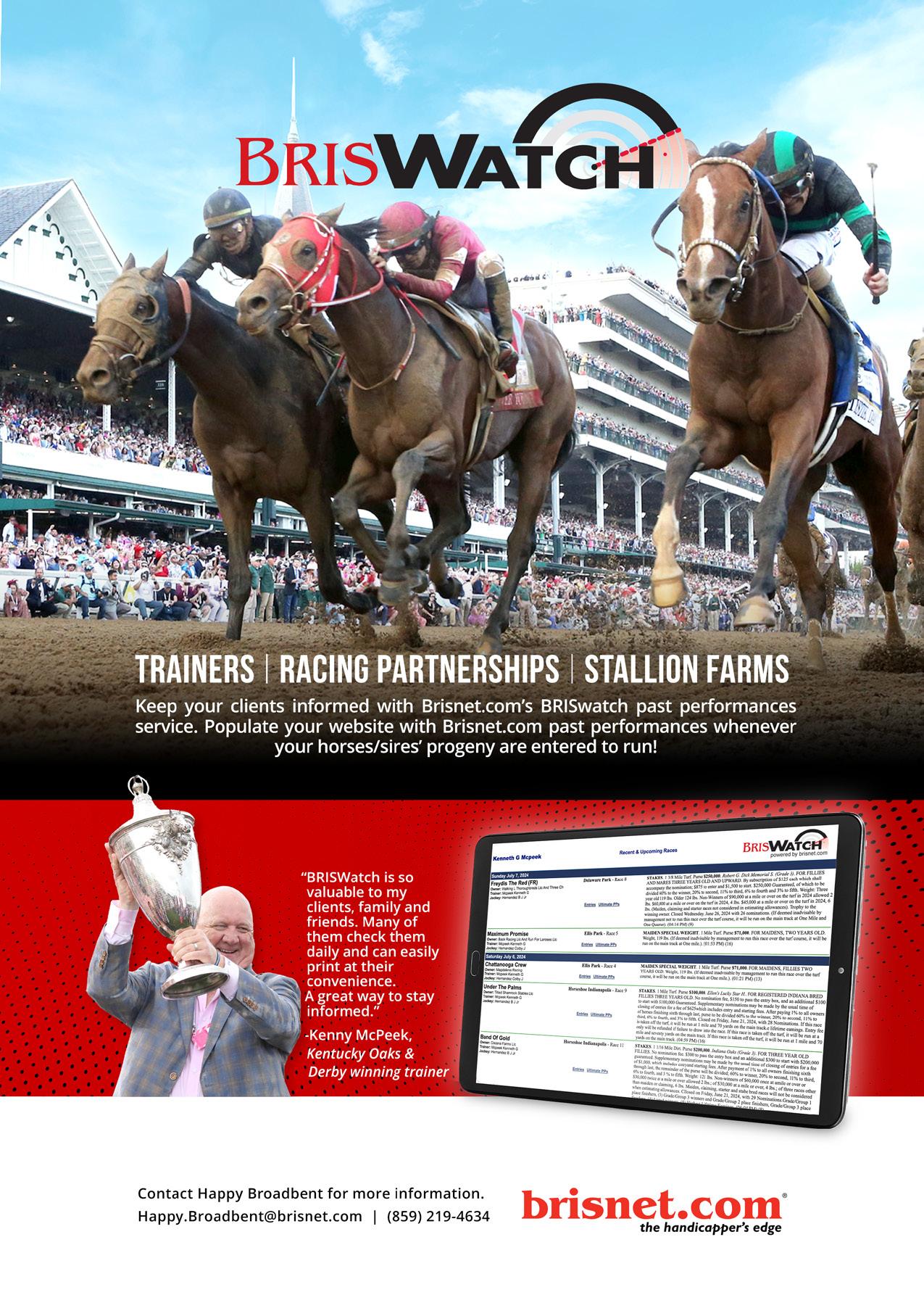


I’ve lost count of the number of people who have told me over the years that “it would be great if you guys could profile D. Wayne Lukas in the magazine.” Finally, we have him on the cover!
It’s always difficult for a writer to conjure up something new about a personality like D. Wayne who has probably had more words written about him, his training methodology and his life than any other trainer in the past fifty years.
Jennifer Kelly was given the challenge of writing his profile and coming up with a unique angle on him. She spent nearly a week in Kentucky, with D. Wayne and his wife, Laurie. Kelly also got plenty of insight from his former assistants and associates about what makes Lukas tick and what drives him on a daily basis.
As Kelly tells us, with all that he has achieved in his career, why then does the lifelong horseman feel this pull to mentor? “You walk around the backside and people say, ‘Horsemanship is gone. It’s lost.’ A lot of it is that horsemen are not there and being developed and so forth,” he reflected. “There’s a lot of truth to that
because the young people that come to the backside to train, you know where they come from? McDonald’s or someplace. They wake up and say, ‘I’d like to be a horse trainer.’ They say, ‘I’ll walk hots.’ And then they walk hots. The next thing you know, they’re grooming. And then they’re an assistant. Next thing you know, they got a trainer’s license.”
Lukas touches on an important subject, but for many the recruitment and retention of barn staff is just as big a cause for concern. It’s a concern shared by trainers around the world. So in this issue, Ken Snyder delves into the wages paid to staff in different countries, comparing the figures against the national average wage paid.
As I mentioned on this page in our Triple Crown issue, we would examine what the future holds for racing and breeding in California in this issue. John Cherwa, a special contributor to the Los Angeles Times, is a journalist who has been covering the racing and breeding industry in the Golden State for some time. So he is well placed to open his contact book and canvass views from a cross section of those who hold leadership roles in California racing.
It’s blatantly obvious that to grow, California racing needs to incentivize its offering. Additional revenue sources such as Historical Horse Racing machines could well be the answer, but for now my personal opinion is that the industry needs to work on a set of short, medium and long term goals that all key constituents can agree upon.
Reform can come, but unity is strength and that’s something that needs to be addressed in California racing.
Wherever your racing takes you this summer, good luck!

Editorial Director/Publisher
& Advertising Sales
Giles Anderson (859) 242-5025
Sub-Editors
Lauren Godfray & Nico Jeeves
Advert Production, Circulation/Website
Lauren Godfray (1 888-218-4430)
Cover Photograph Bee Buck Photography
Trainer Magazine is published by Anderson & Co Publishing Ltd.
Tel: 1 888-218-4430 Fax: 1 888-218-4206 info@trainermagazine.com www.trainermagazine.com
North America
PO Box 13248, Lexington, KY 40583-3248
United Kingdom
Ground Floor Office, 72 Medstead Road, Beech, Hampshire, GU34 4AE

Trainer Magazine is the official magazine of the California Thoroughbred Trainers. It is distributed to all ‘Trainer’ members of the Thoroughbred Horsemen’s Association and all members of the Consignors and Commercial Breeders Association, the Maryland Horse Breeders Association, the New Mexico Horse Breeders Association, the Pennsylvania Horse Breeders Association, the Alberta Thoroughbred Owners & Breeders Association and the Virginia Thoroughbred Association.
Alan F. Balch was hired as the executive director of the California Thoroughbred Trainers in April 2010. His professional career in racing began at Santa Anita in 1971, where he advanced to the position of senior vice president of marketing and assistant general manager, and was in charge of the Olympic Games Equestrian Events in Los Angeles in 1984. He retired in the early 90s to become volunteer president of the National Equestrian Federation of the USA, as well as of the National Horse Show of Madison Square Garden. He remains president of USA Equestrian Trust, Inc.
Jackie Bellamy-Zions has been Equine Guelph’s communications manager for the past 10 years and has over 30 years experience in the horse industry in the capacity of coach, trainer, stable manager, competitor, judge and journalist.
John Cherwa, formerly the sports editor at the Los Angeles Times and Chicago Tribune, has been covering horse racing for the Times since 2016. He primarily writes about the issues that dominate the sport and was the first to identify the fatality crisis at Santa Anita in 2019. He is currently tracking the precarious state of racing in California.
Bill Heller is an Eclipse Award-winning author who published his 27th book, Fred Hooper – The Extraordinary Life of a Thoroughbred Legend. His other biographies include Hall of Fame jockeys Ron Turcotte, Randy Romero and José Santos. Bill and his wife Marianne live near Gulfstream Park.
Adam Jackson, MRCVS was born in Canada but is now based in the UK where he is an independent vet at Jackson Equine, a modern independent vet practice. Initially, he started work in a mixed practice and then began to focus on equine veterinary medicine and surgery. In 2004, he became an equine ambulatory veterinary surgeon and later completed his Master’s in epidemiology of notifiable equine infectious diseases.
Jennifer S. Kelly is an author and freelance turf writer. Her first two books, Sir Barton and the Making of the Triple Crown and The Foxes of Belair: Gallant Fox, Omaha, and the Quest for the Triple Crown, chronicle the lives and careers of the first three American Triple Crown winners. She also contributes to The Racing Biz, America’s Best Racing, and TwinSpires Edge. Jennifer’s work focuses on both the history of horse racing as well as current events, drawing on her deep knowledge and experience to share stories of the names and faces of this great sport.
Jordin Rosser is the current IT Coordinator at Ocala Breeders’ Sales. With a newfound love of racehorses, she is ready to mix her passions of IT with the horse racing world and share all of the findings.
Catherine Rudenko is an independent registered nutritionist with a focus on Thoroughbreds. Based in the UK Catherine has worked in the USA, Europe and Asia with trainers and studs creating feeds and feeding plans customised to their needs and climate. With a keen interest in education and research Catherine works with professional bodies and universities to promote knowledge of nutrition and its importance in the management of Thoroughbreds and other breeds.
Ken Snyder is a current turf writer for Gallop magazine, and a turf/travel-culture writer for Kentucky Monthly magazine. His work has appeared, as well, in other publications, including The Blood-Horse He and his wife, Cassie, reside in Kuttawa, Kentucky.








Trainer Magazine (ISSN 17580293) is published 4 times a year: February, April, July and October by Anderson & Co Publishing and distributed in the USA by Modern Litho | Brown Printing, 6009 Stertzer Road, Jefferson City, MO 65101. Periodicals postage paid at Jefferson City, MO, and additional mailing offices.
POSTMASTER:
Send address changes to Trainer Magazine, Anderson & Co Publishing, PO Box 13248, Lexington, KY 40583-3248.


Graduates of the Keeneland September Yearling Sale have found—and continue to find—success at the highest levels of the sport in 2024. Keeneland is proud to celebrate their efforts and applaud their connections.
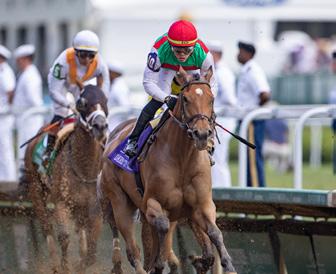


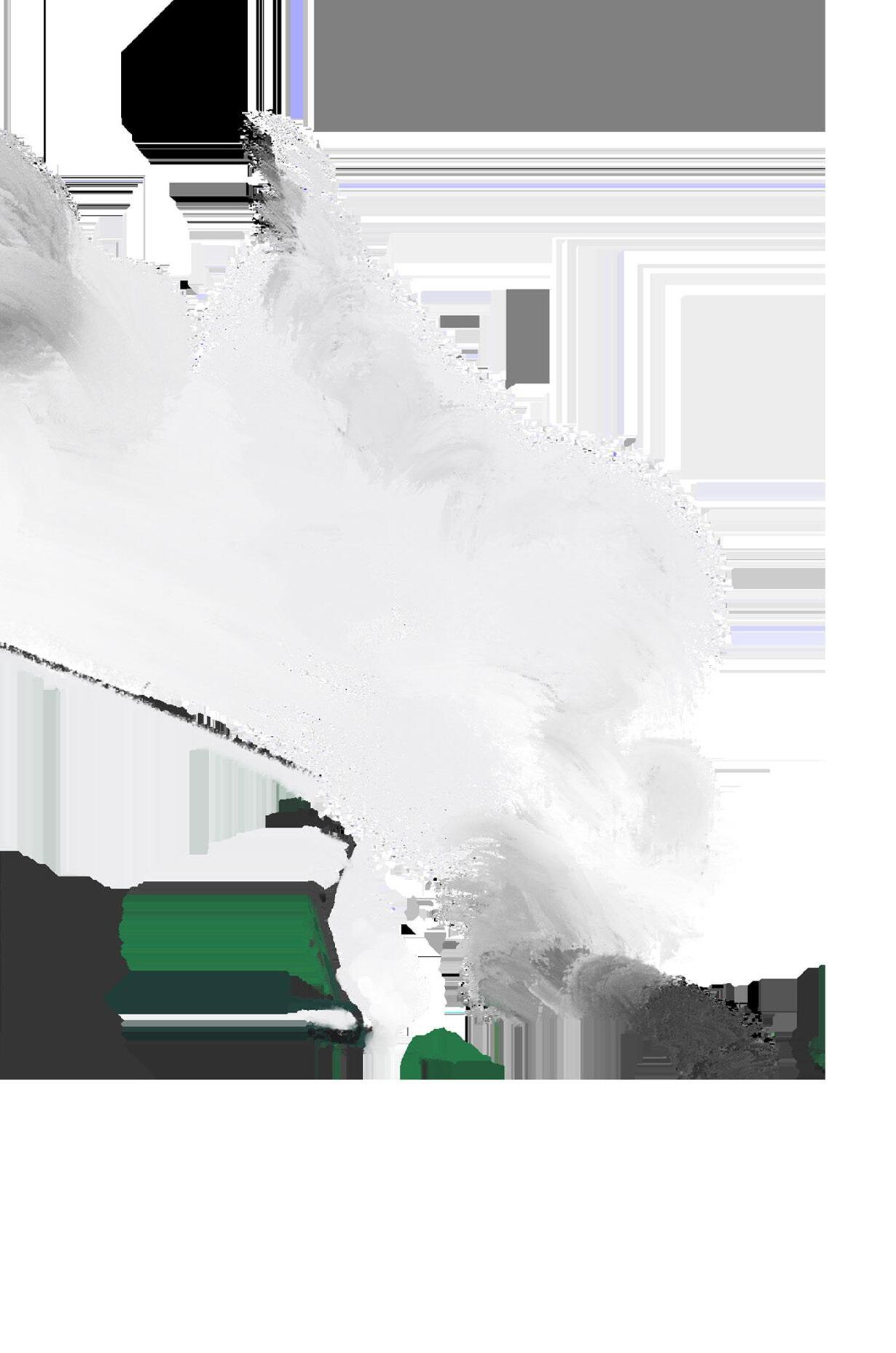



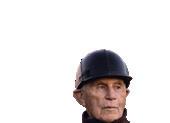




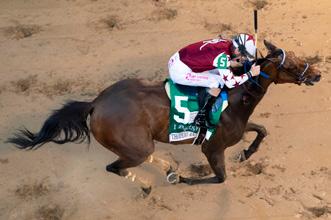

08 D. Wayne Lukas - doing it his way!
Jennifer Kelly profiles the Wisconsin native D. Wayne Lukas and how he has reaped the rewards of his passion and perseverance to still be a master horseman at 88 years old.
26 Feed patterns and behavior of horses in training
Catherine Rudenko asks why do we keep on losing the battle with ulcers?
34 Bloodstock Briefing
Jordin Rosser reviews opinions on enhancing the yearling sales middle market.
40 Farm trainers
Ken Snyder looks at how behind every good horse, is a farm trainer that has given the horse the best grounding experience.
48 Strangles research
Jackie Zions interviews Dr. Scott Weese on the latest Strangles research available testing for ultimate sensitivity to avoid infection.
52 Staffing racing
Ken Snyder looks at what is being done to increase racing’s workforce in different countries around the world.
58 Optimizing youngstock growth and development
Adam Jackson reports from the Gerald Leigh Memorial Lectures 2024.
64 Graded Stakes winning owners
Bill Heller features Atlantic Six Racing, owners of Book’em Danno who was victorius in the Woody Stephens Stakes, Judy Hicks whose Thorpedo Anna won the Kentucky Oaks and Steve and Debbie Weston (Parkland Thoroughbreds) with Porta Fortuna, who followed up her Coronation Stakes win at Royal Ascot with another Gp.1 win in the Falmouth Stakes at Newmarket.
74 What would you do to make California racing great again?
John Cherwa canvasses a cross section of opinions from those involved in racing and breeding in the Golden State.
06 View from the CTT Alan Balch –Principles of marketing
82
#Soundbites
Bill Heller asks “What is the most difficult aspect of training?”
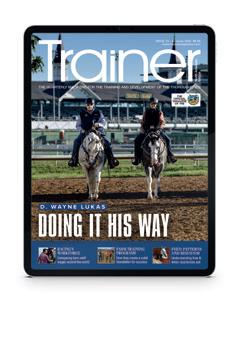
Visit trainermagazine.com to download our current digital editions and access back issues of both European and North American Trainer.





When I first joined the management of Santa Anita in 1971 (that’s right, over a half-century ago), one of the earliest meetings I had with its leadership made an everlasting impression on me.
Indoctrinating me were Robert Strub, son of the track’s founder Charles H. “Doc” Strub, and General Manager Fred Ryan, who had worked for Eugene Mori (of Hialeah, Garden State Park, and Tanforan fame). Giants of American racing evolution I had been placed in charge of ‘public relations’, which included advertising, promotion, and publicity. The term ‘marketing’ had only recently become relevant to most businesses and had not yet been applied to racing management anywhere in the world. The first thing I had to remember, I was told, was that free admission to boost attendance was never to be suggested. As Mori had once famously said, “the view alone at Santa Anita is worth the price of admission.” Ryan added, “we have the tightest gate in racing, and it’s going to stay that way.” Non-betting sources were 50% of revenue then, remember.
Then, Strub had his say. “My father always warned that we can’t let ourselves go the way of buggy whips. We continually need new, young thinking, and that’s why you’re here.” I guess I don’t have to add that way back then, there was a thirty-year age gap between mine and the next older department head on the track staff. My assigned task, my only task, was to drive attendance. “Don’t worry about anything else,” Strub advised, “you get them here, and the betting will take care of itself.” True then. Still true.
Marketing for profit never changes. What’s old is new. In these pages two years ago, I extolled the virtues of Royal Ascot. Especially its continually advancing marketing, under Ascot’s director of racing and public affairs, Nick Smith, who says (and way more important, does) the right things.
So, too, says (and does) Mark Taylor, of Taylor Made Farms and through Medallion Racing a partner in a Royal Ascot Gp.1 winner Porta Fortuna.
Both of them understand marketing in the old Santa Anita way, now lost from much of American racing, especially in California. Real marketing is an investment, not principally an expense. It is also an attitude. A way of doing business. The only way ancient businesses (which racing and breeding certainly are) can survive in a constantly changing and increasingly competitive world. Engaging and funding proper marketing, rightly understood, is the necessary if not the sufficient condition for the survival of any business enterprise in the modern world. And, sad to say, most of what now passes for ‘marketing’ in California racing is anything but.
Here’s Taylor, for whom Royal Ascot was “beyond my wildest expectations. However they have done it, everybody who works there genuinely takes an interest in the customer experience. What I really took away from it for our organization is more training and spending more time getting each employee to really put themselves in the customer’s shoes. And say, ‘how can I make this an incredible experience for them and let the person know I care.’”
This very quotation could have been lifted right out of Philip Kotler’s foundational textbook, ‘Principles of Marketing’, which was the inspiration for modern marketing beginning in the late 1960s. “Marketing is sales from the customer’s point of view.” Further, Kotler advised that marketing point of view had to be ingrained in all functions of any organization, from operations to finance to production, in order to optimize success. And that was no easy task, since that marketing point of view … as it begins to succeed at all

levels and results in growth … creates more and more hard work for everyone in every function, as well as a new mindset.
Emphasizing the critical nature of attendance at the races, not just betting, Ascot’s Smith mirrored those comments: “Hospitality was at record levels this year, with 13 Michelin stars across the kitchens, but that top-end fine dining option is quite resilient whereas general ticket sales aren’t always. The racing is at the heart of it for a lot of people. You have a competitive interest betting product as well as racing at the highest level, and all of these things need to come together. We have huge positives which we need to promote and be proud of. This is a time to step back and say let’s look at what’s really good about the sport, promote it, be proud of it and build from it.” Amen, I say. Where racing is struggling (including California), failures of marketing and management are critical reasons. Even Del Mar, long the brightest light in the West, has dimmed. Where boisterous big turnouts of over 40,000 stormed the track in the last decade, the largest attendance last year was barely over 20,000. For the last three years, just over the 10,000 mark attended its marquee $1-million Pacific Classic, half to a third of what it had drawn historically, supposedly in the name of ‘superior customer experience’ for the relatively few present! The abysmal attendance at the last Breeders’ Cups at Santa Anita, and on its own prestigious days, were actually fractions of the figures announced.
Since its origination some 300 years ago, racing as a sport and enterprise has been relentlessly confronted by change and competition. That it has survived at all is remarkable, I suppose, but also a tribute to its majesty and allure … when presented, managed, and marketed properly. Look not just to Ascot, but also to Belmont at Saratoga, to Keeneland, and to Churchill Downs: investment, renewal, and sophisticated, integrated marketing, both industrial and consumer, with all its modern tools, are essential to racing’s future.
Many say that the future of racing has little to do with attendance at the track. If that is so, where will all the breeders, trainers, owners, and bettors come from?


In his signature white Stetson hat and sunglasses, the white-haired gentleman made his way from his grandstand perch through an undulating crowd toward the infield winner’s circle. The veteran horseman moved purposefully through the fray, his cane his only concession to his age. His peers, many of them decades younger, clasped his hand in congratulations as the masses parted for this icon. Under a gray sky, beside a glossy gray horse draped in yellow and black, D. Wayne Lukas reaped the rewards of his passion and perseverance as he collected another record: at 88 years old, the oldest trainer to win a Triple Crown classic.
As an elder statesman of the sport, Lukas is a man of contrasts. He grew up on a rural Wisconsin farm cultivating an innate love of horses and then pursued that passion while he developed his leadership skills working as a high school teacher and basketball coach. That legacy carried over to training Quarter Horses and then Thoroughbreds, his nickname ‘the Coach’ carried over from the court to the racetrack. As the ultimate visionary in racing, he built a career innovating the sport while staying committed to simplicity, even eschewing the
now-ubiquitous smartphone for its understated cousin, the flip phone, and continuing to supervise both the horses and the people in his charge daily. Successes from the grind of earlier decades have afforded him opportunities that few get: the chance to continue doing what he loves on his terms and his timeline, simultaneously unhurried and ambitious.
At an age when most might have already called it a day, the Wisconsin native continues to find joy in rising before the sun, mounting his pony, and overseeing the collection of current and future stars in his barn, including Preakness winner Seize the Grey. In his decades on the racetrack, Lukas has filled a multitude of roles – from trainer of equine athletes to teacher of generations to ambassador for the sport he loves – and he has done it all his way.
To say that Lukas has won only two Triple Crown classics plus a Kentucky Oaks since 2013 is a statement about the impact that he has had on the sport nearly fifty years after switching from Quarter Horses to Thoroughbreds full time. His resume is familiar to the generations that watched him at the track or on television during his most dominant years in the 1980s and 1990s, a tally of achievements that make his enduring drive all the more extraordinary.


Since 1978, D. Wayne Lukas has won the Kentucky Derby four times, first with Winning Colors, the third and most recent filly to win the Run for the Roses, in 1988; the Preakness Stakes seven times, from Codex’s victory over Genuine Risk in 1980 to Seize the Grey’s gate-to-wire win in 2024; and the Belmont Stakes four times, including dual classic winner Thunder Gulch in 1995. The trainer was on the cusp of the Triple Crown in 1999, the same year he was inducted into the National Museum of Racing and Hall of Fame, after Bob and Beverly Lewis’ Charismatic won the Derby and the Preakness and then was on the lead in the Belmont stretch before an injury ended both that bid and the horse’s career.
In addition to his success in the three-year-old classics, Lukas has trained five Hall of Famers (Lady’s Secret, Winning Colors, Azeri, Serena’s Song, and Open Mind); had former assistant Todd Pletcher join him in the Hall of Fame in 2021; and then was inducted into the Quarter-Horse Hall of Fame in 2007. He claims a record 20 Breeders’ Cup victories, four Eclipse Awards for leading trainer, and nearly fifty Quarter Horse and Thoroughbred champions, numerous graded stakes winners, and a multitude of fans from the kids he pulls into the winner’s circle to names like MyRacehorse’s founder and CEO Michael Behrens and journalist Christina Bossinakis, co-author of Lukas’s 2019 book Sermon on the Mount.
His latest Preakness win with Seize the Grey is his third graded stakes win of 2024 and his second with the son of Arrogate, who also took the Gr.2 Pat Day Mile on the Kentucky Derby undercard. Lukas also enjoyed success with Secret Oath, a daughter of the late Juddmonte sire with whom the trainer got his fifth Kentucky Oaks in 2022. “I’ve had such good luck with the Arrogates,” the trainer reflected. “Boy, that’s tragic that we lost him because he was destined to really be a good one.”


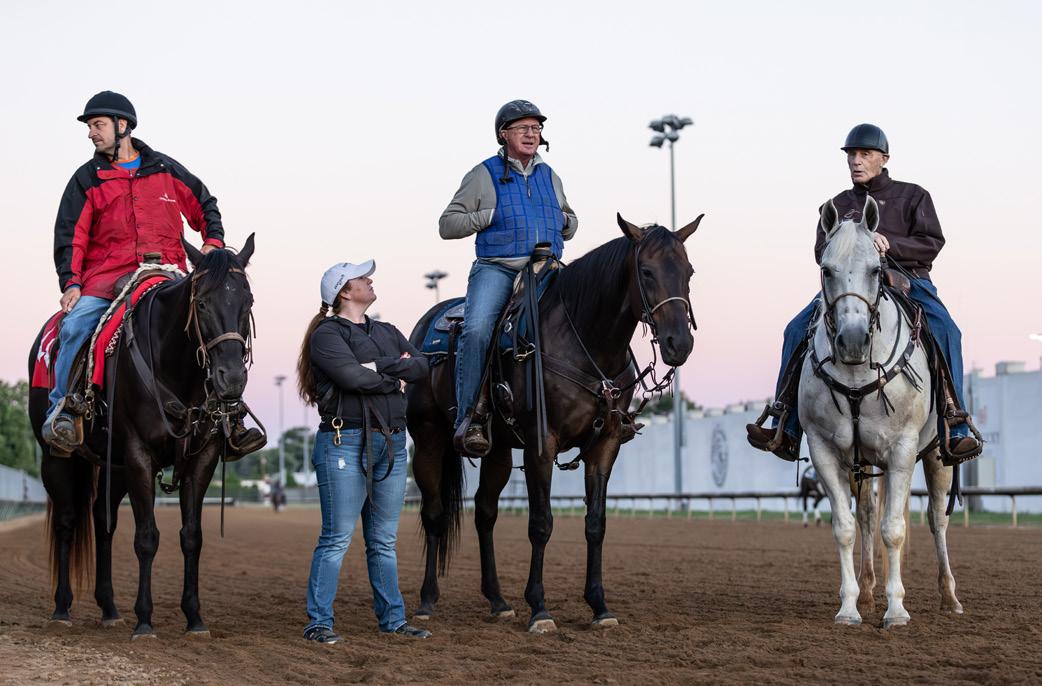
Seize the Grey is part of Arrogate’s last crop of foals, bred by the late Audrey “Tolie” Otto’s Jamm Ltd., and purchased by MyRacehorse for $300,000 at the 2022 Saratoga Yearling Sale. When it came time to choose a trainer, Michael Behrens, founder and CEO of the microshare syndicate, thought the colt would be a great fit for Lukas’s program.
“I saw his success with Secret Oath, and that was an Arrogate, and that got him back in my purview and watching and just being a little bit more cognizant of what he was doing down in Oaklawn. Watching the success that he was having at a later stage in his career, I was impressed,” Behrens shared. “This horse was built like a horse that we thought would do well in his program. We know that Wayne is not afraid to run a horse, and that’s one thing that we love to do is race. With his strength and physical attributes, he just felt like a horse that we thought would thrive in that type of environment.”
Additionally, Behrens knew that bringing Lukas on was going to create a special connection for each person that paid $127 to buy a share of Seize the Grey. Even before the colt made his first start, having the Hall of Fame trainer attached was an irresistible opportunity for potential owners. “To say, I own a horse with D. Wayne Lukas, [became] the reason they bought the horse,” Behrens shared. “It didn’t matter what the horse looked like, the walk, the pedigree. So many people come to me and say, ‘I bought in because of one reason: I just wanted to own a horse with the Coach.’”
Lukas understands the significance of his part in the Preakness win for those owners. After his first reaction to the colt’s victory –“Well, I did it again” – the trainer knew that “I had just made 2,570 people happy. I didn’t realize how happy, but they were really happy.” The winner’s circle was filled with just a fraction of the men and women who had treasured the possibility of winning with D. Wayne Lukas enough to invest their money with no promise of a return. When it comes to the Hall of Fame trainer, though, nothing is outside the realm of possibility.
Seize the Grey is the first horse MyRacehorse has sent to Lukas; Behrens and company has since added two more to his
barn. The Hall of Famer has become “an ambassador of MyRacehorse, which has been great. He’ll say things like, ‘I got to go check with the 2500 owners first before we make a decision,’” Behrens laughed. “Everybody loves it. It’s great for us. It really reinforces all the time that this horse is fundamentally owned by the people. It’s given our brand just a lot more awareness. It’s given it more clarity, which has been helpful.”
Seize the Grey gave Lukas his 15th Triple Crown classic victory. That number is the tip of the iceberg when it comes to what the Wisconsin native has achieved since he started training Quarter Horses full-time in 1968 and then switched to Thoroughbreds a decade later.
Lukas’s resume puts him on par with legends like “Sunny Jim” Fitzsimmons and Ben Jones, both of whom were private trainers for the sport’s largest owners in a time when a singular home base was the norm. In his time as part of a sport deeply rooted in tradition, Lukas turned that on its head and molded racing’s previous business model into one all his own. From the paddock on race day to the backside every day, he has left no aspect of his operation untouched by his vision and influenced the practices of many other trainers in the process.
“When I first started with the Thoroughbreds, I came to the paddock a couple of times, and I didn’t have the right blinkers. I did have some of the things I wanted, the pommel pad and so forth. So, I thought, that’s a simple fix,” Lukas remembered. “We got these bags made, big shopping bags, and we put our stuff in there. Do you know that within, I’m going to say two weeks, almost every trainer on the backside had their shopping bags made up?”
In the early days at Santa Anita, “we’d bed deep on straw. Everybody then was pulling a drag sack, where they threw everything on it and dragged it to the bin. And so, I thought this is not the way to go,” the trainer shared. “I went right down to the maintenance guy, and I said, ‘I want you to make this big wide wheelbarrow. It just barely fits through the doors of the stall [and] go at least three quarters in. Just put a nice big tire on it and everything.’ He made, I think, four or something like that.
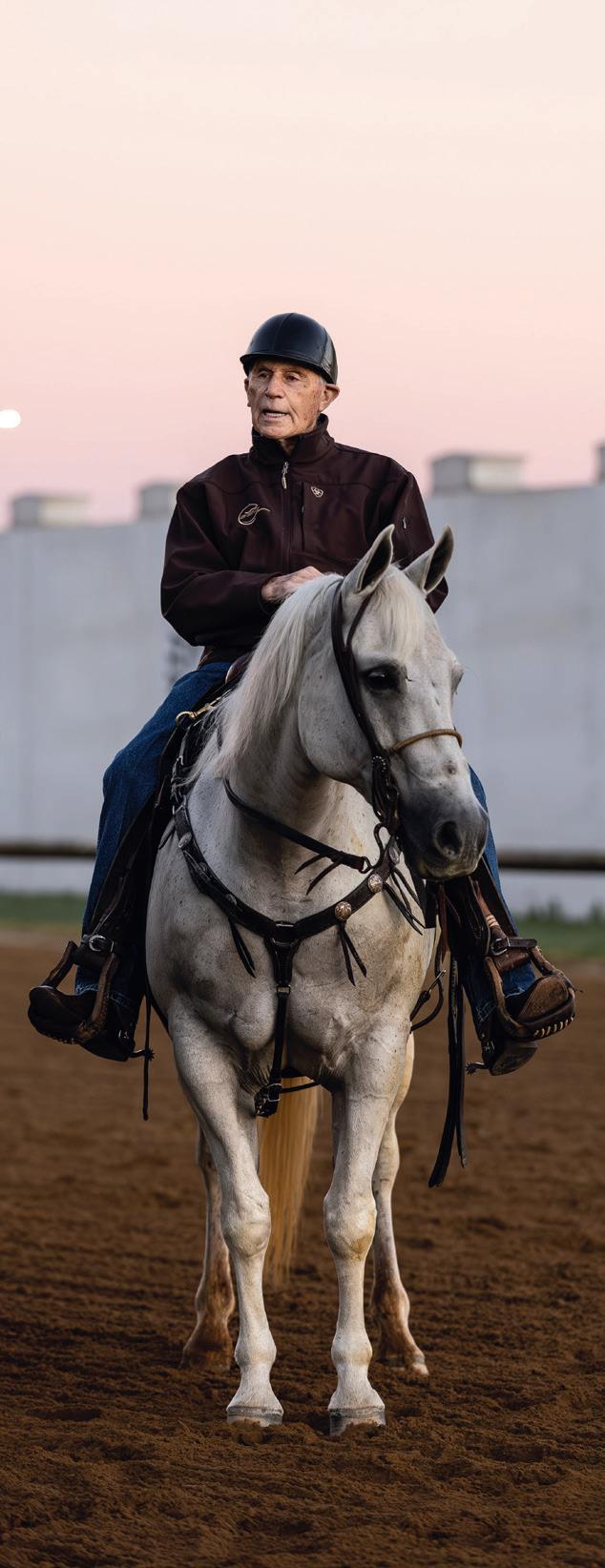
Guess what? Soon everybody else had one, too. Two months later, Western Saddlery mass-produced them and sold them all over the country.”
His innovations went beyond his California base and spread coast to coast. Building on Jack Van Berg’s multiple divisions, Lukas had four barns coast-to-coast, each staffed by a star-studded list of assistants, and supported multiple racetracks rather than focusing on one or two. “He didn’t have 200 horses at one location. We ran at Monmouth, we ran at Belmont, and we ran in Kentucky” former assistant trainer Kiaran McLaughlin recalled. “Today, Todd and Chad would have over 100 horses at Saratoga trying to be the leading trainer, but Wayne never really did that. He kept the horses at different locations and helped each racetrack that we were stabled at.”
The former educator and basketball coach translated his experience managing players and students into mentoring his employees, especially his legion of assistant trainers, as he taught them to do it his way. “As a head coach, you have to delegate responsibility in some of the teaching or training. And that came out real strong with me,” Lukas shared. “Every one of those four divisions that we had were not any different. You could go to any one of them, and you would absolutely know exactly what the policy was.”
That background extended to the horses in his barns, as the trainer placed his charges where they would perform best, giving each one a shot in the right conditions rather than focusing on a chosen few as other trainers would do. “When we first started out, I said, ‘You know what you need to do here is we need to grade these horses. And then after we grade them, we need to decide where they can compete effectively,” Lukas explained. “Can these four horses or five horses or six horses, can they compete at Turfway? Or are they a better set of horses that we can take maybe to Monmouth.’ And we started grading those. We started grading three levels. Pretty soon we had four because we got so many horses.”
In the late 90s and early 2000s, as clients like William T. Young’s Overbrook Farm and Gene Klein passed away and other owners got out of racing, Lukas had progressively fewer horses to work with. That change meant the Wisconsin native had to adapt. His stable gradually transitioned from four barns to one. The same practices are there, but on a different scale. Lukas maintains that “the only thing I’ve changed, I think, is that I read into the horse a little bit better.” He still marks his training chart after each day’s session. He talks with assistant trainer Sebastian Nicolls, listens to feedback from his employees, “and then I sleep on it. The next morning, I walk in there and maybe say, ‘You know what? That filly, she’s only had seven days’ rest, and she’s going to run back in three weeks. I think I’ll give her two more days.’”
At the core of his ability to adapt are the skills that brought him the most success: his innate relationship with the horse. “I think, fundamentally, he was practically born on a horse. He certainly grew up on horses. He wasn’t exposed to the greatest of horses when he was a very, very young man. He really learned all the basics of horsemanship from the ground level,” co-author and friend Christina Bossinakis observed. “I think he also been able to create a system and a discipline within his operation that has been proven to be successful.”
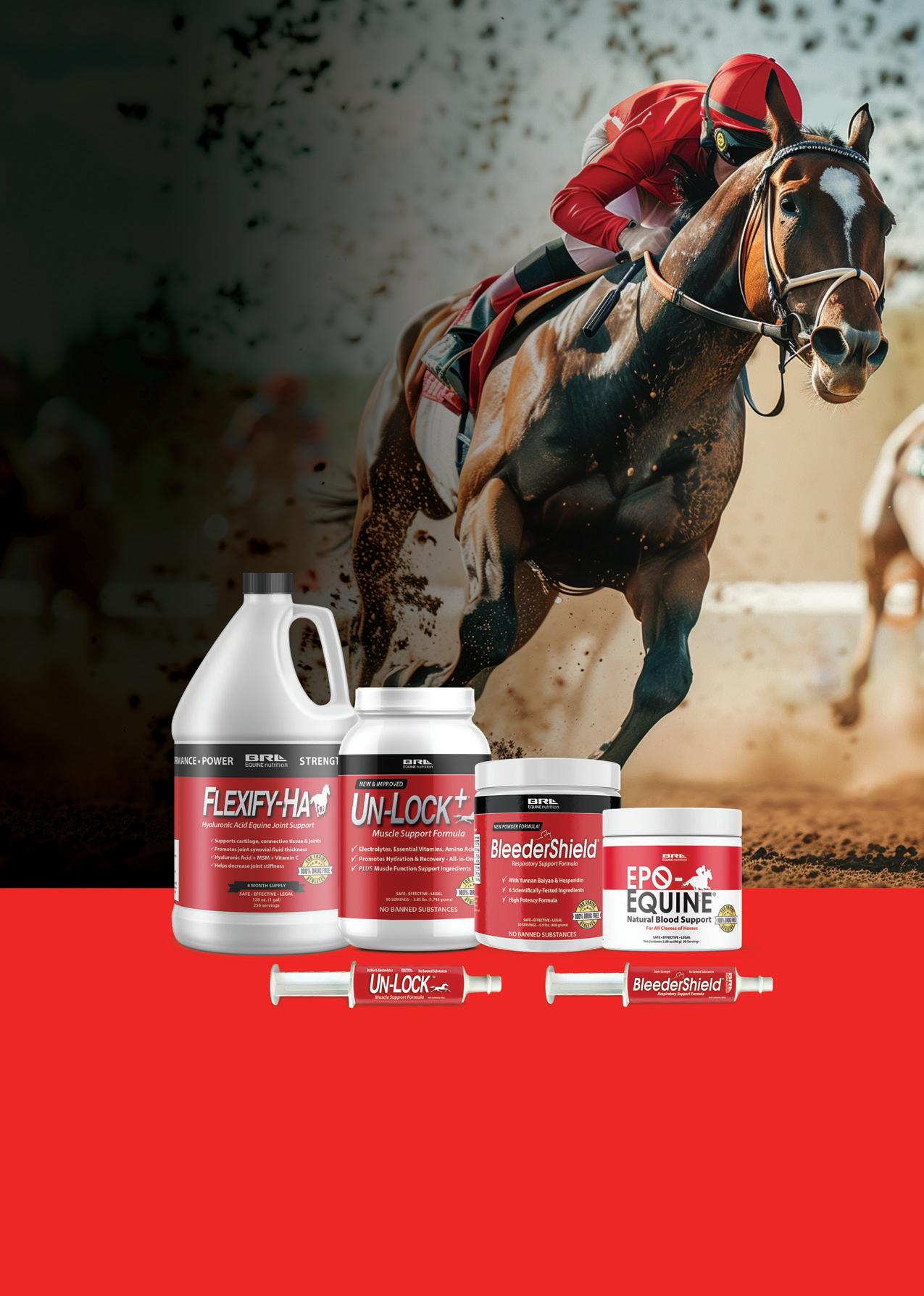


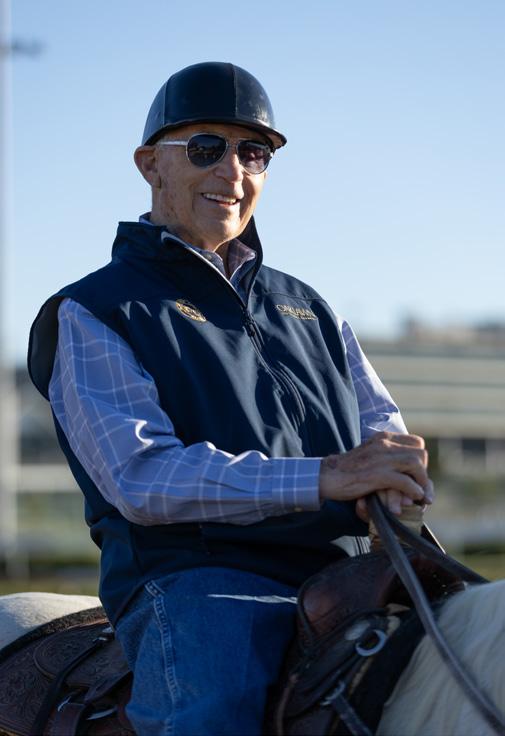

In addition to the day-to-day work with his current charges, Lukas finds the possibility of what’s next inherent in yearling sales as thrilling as a Gr.1 win. “At this period of my life, I probably should have somebody look at them and make a short list and give me the short list. But I don’t do that. I get right in there and go barn to barn. I’ll have a score on each,” the horseman shared. “I look at everyone there and enjoy the whole process.”
His ability to pick out future athletes is one part of the process that has propelled Lukas from high school basketball coach to horse trainer. That fresh blood motivates him to look forward to the next race, the next season, giving the restlessness that comes from his indomitable drive to an outlet. Yet if observers imagined that he has another Kentucky Derby win or another Breeders’ Cup victory motivating him, Lukas makes it clear that is not what drives him. Rather than the big picture, this horseman’s focus is simpler: “My goals are daily. My goals, they fall in there. Here’s the way I live my life: Every morning when you wake up, you or me, I want you to try this. You have a few seconds of an attitude adjustment. Now, I wake up and I say, ‘look, I’m tired. I know I’m tired.’ But I wake up and I say to myself, ‘I’ve been blessed by God to have a talent that is unique. I’m not going to waste it today. I’m going to use this talent today to get better than I was yesterday.’ And with that, will come a Derby or a Preakness.”
“I wake up with the idea that I need to give my clients a fair chance to succeed. And it’s not easy with every horse, but I think that it’s very important that I go to work trying to give them a chance to succeed,” the Hall of Famer shared. “If any client moves a horse tomorrow, I wouldn’t worry because I feel comfortable that I at least gave it every chance to succeed.”
Never one to rest on his laurels, Lukas strives to get the best out of his horses, his employees, and, most of all, himself each day. His passion for what he has done since his youth and the success he has cultivated from his skill set both propel him forward and free him to enjoy the journey there.
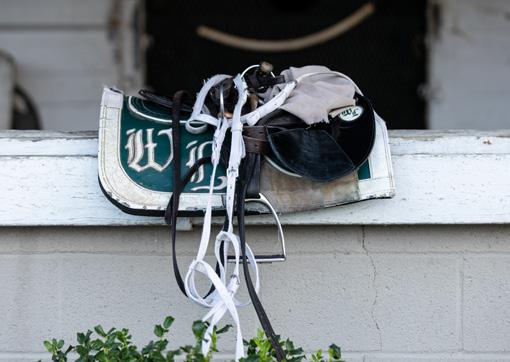
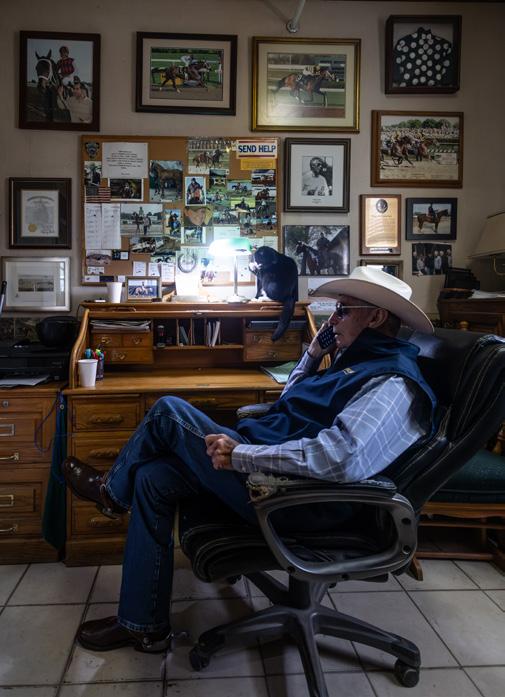

SAINT LIAM STUDENT COUNCIL JAZIL WAIT A WHILE FROST GIANT RAGS TO RICHES DIAMONDRELLA BELLE GALLANTEY COURT VISION QUALITY ROAD

SHARED ACCOUNT MORNING LINE LAST FULL MEASURE PATHFORK SWAGGER JACK DIALED IN GEMOLOGIST GRAYDAR IN LINGERIE LIAISON MAIN SEQUENCE PALACE MALICE HONOR CODE SHARED BELIEF STRONG MANDATE CURSORY GLANCE ZIPESSA
GIFT BOX CISTRON CITY OF LIGHT DANCING RAGS FLAGSTAFF MOZU ASCOT SWITZERLAND MCKINZIE MOONSHINE MEMORIES MOZU SUPERFLARE CODE OF HONOR CONCRETE ROSE GAME WINNER IMPROBABLE KEEPER OF THE STARS VEKOMA WAR OF WILL COLLUSION ILLUSION EXPRESS TRAIN MAX PLAYER FLIGHTLINE TRIPOLI
ELITE POWER FIERCENESS STUDENT COUNCIL JAZIL WAIT A WHILE FROST GIANT RAGS TO RICHES DIAMONDRELLA BELLE GALLANTEY COURT VISION QUALITY ROAD SHARED ACCOUNT MORNING LINE LAST FULL MEASURE PATHFORK
IN THE LAST 20 YEARS
SWAGGER JACK DIALED IN GEMOLOGIST GRAYDAR IN LINGERIE LIAISON
MAIN SEQUENCE PALACE MALICE SHARED BELIEF STRONG MANDATE CURSORY GLANCE ZIPESSA GIFT BOX CISTRON CITY OF LIGHT DANCING RAGS FLAGSTAFF MOZU ASCOT SWITZERLAND MCKINZIE MOONSHINE MEMORIES MOZU SUPERFLARE CODE OF HONOR CONCRETE ROSE GAME WINNER IMPROBABLE KEEPER OF THE STARS VEKOMA WAR OF WILL COLLUSION ILLUSION
51 G1 WINNERS 8 BREEDERS’ CUP CHAMPIONS 11 ECLIPSE CHAMPIONS WERE SOLD OR RAISED BY LANE’S END

EXPRESS TRAIN MAX PLAYER FLIGHTLINE ELITE POWER FIERCENESS


Seize the Grey’s Gr.1 wins are a reminder not only of what the man conditioning him has accomplished, but also the horsemanship that brought him multiple graded stakes wins nearly every season for the last 46 years. “We’re such a resultoriented sport, like most things are,” MyRacehorse’s Behrens observed. “The reality is that it’s these big wins that bring everything back to everybody’s memory. It’s nice for him to have the acknowledgement again of his success and his expertise.”
The Preakness shows who the Hall of Famer truly is as his barn and his business has changed. How does he still do it at age 88? “I mean, it’s simple. He has a recipe. He has optimism, and he has the work ethic,” fellow trainer Ron Moquett, who has known Lukas since the 1990s, said. “If you believe you can do something, and you’re willing to work it doing something, then you can do it. And he’s proven it over and over. Age doesn’t matter. He believes he can do it. He’s willing to put forth the effort to do it, and he shows everybody he still can do it.”
“He’s just always been a very driven human being. Very driven. He likes perfection. He likes success. He likes accomplishment. He likes to get things done,” Bossinakis shared. “When we were working on the book, he would call me early, like super early in the morning. And then maybe I might not answer, and then I’d call him back at 8:00. And he would say to me, ‘What? Why? You’re still sleeping? You’ve missed half the day!’”
Even with fewer horses, both Secret Oath and Seize the Grey show that this coach still knows how to find the best in his charges. As McLaughlin observed, “a good coach needs good players, and he’s capable with good stock. And he used to buy the best of horses, and that has slowed down some, obviously, because he doesn’t have that many owners to buy for. He went from buying maybe 50 horses to 8 or 10. So that’s all just different. But he’s still a very capable trainer and a great horseman, and as long as his eyesight is good, he can train.”
The only change evident in Lukas is his age. Everything else about the 88-year-old edition mirrors his earlier iterations, from his rise and shine time to his attitude about his work in his latest decade. He may have one barn and 40 horses rather than four with 150 head, but he remains the same trainer, supervising his equine athletes while advising his staff and mentoring his contemporaries. “With winning comes a certain amount of passion to keep you going,” the trainer reflected. “But also, when you win and you win consistently, those guys that are coming behind mind you, the younger ones, they’re watching.”
That competitive drive makes this Hall of Famer ageless and fuels him to continue moving forward, as wife Laurie noted. “It’s just the passion for it. I mean, I have a lot of passion for the horse business and for horses, but I can’t match [him]. I don’t think anybody can match his passion. I’ve never seen anything like it.”
“He’s very proactive. I think that’s part of just his makeup. But I also think it’s what keeps him driven to keep accomplishing and doing more,” Bossinakis echoed.
That passion not only drives Lukas to the barn every morning, his 35-minute commute a chance to reflect on what he can do with his day, but it also moves him to share a lifetime’s experience working with equine athletes with his younger contemporaries.
Lukas’s childhood in Wisconsin provided the foundation for two essential aspects of the man: his love for horses and his drive to teach and to develop. First, he spent nearly a decade as a high school teacher and basketball coach, using his summers to train Quarter Horses on the side. His eventual shift to training full-time did not diminish his joy in coaching as he used those skills with his employees as he had done with his students. Early on, when he was building his stable and making a name for himself, he was focusing his mentorship on those working under him, trainers like Kiaran McLaughlin and Dallas Stewart.
Sept. 28
Sept. 28 California Crown Eddie D Stakes (GII)
Sat, Sept. 28 California Crown John Henry
Turf Championship (GII)
Sept. 28



Sept. 28 Unzip Me Stakes presented by
Sept.29
Sept. 29
Oct. 5
Oct. 5
Oct. 5
Oct. 5
Oct. 5



Sun, Oct. 6 Zuma Beach Stakes (GIII)
Sun, Oct. 6 Surfer Girl Stakes (GIII)
Sun, Oct. 6
Sat, Oct. 12
Sun, Oct. 13
Mon, Oct. 14
Sat, Oct. 19
Sun, Oct. 20
Sat, Oct. 26
Sun,Oct. 27
5 F (Turf)
8 F (Turf)
and Mares 3-Year-Olds & Up, 6.5 F (Hillside Turf)
and Mares 3-Year-Olds & Up, 8 F (Turf)
3-Year-Olds, 8 F (Turf)
“He was a fabulous coach and teacher. Not that many of us spent every day with him, but we spoke to him, and we knew what he wanted every day, and we acted as though he was there with us in our daily work,” McLaughlin remembered. “He was a great example of being at the barn at 4:45 in the morning every day and calling back in the different operations or his assistants. In the morning, he would talk to everybody. He was a very organized person, and he was great to learn from and work with.”
Stewart spent a dozen years working for Lukas during the 1980s and 1990s, when the trainer seemed to be everywhere, winning everything. “It was a different level. People had a lot of nice horses, and we learned how to handle the intensity,” the Louisiana native remembered. “You always followed his lead, but he was there every day. I mean, I wouldn’t want it done in any other way. I feel fortunate that I worked for him.”
When Moquett first met Lukas at Del Mar, he noted that the famed trainer was “very sharp, very intense, and I thought he held himself like a businessman and horseman. The reputation, the aura was huge, right? And it was all I could do to muster up the courage to ask if he had any horses for sale. But I figured out after about five seconds of talking to him that he’s very much on principle, and based on the way I was raised, I related to that very quickly. We made fast acquaintances, and as intimidated as I was to go see the man, it was that quick that I was just enthralled with just listening to him.”
While he works with his own horses on the backside at Churchill Downs or Oaklawn Park, the lifelong horseman does not miss a chance to share his experience with those around him. Whether he is watching a gatework or sharing his perspective on a common experience, Lukas is there ready to chime in with advice. “The other day, we were at the gate, and they were trying to load this one horse, and he kept turning his side into the gate. I said, ‘If you were just turning the other way, walk up there and turn him the opposite way, he’s going to walk right in,’” Lukas remembered. “Everybody looked at the horse, and said, ‘What do we got to lose?’ Walked right up, turned him the other way, and he walked right in.”
Lukas’s counsel extends beyond working with equine athletes; his reputation as a sharp-dressed professional in high-quality suits demonstrated his understanding of perception and how that can help your business as a trainer. He shares the benefits of that attention to personal details where he can. “He told me that the only thing that separated me from everybody else that’s doing this job is the fact that nobody else has the opportunity to wake up and decide what I wear. And I’m there to represent the horse, the owner, and my employees. So, if I’m representing them, then I can’t show I’d go up dressed like a mucksack,” Moquett shared. “That lit a fire into me. How can I expect anybody to respect me with their investment in a horse? And how can I expect the people in my barn to respect me if I’m dressed like a groom?”
With all that he has achieved in his career, why then does the lifelong horseman feel this pull to mentor? “You walk around the backside and people say, ‘Horsemanship is gone. It’s lost.’ A lot of it is that horsemen are not there and being developed and so forth,” he reflected. “There’s a lot of truth to that because the young people that come to the backside to train, you know where they come from? McDonald’s or someplace. They wake up and say, ‘I’d like to be a horse trainer.’ They say, ‘I’ll walk hots.’ And then they walk hots. The next thing you know, they’re grooming. And then they’re an assistant. Next thing you know, they got a trainer’s license.”
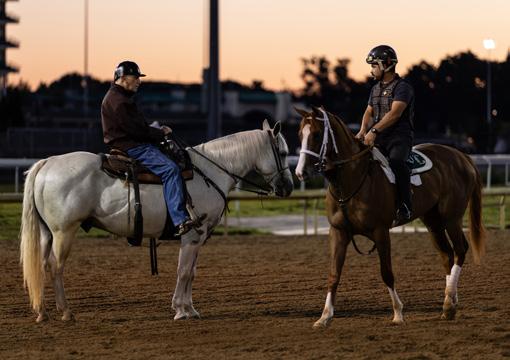
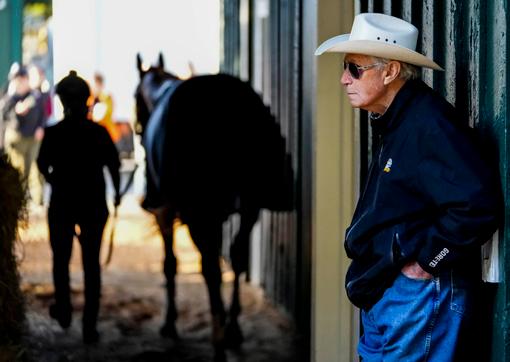


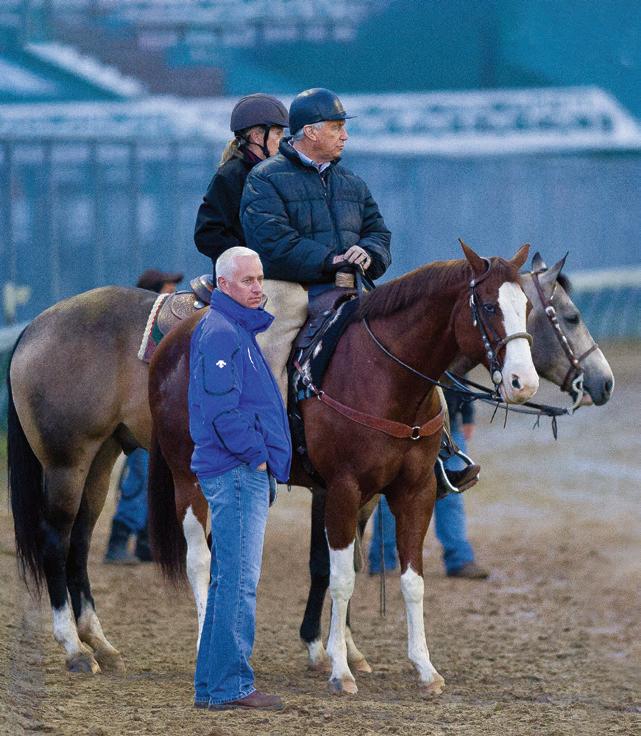
“I feel obligated to share, and I can’t help myself,” the horseman shared. “That’s just the way he is, and he is one of the best of all times at doing what he’s doing,” McLaughlin said. “If anybody ask a question, he’s happy to answer it. He’s mentored many of us on and off the racetrack. He was very influential to all of us.”
The trainer’s habit of pulling young people into winner’s circle photos is another way of imparting his enthusiasm for the sport to a new generation and creating new fans in the process. He keeps a folder of letters from those who reach out to him, some of whom report keeping that photo in their office or parlaying that experience into further investment in racing.
“He is very good with his fans in terms of keeping drawing people in. And I say to this day that the reason I’m in racing today is because of him. And that’s true. And not only from that first experience of having met him, but also even later on in the later years,” said Bossinakis. “He started off as my idol, and then became more like a mentor.”
“I’ve picked up a lot of things that he is really well known for and incorporated them into my own life. He always speaks in terms of ‘we.’ He doesn’t say I; he says ‘we,’” his co-author shared. “Very much team oriented. The people around him, the importance of that, I’ve picked that up.”
As Moquett observed about his friend and peer, “as good as a horse trainer as Wayne Lukas is, and he’s one of the best that’s ever done it, he’s even more going to be known for a motivator.”
When Oxbow went gate-to-wire in the 2013 Preakness, a performance echoed in Seize the Grey’s in 2024, Lukas had not won a classic since Commendable’s Belmont Stakes in 2000. The trainer had not stopped the same grind that had earned him a spot in the Hall of Fame but faced a transition: as the owners he had his biggest successes with passed away or left racing, the horseman had to compete with rising stars like Bob Baffert and Todd Pletcher among others for new clients. That meant fewer horses and fewer opportunities to use the skills he had built over a lifetime.
He could have stepped away then to parlay his boundless drive into other efforts. “In the last 10 years, I think people feel that maybe I would be thinking that way. And I’ve had opportunities to take, I’m going to say, an administrative situation, managing something,” Lukas shared. Instead, the Wisconsin native prefers to ply his trade, professing that “I get too much joy and satisfaction out of dealing one-on-one with those good horses. And I don’t think I would ever go that way. Selfishly, I don’t have any other interests.”
With his 89th birthday coming in early September, any talk about this Hall of Famer hanging it up is quickly quieted. Lukas is not about looking back and exudes optimism about the future in each conversation. “Like he says, I’m not really working on my resume anymore,” wife Laurie Lukas observed. “He’s just going on pure love of the horse and the sport.”
“At 89 years old, I want to keep them all in front of me so I can be hands-on, as they say, train each horse individually and be responsible for each choice. Now, I have an outstanding system that really makes it easy,” he shared. “Obviously, with forty head, I’ve got less clients, too. But I’ve got a couple of real strong, powerful clients in John Bellinger and Brian Coehlo of BC Stables.”
Lukas and assistant trainer Sebastian Nicholl split the year between Oaklawn Park in Hot Springs, Arkansas and Churchill Downs in Louisville, Kentucky, both deliberate choices for the trainer who formerly had stables from coast to coast. “Through the ‘80s and ‘90s, we were Californians, with Hollywood Park and everything. But during that era, Marge Everett told me that California was going to have trouble holding on to the industry. I thought, ‘Well, if it all goes to hell in a handbag, where will it be the last one to go?’” the trainer recalled. “It’s going to be Louisville and Lexington. They’ll fight and claw to keep it going. So, I picked up and moved back here.”

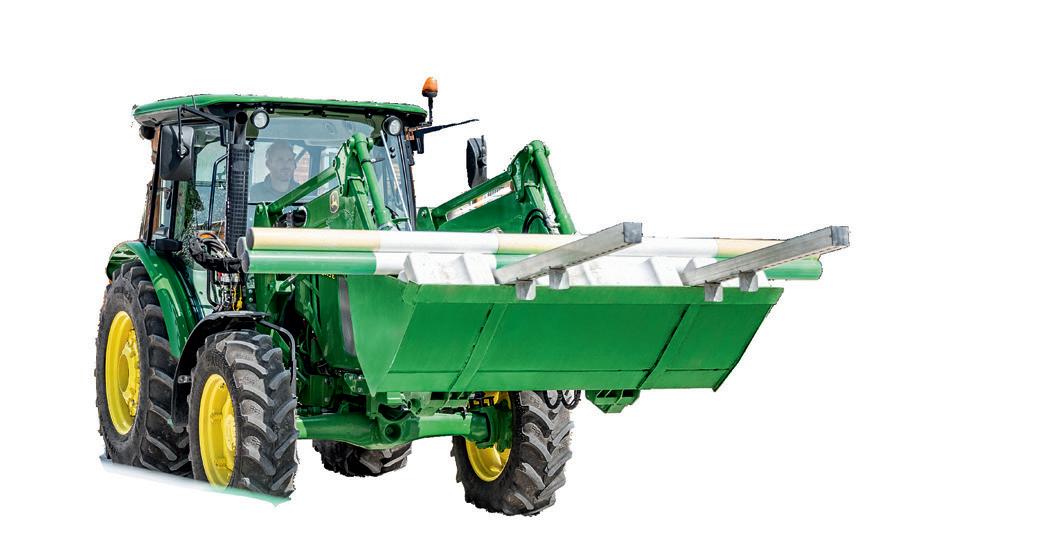




BELOW & RIGHT: Seize the Grey

Now at home in Arkansas and Kentucky and soon Saratoga, where stars like Winning Colors were launched, D. Wayne Lukas has shown once again his determination to do things his way. His life away from the barn is populated with his family, including wife Laurie, grandson Brady and granddaughter Kelly and their spouses, and his two great-grandchildren. “He loves his family. He’s very committed to his grandkids and their spouses, and now his great grandchildren. It is hard, as he talks about it, it’s hard to balance that. But I think as he’s gotten older, and maybe since I’ve come in the picture, he also really embraces my family,” Laurie shared. “I just think that’s a side the public won’t see of him, his sensitivity and the importance of helping people and helping.”
At the barn is Seize the Grey and a few two-year-olds that remind the trainer why he rises before the sun and makes that drive to the backside. As often as his age comes up, the Hall of Fame trainer shows that he is steadfastly himself.
“He hasn’t changed that much over the years. Obviously, he went from managing over 100 horses down to 30 or 40, but he still has a great eye for a horse,” McLaughlin observed. “That was something that was just a given talent to him. He’s great at purchasing yearlings and looking at horses, and he still has it in buying horses, and he still gets up at 3:30 or 4:00 in the morning, and he works every day, gets on his pony, and so he loves what he’s doing.”
“I think the core of him is the same. At the core, that intensity, that drive to win, that positivity, he’s always had that. Wayne is not a looking behind guy. He’s very forward-thinking,” Bossinakis shared. “I will say the biggest change that I’ve seen in him personally, he’s become – I don’t even like me saying this – a little bit softer around the edges, which I love. I think there is a level of him that’s an emotional guy, that’s a sentimental person. I think he’s always been that. He probably just never really showed it.”

Master horseman, innovator, and mentor, D. Wayne Lukas not only focuses his prodigious energy on those closest to him, enjoying his role as husband and patriarch, but also on the promising young horses now hitting the racetrack, their potential as exciting as that scene in the Preakness winner’s circle. “Our two-year-olds are very, very good. And I can see it coming. I can see what’s about to happen. I get up every day and I know. And I think, ‘oh, boy, here we come.’”


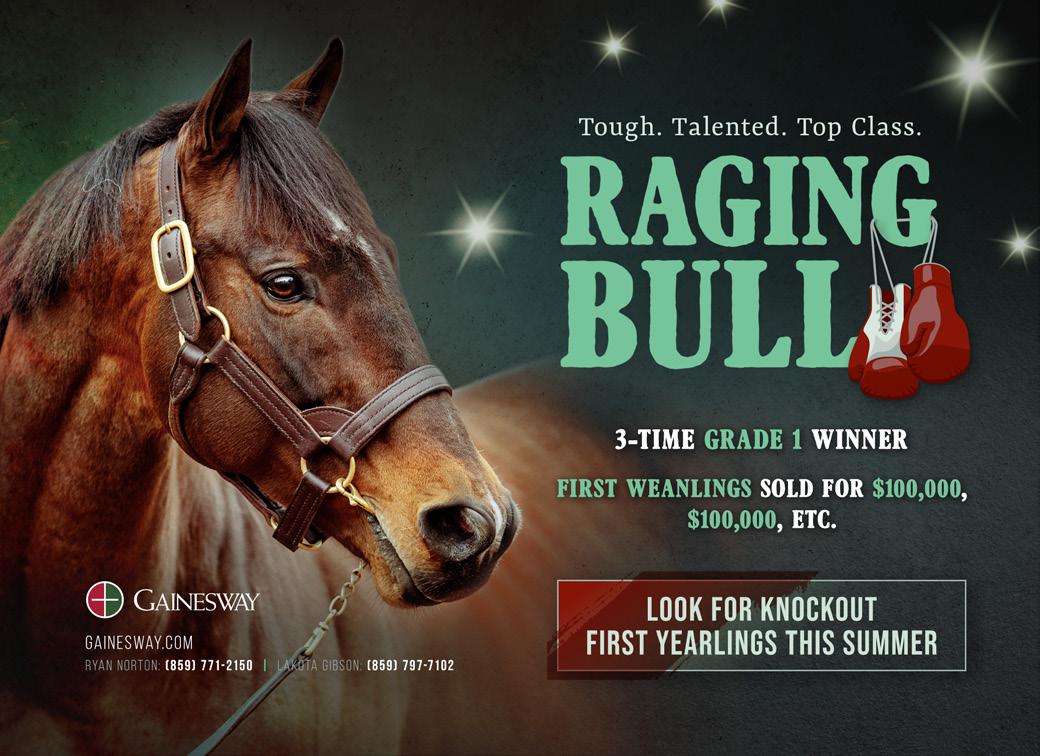




Keeping a racehorse healthy inside and out can be a real challenge. The nature of training and the environment in which racehorses live presents a constant set of risks. Managing those risks and balancing them against what is needed to achieve success is a fine art.
So where does risk come from when it comes to digestive function? Are those risks manageable within the racing environment? What can you realistically expect to achieve with changes to feed, feeding practice and the use of supplements?
One of the biggest risk factors for digestive health is the stabled environment and the pattern of feeding required to fit in around a typical working day for stable staff, coupled with the need to get out on the gallops. On top of this is then the individual’s feeding behavior, something that can easily be overlooked when the ‘what is fed’ is the same for all horses in the barn. Individual behavior is perhaps one of the hardest aspects to tackle, whilst replicating a natural feeding pattern is nearly impossible.
The most common digestive concern is gastric ulcers, and many feeds and supplements are now available and marketed for this condition. Yet ulcers still exist and continue to frustrate many trainers despite making dietary

changes. Why is this? The answer lies in gaining a better understanding of what a ‘good’ feed pattern and diet looks like from the horses’ perspective versus what is effective for performance and realistic in a typical racing stable.
• Free ranging horses typically show 10-15 distinct feeding bouts in a 24-hour period.(1)
• Time spent resting or engaged in other non-feeding activities will not normally exceed 3-4 hours per session.(2) Meaning the stomach is rarely truly empty.
• The majority of feeding behavior happens during daylight hours, typically 60-70% of time available.(3)
• During nighttime hours the amount of time spent as feeding behaviors reduces to 40-50% of those hours.(3)
• The total amount of time spent grazing across multiple feeding bouts is connected to the season and daylight hours. During summer months intake is around 14 hours in total versus 12 hours in the winter.(4)
The natural feeding pattern is driven by the design of the horses’ digestive anatomy and is key to good health and normal function. The further away from these patterns we move any horse the greater the risk of dysfunction.

1
4
The time study above shows the time taken for a group of 5 horses in training to eat their bucket feed and forage allocations in a 24-hour period. All horses in this observational study were in full training and worked in the morning of the study at different time points depending on their lot. Horses were observed from 4:45am until 9:15pm.
One of the key aspects of natural feeding behavior is the amount of feeding periods or ‘mini-meals’ a horse consumes. For 4 out of the 5 horses from completion of their evening forage to the next meal of breakfast was a period of time in excess of 8 hours, approximately 33% of the 24-hour period. During these nighttime hours feeding behavior normally occurs in free ranging horses and supports regulation of the digestive system.
For wild horses the total time spent eating is 12-14 hours in a 24 hour period. They do not normally have periods exceeding 12 hours in every 24 without some form of intake. For 4 out of the 5 horses there were distinct periods where all feed and forage had been consumed. The amount of time without any feed or forage available for the horses ranged from as little as 3 hours and 40 minutes up to 15 hours 30 mins in a 24-hour period.
Natural feeding patterns rarely see more than a 3-4 hour gap between each ‘mini-meal’ and at these points where gaps exist, it is important to remember that food has been available for 24 hours without restriction leading up to these chosen breaks in forage intake. The break in intake is short and during this time the stomach is unlikely to be truly empty. For horses in training it is easy to have periods in excess of 3 hours without any intake of feed or forage.
Although the period from finishing breakfast to morning forage being given was for some horses less than 3 hours, the stomach when receiving that breakfast was in a fasting state. Ordinarily in the natural environment the stomach is rarely truly empty as it can take anywhere from 2-6 hours

pass through the stomach and can help reduce the level of acidity seen in the proximal portion of the stomach. The key point here is reduction not elimination. The practice will not prevent ulceration occurring, but it will reduce exposure.
Figure 2 shows the difference between horses that were fasted for only 2 hours before exercise and those fasted for 18 hours.
One of the challenges in racing is the differing amount of time between the breakfast feed and being saddled up for work. On top of this some horses will naturally consume their allocated feed faster. Even within the small number of horses observed in the study in Figure 1 there was notable variation in the time taken to eat the same amount of bucket feed given. Some of this variation comes from giving all horses the same breakfast by weight, which represents a different meal size against their bodyweight. Variation also exists as racehorses are individuals and appetite is flexible and influenced by other factors such as level of fitness and stress.
Figure 3 shows the amount of dry matter provided in the breakfast feed to each horse and considers it against the bodyweight of the individual horse. The breakfast given was 4.85lbs / 2.2kg of a cubed racing feed alongside 1.3lbs / 0.6kg of an alfalfa based chaff.
for the stomach to empty depending on what and how much has been consumed.(5) When giving a bucket feed to a horse in a fasting state the rate of transit of that feed through the stomach will be relatively short, and depending on which lot the horse is pulled out for, can result in the horse being worked on an empty or near empty stomach.
One of the common causes of squamous ulceration is ‘acid splashback’ which relates to strenuous exercise and the movement of acidic content from the lower glandular region of the stomach to the unprotected squamous area.(6) When the stomach contains feed or forage it is more difficult for the acidic content to be forced upwards to the squamous area. This is why it is recommended to include chaff in the breakfast feed or provide a small amount of forage as these fibrous sources are slower to


In terms of feed format, pelleted feeds are consumed faster than mueslis or ‘sweet feeds’.(7) The addition of chaff mixed with the feed can slow intake, but for it to be effective there must be a reasonable amount given compared to the amount of pelleted or textured feed. As a rough guide, providing an additional 30% of the hard feed weight as a chaff will make a notable difference to the rate of intake.
Whilst the aim is to slow intake it is important to keep in mind that feeding hard feeds too close to strenuous exercise is not recommended. Ideally feed is withheld for 2 hours before exercise. Forages, e.g. hay, haylage and alfalfa chaff, do not need to be removed but intake should be restricted to a small amount, typically 1kg. Providing a small amount of forage in this format helps maintain saliva production, which assists with regulation of acidity, and provides some fill for the stomach.
Risk factors for gastric ulceration and colic when it comes to forage are similar. Diets low in forage and high in concentrates increase risk, along with intermittent feeding patterns and/or periods of fasting.
In addition to what is given and the pattern that fits practically at a yard, is the fact that horses, like many other species, do not have a fixed rate of intake when a meal of any sort is presented. The majority will have a higher consumption rate at the start of feeding than at the end. With the observed horses hourly weigh backs of forage were carried out for a period of 6 hours to determine rate of consumption. During this time no bucket feed was present. Figure 4 shows the individual intakes.
In the case of horses in training this is another problem to consider when it comes to evening feeds. Whilst the amount of forage given may be reasonable and in line with expected appetite, the feeding behavior of the horse means there is not a consistent or regular intake of forage observed until the following morning feed. True feeding of ad-lib forage, above what a horse needs or could eat in a 24-hour period, is rarely given and often impractical. The reality is that most horses in training will have a prolonged period of zero feed or forage intake during nighttime hours, which is the opposite of natural feeding behavior.
This is a practical challenge which for many yards is not easily overcome. Ideally forage should be fed at more regular intervals, rather than twice daily, to more closely replicate the 10-15 feeding bouts observed in wild horses.
Simply put, the longer a horse spends eating the better.
An enthusiastic eater that is ‘keen at the pot’ might be taken as a sign of good health, but a speedy intake that leads to a feeding pattern with longer periods between any sort of meal isn’t necessarily a good thing. A horse that appears a little slow with their forage but still consumes a good amount over a daily basis is not a bad thing as the pattern of eating is closer to multiple mini meals.
• Using a good amount of chaff in every feed will prolong feed intake and requires additional chewing which helps increase salivation.
• In the case of morning feeds ideally a little hay or haylage could be given, particularly for later lots to ensure the presence of some fiber in the stomach when working. Such a presence will not completely stop acidity in the delicate squamous area of the stomach, but it will reduce it.
• Providing the evening forage as late as is possible to reduce the amount of time between evening forage being consumed and breakfast given.
• Taking note of ‘speedy eaters’ and considering if hay nets or hay feeders would be appropriate to prolong the time taken to consume their evening allocation. Hay nets in different locations in the stable, for example one at the front and one at the back, can also influence how quickly all the forage is consumed.
• Consider the type of forage given. Hay can be easier to provide on more of a free choice basis as horses will consume less hay than haylage on a dry matter basis in a set period of time. (1)

British Horse Feeds
A high specification, low starch, super fiber feed providing full support to performance horses prone to gastric ulcers. British Horse Feeds’ Fibre-Beet optimizes hindgut fermentation without loss of performance.
Fibre-Beet is a quick soaking conditioning feed consisting of alfalfa, non gmo beet pulp flake, oats, linseed meal, biotin, sodium and calcium. It’s blend of pectins, natural surfactants and high acid binding ingredients have been shown to improve barriers to acid splash induced gastric ulcers.
KINGS
Emerald Valley Natural Health To find a dealer near you or order online visit: www.emeraldvalleyequine.com or call 888.638.8262
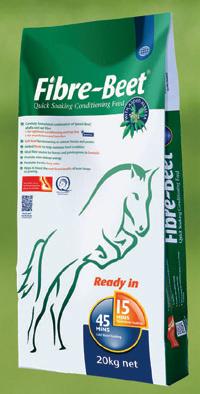

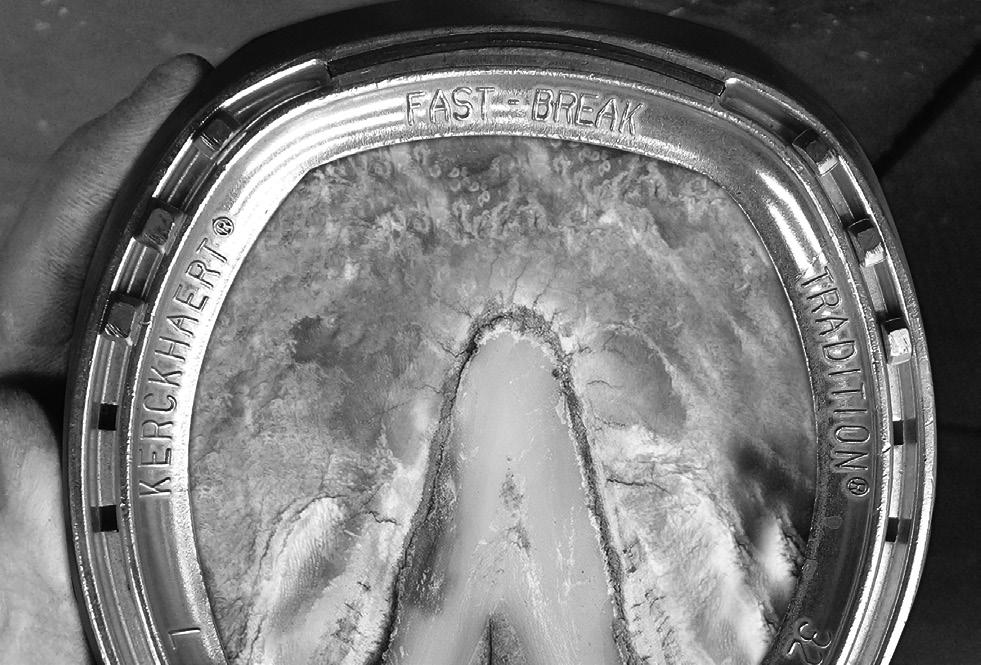
■ Flush Unclipped Front and Hind
■ 2mm XT Unclipped Hind
■ 4mm Low Toe Unclipped Hind
KINGS EXTRA SOUND
■ Flush Unclipped Front
■ Flush Toe Clip Front and Hind
■ Flush Side Clip Hind
LEGENDARY
TRADITION
■ Flush Unclipped Front and Hind
■ Flush Toe Clip Hind
■ 2mm XT Unclipped Hind
■ 2mm XT Toe Clip Hind
■ 4mm Low Toe Unclipped Hind
■ 4mm Low Toe Toe Clip Hind
■ Flush Unclipped Front FAST BREAK
■ Flush Unclipped Front
SAFETY TRACKX
■ 4mm Outer Rim Hind
Flush Front and Hind (0mm)
XT Hind (2mm)
Toe



Natural feeding patterns rarely see more than a 3-4 hour gap between each ‘mini-meal’.
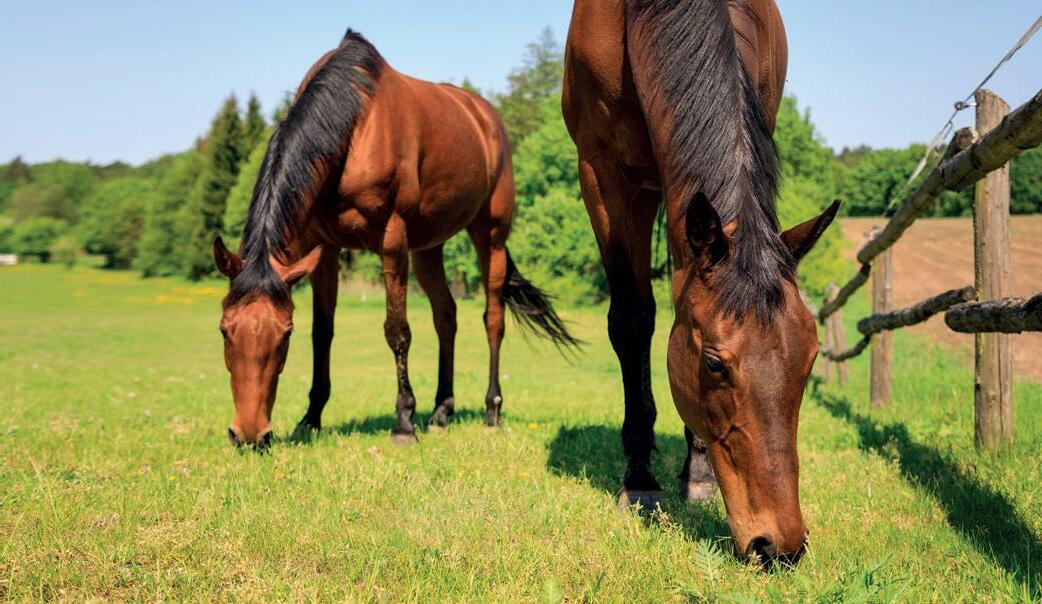
The need for high energy intakes to fuel performance means reliance on hard feeds and a limited amount of forage. The horse does not have an unlimited appetite and even when provided with additional forage will not necessarily consume enough or consume it in a regular fashion. Replicating a natural feed pattern for horses in training is close to impossible and inevitably results in digestive disorders, but making changes and trying to reduce that risk is worth doing. The differences made may be small, but winning margins can be just as small.
The purpose of feeding low starch diets to horses in training is to reduce the specific element of risk that comes from high starch feeding. In doing so that element of risk is managed and the diet is one step closer to a more natural fiberbased diet. But it is one area of risk alone and mitigating this risk does nothing to control the risk of ulcers or colic from intermittent feeding, the impact of withholding water, the effect of travel and the physical effects on the stomach from strenuous exercise in the case of ulcers.
Using supplements that support healing of tissues, the function of mucus barriers or buffer acidity in the stomach are all part of trying to manage gastric ulcers, a disorder that is created through the training environment and the intensity of work required to achieve a race fit state. Such supplements are not designed to treat or prevent ulcers, they are not medicines and should not claim to do so, but they play an important part in trying to maintain a healthy digestive system.
Equally using supplements that support hindgut function through promoting the growth of beneficial bacteria, stabilizing the pH of the hindgut or ‘mopping up’ pathogenic bacteria are all part of trying to maintain a healthy hindgut, which has many benefits, and reduces the risk of disorder within this section of the digestive anatomy.
The most important thing when considering gastric ulcers and other digestive disorders is to be realistic about what you can achieve within your environment, and to be realistic about what difference feeds and supplements alone can make. Any steps that can be taken to reduce risk are worth implementing as the aim is to keep the digestive system as healthy as possible so that the food you provide is converted to the nutrients needed to maximize performance and maintain general good health.
References:
1. Ellis,A.D.,2010. Biological basis of behaviour in relation to nutrition and feed intake in horses. In A.D. Ellis, A.C.Longland, M.Coenen & N.Miraglia, ed. The impact of nutrition on the health and welfare of horses. The Netherlands: Wageningen Academic Publishers, 53-74
2. Ralston,1984; Vulink,2001, cited in Ellis,A.D.,2010. Biological basis of behaviour in relation to nutrition and feed intake in horses. In A.D.Ellis, A.C.Longland, M.Coenen & N.Miraglia, ed. The impact of nutrition on the health and welfare of horses. The Netherlands: Wageningen Academic Publishers, 58.
3. Vulnik,2001; Boyd 1988; Berger et al.,1999; Edouard et al.,2009 cited in Ellis,A.D.,2010. Biological basis of behaviour in relation to nutrition and feed intake in horses. In A.D. Ellis, A.C.Longland, M.Coenen & N. Miraglia, ed. The impact of nutrition on the health and welfare of horses. The Netherlands: Wageningen Academic Publishers, 58.
4. Vulnik,2001 cited in ELLIS,A.D.,2010. Biological basis of behaviour in relation to nutrition and feed intake in horses. In A.D. Ellis, A.C.Longland, M.Coenen & N.Miraglia, ed. The impact of nutrition on the health and welfare of horses. The Netherlands: Wageningen Academic Publishers, 59.
5. Frape, D. (2010) Equine Nutrition and Feeding. 4th Edition. United Kingdom: Wiley-Blackwell
6. Lorenzo-Figueras,M. Merrit,AM. Effects of exercise on gastric volume and pH in the proximal portion of the stomach of horses. Am J Vet Res. 2002;63(11): 1481-1487
7. Hintz et al 1985 cited in Geor,J. Harris,P. Coenen,M. (2013) Equine Applied and Clinincal Nutrition. China: Elsevier


Made from live, species-specific Lactobacillus reuteri and Saccharomyces boulardii; EquiOtic™ is your horse’s first line of defense for gastrointestinal health. The Probiotic that is “From the Horse!”
BENEFITS:

• horses under stress of training competition and travel
• before and after vaccinations
• horses with loose stool
• replenish good bacteria; before, during and after antibiotics
• available in powder or paste
• veterinarian formulated and recommended
Available at: bluegrassanimalproducts.com | 859-381-9242

Medical care so advanced it almost makes you wish you were a horse.
We offer every type of medical care your four-legged athlete could ever need. With board-certified specialists in all fields we provide everything from upper airway, arthroscopic and laparoscopic surgeries, to internal medicine, complex fracture fixation and advanced diagnostic imaging, including bone scans, CT scans and MRIs – all in one place. It’s enough to make a human jealous.
800.724.5358 40 Frontage Road Ringoes, NJ 08551 www.midatlanticequine.com
THIS QUARTER WE DISCUSS IF THE MIDDLE MARKET IS ON THE DECLINE, RISKING A LACK OF MARKET DIVERSITY.

The ecosystem of the Thoroughbred racing industry, like all ecosystems, requires its components to be interconnected and interdependent to be a functional system. If one of the components disappears or is compromised, the ecosystem as a whole suffers. Today, the racing industry has shown trends that the middle market is on the decline, risking a lack of market diversity. To restore the Thoroughbred racing industry ecosystem to its full potential, other areas need to be supportive – the bloodstock industry is one we can start the discussion with.
To discuss ideas on how the bloodstock industry can strengthen the middle market, we gathered the opinions of racing secretaries, bloodstock agents, and middle market buyers. Keith Doleshel, a NYRA racing secretary, and Tracy Egan, the executive director of the New York Thoroughbred Breeding and Development Fund, bring to light the benefits of auction races to New York’s racing program.
Clark Shepherd of Shepherd Equine Advisors, a well-known bloodstock agent in addition to a respected pedigree analyst, weighs in on middle market client strategies at auctions.
Lastly, Charles Weston: an experienced and knowledgeable middle market buyer who has seen success over the last 30 years through partnerships and bloodstock selections.
Note: This is strictly opinion and does not reflect the stance of any organization. These points are intended to be read as conversation starters and used to fuel the discussion around what might be good for the health of the industry.


Based on the panelists’ experiences as a bloodstock agent or as a middle market buyer, they have compiled a list of suggested starting points:
Many new investors may be overwhelmed at the amount of knowledge required in selecting new additions to their stable, the processes of training horses, and general strategies on how to be a successful racehorse owner. Shepherd is an avid believer that the new middle market investor can learn the skills to see a horse’s “potential value” to give confidence in the process and in their agent’s decisions but only if they in turn are trained on what is expected.
Auction houses’ ability to provide transparency and information accountability has given rise to more disclosures thereby improving information surrounding the bloodstock for sale, in turn making it more important to purchase the “right” horse. Shepherd recommends genetic testing, cardio scans, and performance analytics to give more insight on purchasing the “right” horse, who will be both successful and profitable.
Recently, breeders are becoming more “savvy” according to Shepherd with regards to breeding their bloodstock to become racehorses instead of commercial horses (meaning horses for the sales ring). Racehorse attributes include the right pedigree and conformation to be quality horses destined for the track. With the continued decrease in commercial horses, the ratio further trends towards more quality racehorses for owners to become more profitable.
Weston affectionately calls registrations, certifications, auction races, and other nominations by the term ‘coupons’. These provide incentives for extra purse money for owners, breeders awards, and more to go into the pockets of middle market buyers and breeders. When attempting to make their bloodstock investment profitable, one strategy Weston uses is to have certifications and nominations be as geographically local as possible which allows for easy shipping between tracks for options in race conditions, incentivized purse structure, and in the case of auction races the ability to be competitive.
One of the main concerns discussed amongst the industry is rising costs in training bills and initial purchase prices due to supply and demand concerns. Partnerships can provide an avenue through which buyers can own significant percentages of a horse but split the costs of ownership amongst others. A strategy Weston uses is to send his horses to a trainer who wishes to be a co-owner as it allows for the individuals’ training bill to be lowered and incentivizes the trainer to select the best racing conditions while offsetting risk.
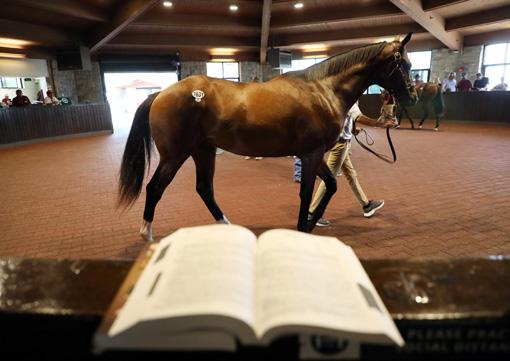


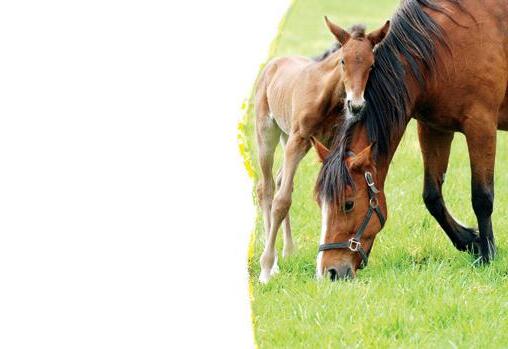

Q.Does breeding to the sons of top stallions for less in stud fees provide a benefit to the middle market?
A consensus was reached among the panelists indicating the profit margin is most apparent in bloodstock whose sires are sons of top stallions with the exclusion of the top freshman stallions. Due to the stud fee being cheaper, the initial cost needed to break even with respect to the stud fee as a breeder is significantly lower compared to other stallion options. Thus, when the breeder wishes to sell, the profit margin may not be as large as if the bloodstock was by a top stallion with a good conformation or movement, but it still does provide the opportunity for profit – particularly if the resulting bloodstock does have good conformation and movement.
From a middle market buyer’s perspective, if a horse is purchased anywhere from $15,000 to $50,000 and requires class relief to the claiming ranks to be competitive, the purchaser is less likely to be impacted negatively as there is opportunity to offset both the initial and recurring costs. Weston has found success with this method with many purchases he has made for himself or in partnerships inclusive of Con Lima, who was a multiple graded stakes winner earning nearly $900,000 and sired by the A.P. Indy stallion Commissioner.
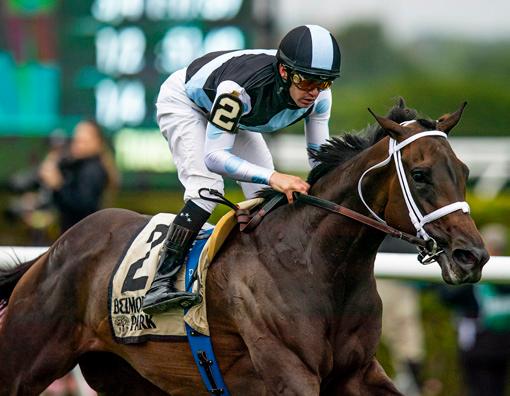


Q. If the large-scale introduction of auction races were to be implemented, how would that affect the market?
Thoroughbred racing in Europe launched auction races into prominence with their racing programs and due to their popularity, the concept was brought to America via tracks in New York and Kentucky. Many of the benefits of these races include giving “trainers and owners who do not own expensive horses a chance to win at important venues”, an “outlet for middle market and regional stallions to sire winners in what has become a hyper competitive marketplace”, and “an opportunity to play on a level [playing] field” according to Tracy Egan. Given the overfilling of auction races in New York, Keith Doleshel believes the idea will begin to “trickle down” to other racetracks. In general, striking a balance between the different levels of racing is required to maintain a high-quality meet, and these auction races provide additional opportunities for the middle market to find success and stand out.
For the racing industry to flourish, the middle market is needed not only at the auctions but at the racetrack. If the middle market were to shrink further, the purchases of middle market horses would primarily be conducted through claiming races. Given breeding operations need a healthy profit margin to continue through auction purchases, claiming horses would only incentivize breeders to narrow their operations. Beyond this, racetracks need bloodstock at all levels to be sustainable and continue to be competitive for the racing enthusiasts, betters, and horsemen. How else can one progress otherwise, after all? Racing is a global economic engine and to preserve it, a successful middle market must exist. To do this, we must come together as a community to bring new blood into the market in a well-informed manner where the newcomers believe they have a genuine chance at success.

2024 Top Ten 3-Yr-Old NY-Bred Money Earners Previously Sold at Yearling Auctions:
Average Sale Price: $95,300
Average Career Earnings through July 1: $206,749 (EQUIBASE.COM, 7/1/24) BUY NOW . . . BE READY!
• NYRA PURSES REACH ALL-TIME HIGHS, INCLUDING $90,000 NY-BRED MAIDEN RACES
• NYTBDF PAYS OWNERS IN OPEN-COMPANY RACES UP TO $20,000 PER AWARD
• MORE THAN $2.6 MILLION IN STAKES MONEY FOR NY-BRED & NY-SIRED 2YOS
• NY STALLION STAKES SERIES WORTH $2.3 MILLION FOR NY-SIRED FOALED ANYWHERE





We’re all at the Derby [in 2018] with the WinStar group. The horse wins and we’re all running to the winner’s circle…and security said, ‘Nope’.”
The moment captures the gulf between racetrack trainers and farm trainers and the highs and lows for the latter: Triple Crown winner Justify was broken in, trained and developed at WinStar Farm under the supervision of then farm trainer Richard Budge.
With a shrug, Budge acknowledged that “farm trainers get a lot of pride in success, but kind of ‘self-pride’ rather than ‘public pride’.
“You don’t get your name in the paper” nor do you get, obviously, even moments of once-in-a-lifetime celebration with a Derby winner.
For Budge, now general manager supervising three farm trainers at Margaux Farm in Midway, Kentucky, time with horses basically begins when a ‘baby’ walks off a van and ends with loading a racehorse back on a van on their way to a racetrack and a trainer there.
Others, like Brian Waltz, a trainer at HighPointe Training Center east of Louisville, occupy a different niche, working with horses already on the racetrack outside the normal environs. Waltz is a behind-the-scenes ‘go-to’ for trainers for horses needing rehab from injuries. These horses can’t do so at the racetrack, but they can at Waltz’s farm outside Cincinnati.



Even a horse not fully broken who might need extra gate training can get what they need under Waltz at the training center, which offers two sets of gates for training and is just 34 miles from Churchill Downs.
“There is no pressure of working within training hours on the track with hundreds of other horses or getting a gate card when there’s a crush of trainers with horses waiting right behind you,” said Waltz.
Waltz is also an alternative for medium-to-small stables not shipping yearlings to Ocala or Aiken for breaking.
One other ‘farm trainer’, better known for fairly recent and famous successes on the racetrack is Jena Antonucci. She earned fame as the trainer for Arcangelo, winner of the 2023 Belmont Stakes and the Travers Stakes. Like Waltz, she bridges the gap

between racetrack and farm trainer but with ‘horseOlogy’, a “full-cycle training and ownership organization enterprise,” begun by Antonucci with Katie Maranda in 2022.
horseOlogy is a one-stop shop for raising, training, and racing horses as well as bloodstock advising, pinhooking, micro-investing and much more. In short, the operation goes beyond lay-ups, breaking young horses, or readying them for the racetrack, to also help people get into the ownership/business side of racing.
“The whole idea was to allow people to be able to get everything under one umbrella,” said Antonucci. “We sales-prep lots of yearlings, sales weanlings and those horses that don’t go to us to sell. We place them with consigners. Katie consigns a bunch of the two-year-olds, but not all of them that we develop,” said Antonucci.

“Our joke is that consigning is Katie’s ‘side hustle’ and mine is racing.”
No matter the business or business model for these trainers, the one constant is passing along to the racetrack racehorses ready to run.
Antonucci, surprisingly, serves other trainers against whom she competes on the racetrack.
“We enjoy the layup, the rehab, the freshening part of the cycle of the horse’s career. Having that as part of horseOlogy allows us to do that not just for ourselves but other trainers that I’ve done work for for many years.
“I’m not interested in poaching their horses and their clients, and there’s a trust and a high level of respect for that.”
She said she gets satisfaction from getting horses ready to ‘rock and roll’ before they go back to the track no matter if they end up in her barn on another trainer.
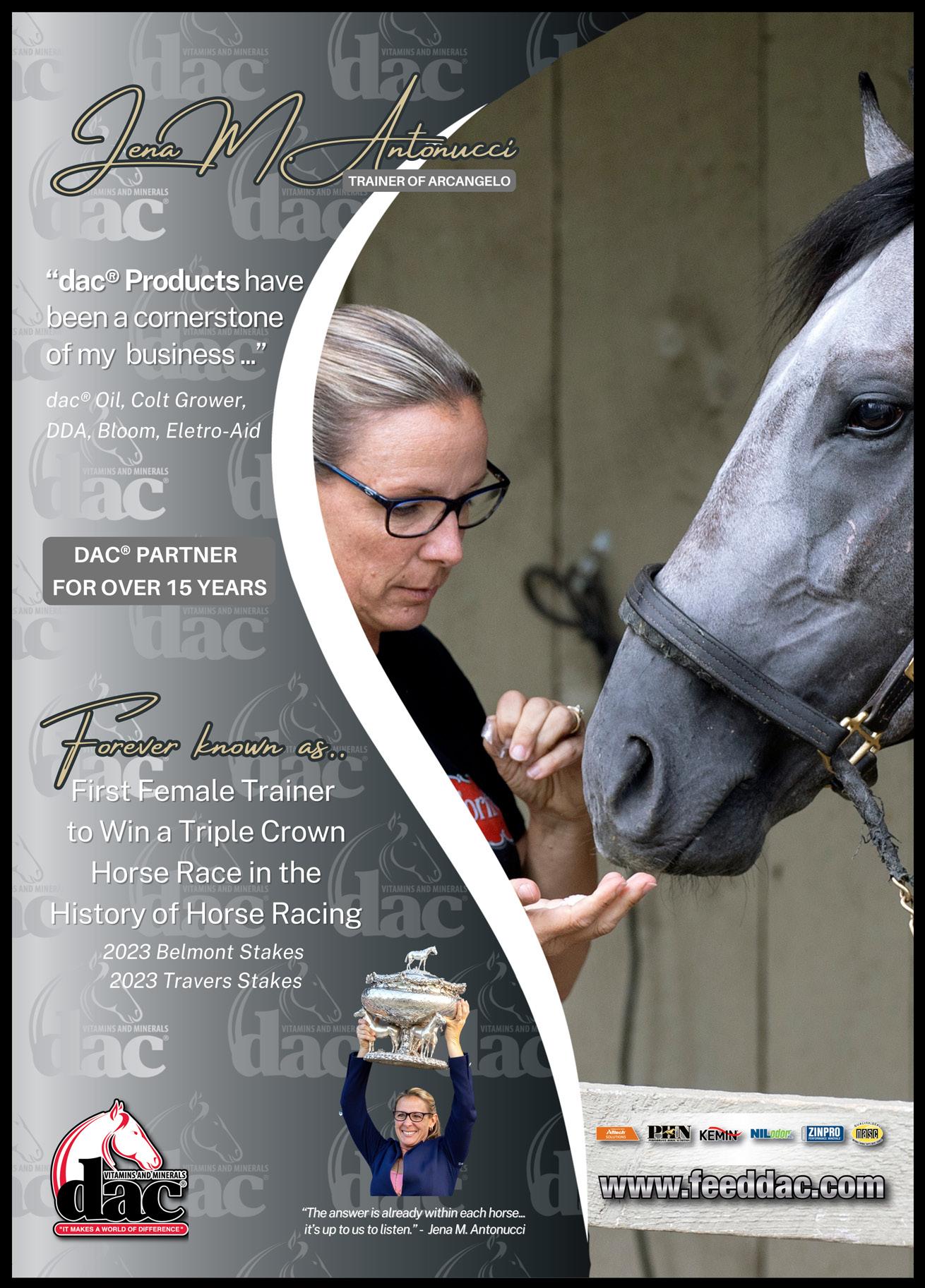
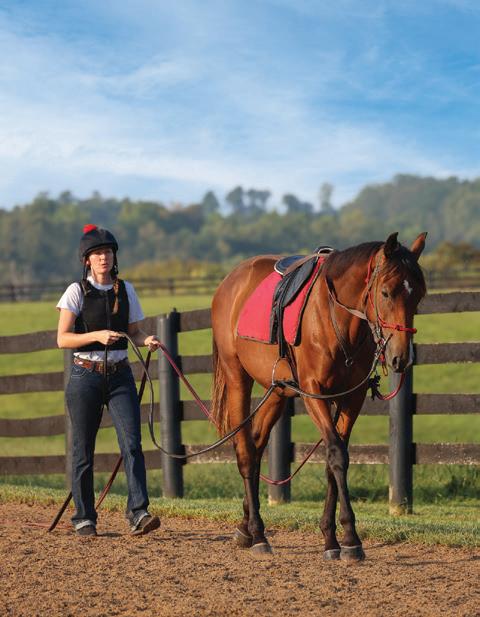

“Right now, I’m at Saratoga and I get to see several trainers and say, ‘Oh, how’s that horse?’ and hear ‘They’re great.’ That’s really cool for me and our team to get some of the nuances we may have found in those horses in bringing them along.”
For Brian Waltz, he has brought along Next for trainer William Cowans. The gelding won last year’s Gr.2 Brooklyn Stakes, igniting a four-win streak, crowned by a 111/4 length triumph in the 11/2 mile Isaac Murphy Marathon. He did it again in this year’s Brooklyn, dusting rivals in a repeat performance this time with an equally dazzling 91/4 length triumph.
Waltz’s name will never appear in the Past Performances for Next, but Cowans would be the first to tell anyone of his contributions to the Not This Time gelding.
Waltz, like Antonucci, is a trainer in his own right and a successful one too. Last year, his trainees earned $337,312 and average earnings per starter of $8,649.
He expressed no preference of farm or training center conditioning over the racetrack but did say the quieter atmosphere of HighPointe “applies in particular to leg-ups or extra conditioning to sharpen a horse who already has racing experience.”
Budge, an Englishman, is the most traveled of the three farm trainers, having conditioned horses on three continents. Margaux Farm, by any standard, is a heavyweight in training, boarding, and rehabilitation with 640 acres on which are three tracks—an undulating gallop, turf course and straight track. The roster of graduates, though, really differentiate it among training centers. They include Flightline, Doppelganger, Vekoma, and this year’s winner of the Gr.1 Frizette Stakes, Just F Y I.































































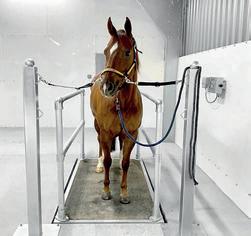










































As many as 160 horses are at Margaux. With that kind of volume, Budge’s job requires categorization of horses that includes recommendations on what racetrack is best for a horse when it ships and even after a racing career has begun.
He remembered a filly he trained at Lone Star who was struggling at the Texas track. “I told the owner, ‘You know, I don’t think this horse fits this circuit.’ We shipped to Arapahoe and she won four in a row—three of them stakes. She was the horse of the meet.”
He carried the lesson to farm training. “Most of the time, the owners listen,” he said with a smile.
“The goal when I was at WinStar and also here is always if you can get the more advanced two-year-olds ready to ship out the week after Derby, the more advanced ones, should be able to run at Saratoga and Del Mar.
“The second group we’ll ship out in June, July with an eye more to Churchill in September and Keeneland in October.” The balance will go to other tracks with manageable competition.
Determination of where a horse should run is subject to change, however. The rapid and seemingly day-to-day changes in growing horses produce surprises.
“Most farm trainers see a huge difference between, let’s say, a young, freshly broken yearling slash two-year-old in January, February, March, April. The interesting thing about being a farm trainer with those horses is they change so much.
“Sometimes a horse that you really love in February doesn’t grow or mature the way you thought they would. Sometimes a horse you didn’t like really blossoms and gets better and better.”
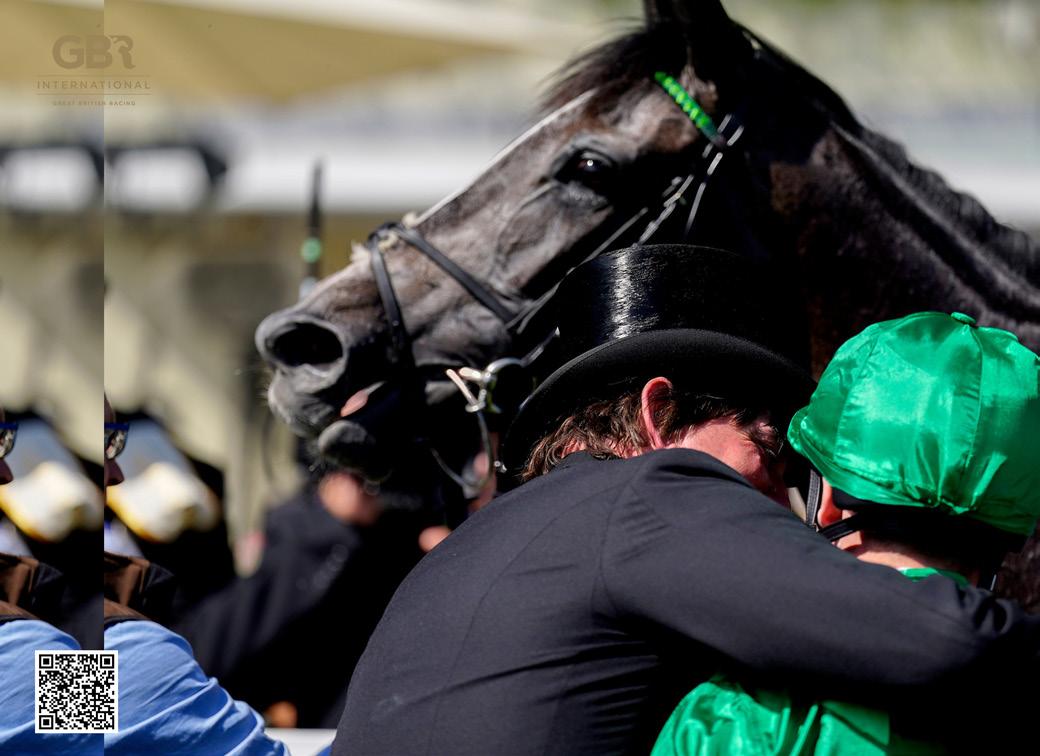


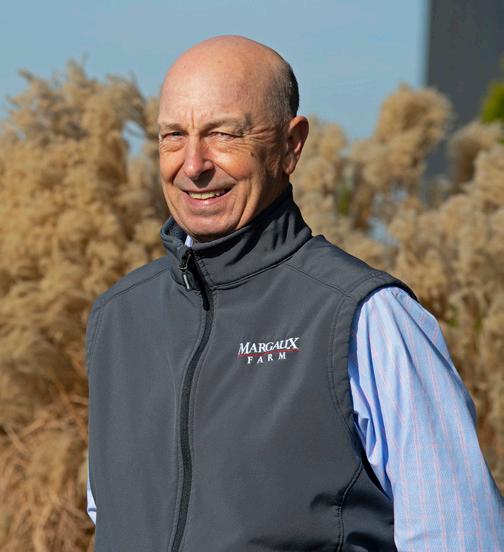

back a little—make them want more and try to build their confidence to where they think they can win. They start liking it.
“The will to win is born in them and some of them have it more than others, but I really try to nurture that in my young horses. I put a lot of stock in that.”


Like any business, success breeds success. Antonucci said that Arcangelo “turned the light a little bit brighter in the right sense that people could see what we are doing.
“You gotta take a proactive position and let people know, ‘Hey we brought that horse along.’ ‘Hey, we did that.’ ‘Hey, this is what our team accomplished.’”
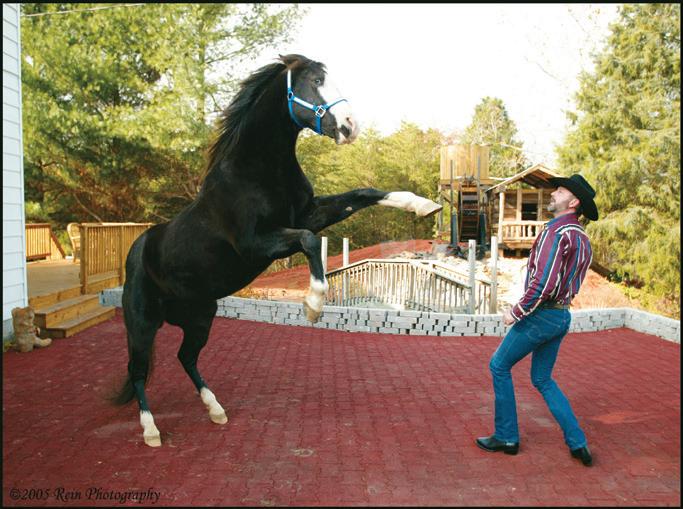
For Brian Waltz one prerequisite for success as a farm trainer is a simple one that almost has to be inborn. “What I would tell anyone getting started is, ‘Make sure, you like and love horses.”
That love creates a connection made during training that is the toughest part of the job. It culminates in watching a horse load onto a van.
A job well done is also a job that is over.

Strangles, the highly contagious upper respiratory disease caused by the bacterium, Streptococcus equi (S. equi ) has been front and centre on social media lately with numerous disease alerts being posted. These alerts are triggered by positive test results for S. equi and reported by an official laboratory to the provincial or state veterinary office. Given the potential ramifications of a positive test, such as animal movement restrictions for several weeks and increased costs to horse and facility owners, a lot rides on the interpretation of these test results and the associated risk of disease spread to other horses, on and off the premises.




ABOVE: Polymerase chain reaction (PCR) testing is much more sensitive than culture when testing for S. equi.
Testing for S. equi helps determine that a horse is free of S. equi or, in other words, not an S. equi carrier. It is usually done when the horse has recovered from clinical signs of Strangles to determine they are no longer infected and capable of transmitting S. equi, or upon request by equine facility managers, to screen a horse for carrier status prior to coming to their facility.
S. equi carrier horses are horses that show no clinical signs of infection but harbour S. equi in their guttural pouches. They can shed S. equi intermittently from the nose for months to years.
The two tests utilized for S. equi testing are the polymerase chain reaction (PCR) and bacterial culture. Testing utilizing bacterial culture detects living S. equi. Polymerase chain reaction (PCR) testing is much more sensitive than culture but detects DNA from both living and non-living bacteria. While the PCR sensitivity level can be useful as it can detect carrier horses that have a very low level of bacteria present in their guttural pouches, it can also detect transiently exposed/ infected, asymptomatic horses, which rapidly clear the infection within a week. PCR can also flag horses that are less likely to be infectious at the time of sampling which can aid in risk management for that horse and the herd.

While these tests have their pros and cons, the relationship between S. equi PCR and bacterial culture has not been extensively studied. This is what Dr. Scott Weese of the Ontario Veterinary College and collaborators from OMAFRA and the University of Prince Edward Island set out to determine in a 2023 research study funded by Equine Guelph; (tinyurl.com/ guelph-strangles)
The relationship between quantitative real-time PCR cycle threshold and culture for detection of Streptococcus equi subspecies equi.
The 2023 study compared PCR and culture results from 158 equine respiratory tract samples submitted to an Ontario animal health laboratory for S. equi PCR testing. Of the samples that were PCR positive (CT <40), only a minority (7.6%) were positive for S. equi on culture. That suggested that most PCR positive horses were likely a low risk for transmitting the bacterium at the time of sampling. A qPCR cycle threshold (CT) of 34.2 was the breakpoint established, signifying that the likelihood of finding culturable S.equi above a CT of 34.2 was less likely and that the horse had a lower risk of being infectious at that point in time. These results were specific to this particular laboratory and cannot be applied to other laboratories which use their own testing procedures.
The PCR cycle threshold (CT) is the number of cycles that occur before S. equi bacteria is detected. The higher the CT value, the lower the number of bacteria.
The line is not meant to be a green or red light but an indicator to aid in assessing the risk of disease transmission. Horses with PCR CT levels above 34.2, and who have developed a carrier status, can go on to produce lower CT levels (higher bacterial counts) over time and be a risk for S. equi shedding down the road. More research is needed to understand the S. equi shedding dynamics in carrier horses.
Combining culture and PCR testing is an option which comes at a higher cost to the horse owner but can be useful for an in-depth way to investigate bacterial loads and the risk of transmission at the time of sampling. While opting for ultimate sensitivity can help make sure no potentially infected horses are missed, it can start the domino effect of excessive control measures and costly interventions if not put into perspective related to the goals of testing, which may vary significantly between facilities (e.g. busy show barn, racetrack or closed herd).
Strangles has existed in horses since the 1800’s and isn’t going away anytime soon. Testing as part of a recovery plan from a Strangles outbreak is a no-brainer, but when it comes to using S. equi testing as part of a sickness prevention plan for your horse or facility, talk with your veterinarian and understand the impact a positive test result might have on your horse/herd and wallet BEFORE you start testing.


Equine Guelph supports a number of high-quality projects at the University of Guelph, by virtue of funding provided largely by the racing industry (Standardbred, Thoroughbred and Quarter horse organizations): the Horse Improvement Program from the Horsemen’s Benevolent and Protective Association, and the E.P. Taylor Foundation, started by veterinarians in the Thoroughbred industry, and now maintained in trust by the University and Equine Guelph.

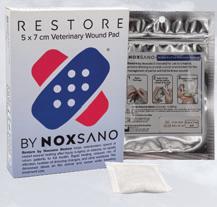
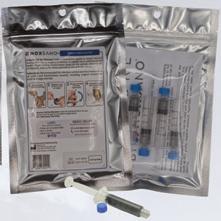

• Heal wounds up to 50% faster
• Reduce the occurrence of proud flesh Clinically proven



• No special equipment or training needed
• No need to transport the animal
• Can be left in place up to seven days
Controls and prevents infection and biofilm


• Provides infection control and remediation of biofilm and resistant bacteria
• Reduces the need for broad spectrum antibiotics
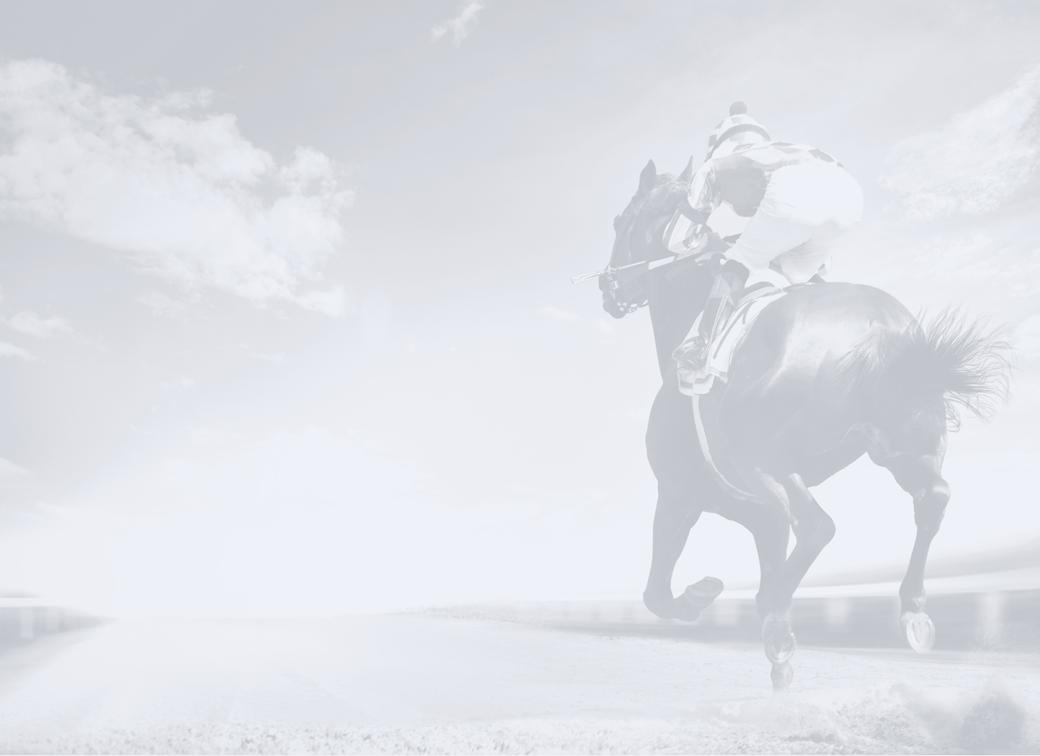



HOW DO WAGES EARNED BY U.S. EMPLOYEES COMPARE TO THE REST OF THE WORLD?





Albert Einstein once said that if he only had one hour to solve a problem, he would spend 55 minutes defining the problem and the remaining 5 minutes solving it.
He might have needed more than 5 minutes to solve the problem of shrinking barn staff at racetracks.
The problem is common knowledge in horse racing - strange hours. Weekend work. The caliber of persons accepting racetrack work. The one challenge not mentioned, (and perhaps avoided) doesn’t take Einstein to figure out- money.
There is an immutable law that you get what you pay for. Low pay means no payees or fewer payees.
In this regard, the U.S. has somewhat of an advantage compared to counterparts around the world. From the 1950’s on, Hispanic people have made up 80% of persons involved in racing, and if you focused just on hotwalkers and grooms, the percentage would undoubtedly be higher.
Those in racing in the U.S. and abroad seem to turn a blind eye to startling statistics for barn workers. Comparing annual cost-of-living to annual salary, here are the numbers: In the U.S., average annual salary for hotwalkers is a tad over $15,000.1
But that can become $29,0001 if you’re promoted to grooma 51% increase but not quite half of the national average income of $59,385 as reported by the U.S. Bureau of Labor Statistics.

The cost-of-living in the U.S. for a single person averages $34,500.2
In the U.K., the cost of living is $30,700. 3 Starting pay for yard workers 16 years old is around $22,5004 annually and approximately $27,5004 for experienced help older than 23.
The French are in a little better shape - the annual cost of living is $21,2235 with an average annual salary for stable employees of close to $25,000.
Stable help in Ireland earn virtually the same as in the U.S., also at $29k and the cost of living is approximately $35,500.6
For the really big bucks, brush up on your Cantonese. Pay in Hong Kong for stable help averages just over $96,000.
Pável Urruchi, a native of Peru, was track chaplain at Turfway Park in northern Kentucky for nine years and has been at Churchill Downs since last November. At the latter track, there are 1,000 workers on the backside, and if you followed Urruchi on any morning you would swear he knows all of them. From his experience, shortages vary depending on the racetrack.
“If you were to ask me about Turfway (Park), there was a time when they were almost always needing help every day. That had to do with not being able to rely on workers due to alcohol or drugs, and they couldn’t keep people who wouldn’t come to work consistently.”
He added, however, that since construction of a dormitory for barn workers at Turfway, the volume and ability of workers has dramatically changed.




THE BOTTOM LINE IN U.S. RACETRACKS LARGE AND SMALL IS WILLINGNESS TO WORK FOR THE PAY AND EXPERIENCE. AMERICANS GENERALLY WON’T ACCEPT THE WORK OF CARING FOR THOROUGHBRED RACEHORSES WHILE AT THE SAME TIME, MANY HISPANIC WORKERS GREW UP AROUND HORSES.”
At Churchill Downs, there is no shortage of workers due, he said, to trainers with large strings of horses in their barn or barns. The problem, though, is a pay-per-horse practice that trainers are more than willing to embrace. “A groom would rather work at Churchill Downs where they can groom six to seven horses.” And they are willing to do that seven days a week to maximize income. The beneficiary is the trainer and owner and the worker - sort of.
“What I see is people that immigrate from other countries, especially young people, they’re willing to work and they come from places where they’ve been working every day on farms or other places, so they’re going to continue to work those seven days.”
Workers, essentially, work in an incentivized system with more work load. Trainers and owners see more productivity without an incremental increase in payroll.
Conversely, at a smaller track with smaller stables, the number of horses per person will not be like at Churchill Downs or Belmont Park.
The bottom line in U.S. racetracks large and small is willingness to work for the pay and experience. Americans generally won’t accept the work of caring for Thoroughbred racehorses while at the same time, many Hispanic workers grew up around horses.
In the U.K., stable help is more homogenous, enabling organization. There is a National Association of Racing Staff (NARS) who compiles data on yard help to arm workers clamoring for improvements.



A ‘2023 Staff Turnover Review’ produced by NARS, at least defined the parameters of the issue.
The review surveyed 447 trainers employing 7,293 staff in England. Turnover for 2023 was 3,155 or a whopping 46% moving on to another barn or out of racing altogether.
More alarming is that latter group; 56%, or 1,769 of that 3,155 left racing. The bottom line in the U.K. is trainers must replace one in four workers annually.
The Racing Foundation, which supports charitable work to produce positive change in racetrack personnel in the U.K. among other issues, cited one facet of the challenge. In a report entitled ‘Racing Industry Recruitment, Skills and Retention Research 2023-24’, 68% of trainers experienced hard-to-fill vacancies in 2023.
Most noteworthy, perhaps, is a Memorandum of Agreement (MOA) between NARS and the National Trainers Federation effective April 1 of this year that provides for a ‘Racing Industry Minimum Rates of Pay Structure’.
It includes, as well, certain standard conditions of employment for racing staff. The MOA sets forth minimum pay rates for six scales or categories of workers from Trainee with little to no experience to Supervisory (foreman). A Trainee 16 or 17 years old would earn $324 (USD) weekly, increasing to $580 for a worker 21+ years old. At the top end of the scale, a worker categorized as ‘Supervisory’ provided living accommodations by a trainer would earn $661 weekly.
Most revolutionary are working hours. The MOA calls for a 40-hour work week (excluding meal breaks) and five hours of Saturday work included in those 40 hours.
Individual employees whose working time is likely to exceed an


average of 48 hours over 52 weeks can sign an opt out agreement if they so desire. Overtime will be time and one half for each hour. Provisions for work away from a trainer’s yard stipulates an hourly rate of $14.51 regardless of regular wage scale.
Other provisions are a daily, tax-free subsistence allowance paid to staff working race days Monday through to Saturday. There is a tax free element to these allowances away from a yard and outside of normal working hours. This is $12.68 during eight hours of work and $17.50 for hours after that.
On a somewhat positive note, the Racing Foundation reported that 44% of English trainers arranged for training or development in the last year unlike the U.S. where experience and not education is the teacher. The bad news is that 44% is down from 53% in 2021 and 57% in 2018.
With regard to recruitment, 74% of trainers responding in the Foundation report said it has gotten tougher in 2023 compared to 63% in 2021. As for retention, 52% said it has got worse in 2023 from 42% in 2021.
Most revolutionary in potential changes for stable/yard staff is a 4 days on, 4 days off schedule discussed at a recent meeting of the Horseracing Industry People Board. A key in this idea is a schedule change accompanied by overtime/evening pay funded by Racecourses and Bookmakers in the U.K.
Remedies cross national borders as well as oceans. In the U.S., one idea is to move training hours to later, say 7:00 a.m. from 5:30 a.m. in the morning at some racetracks.
This would, of course, require workers to arise in the morning rather than what is, in reality, the middle of the night (3:30 to 4:00 a.m.). Another measure could involve recruiting qualified inmates from minimum or medium-security to work stables.
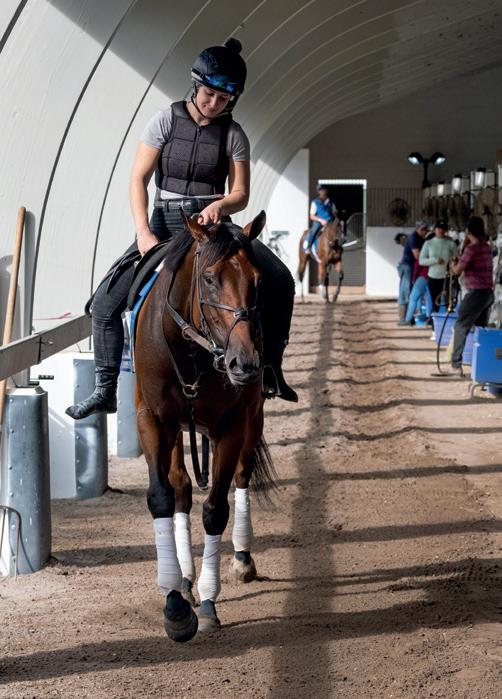
In Canada, a national website www.EquineJobTrack.ca, created by Equine Guelph (connected to the University of Guelph) posts open positions on Canadian racetracks and stables. Equine Guelph also offers a training program for future grooms -- the Ontario Equine Education and Employment Program. It offers online training initially followed by students working a paid training internship on-site with Equine Guelph partners.

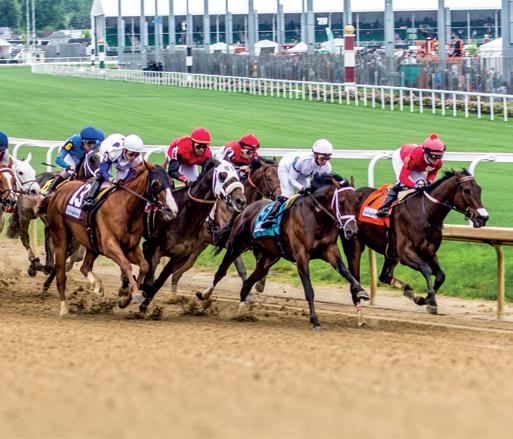
The standard of equestrian excellence since 1929 The standard of equestrian excellence since 1929
The late British economist, John Maynard Keynes once said, “The difficulty lies not so much in developing new ideas as in escaping from old ones.”
Later working hours, organizations formed on behalf of stable/yard workers; involvement of educational institutions in training; revamped four-day work schedules—all are new ideas subject to dismissal out of hand.
The alternative, though, is the dismissal of racing altogether.
Back to Einstein, who also said no problem can be solved from the same level of consciousness that created it. The Brits are at least conscious of the issues with yard help. The U.S.? Unconscious
References:
1. teachkyag.org – Horse Careers: At the Racetrack, Backside
2. expatistan.com
3. globalcitizenssolution.com – The Cost of Living in the United Kingdom – Updated 2024
4. Memorandum of Agreement – National Joint Council for Racing Staff effective April 1 2024
5. conexcionfrance.com
6. ie.isasservices.org.uk

HISA COMPLIANT VICTORY RACING PLATES
VICTORY MODEL ALL SURFACES DIRT
SPORT QUEENS FRONT & HIND
EC QUEENS FRONT & HIND
SPORT QUEENS FRONT & HIND
EC QUEENS FRONT – SOLID HEEL
EC QUEENS FRONT & HIND
EC QUEENS WEDGE FRONT & HIND
EC QUEENS 3-DEGREE WEDGE HIND
EC QUEENS FRONT - SOLID HEEL
RX FRONT & HIND
VICTORY MODEL DIRT

EC QUEENS WEDGE FRONT & HIND
SPORT XLT HIND
EC QUEENS 3-DEGREE WEDGE HIND
SPORT XLT WEDGE HIND
RX FRONT & HIND
EC XLT HIND
EC XLT 3-DEGREE WEDGE HIND
SPORT XLT HIND
SPORT QUEENS FRONT & HIND
RX XLT HIND
EC QUEENS FRONT & HIND
SPORT XLT WEDGE HIND
The standard of equestrian excellence since 1929
EC QUEENS FRONT - SOLID HEEL
EC XLT HIND ALL SURFACES
EFFECTIVE DATE FOR THE HISA SHOEING RULES AND THE “NON-ENFORCEMENT” GUIDANCE – AUGUST 1, 2022
EC QUEENS WEDGE FRONT & HIND
VISIT HISAUS.ORG FOR UPDATED INFORMATION
EC XLT 3-DEGREE WEDGE HIND
EC QUEENS 3-DEGREE WEDGE HIND
RX XLT HIND

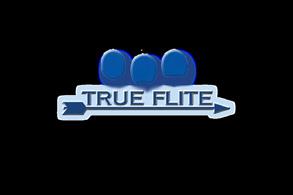


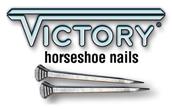
EFFECTIVE DATE FOR THE HISA SHOEING RULES AND THE "NON-ENFORCEMENT"


DATE FOR THE HISA SHOEING RULES AND THE "NON-ENFORCEMENT" GUIDANCE - AUGUST 1, 2022
VISIT HISAUS ORG FOR UPDATED INFORMATION


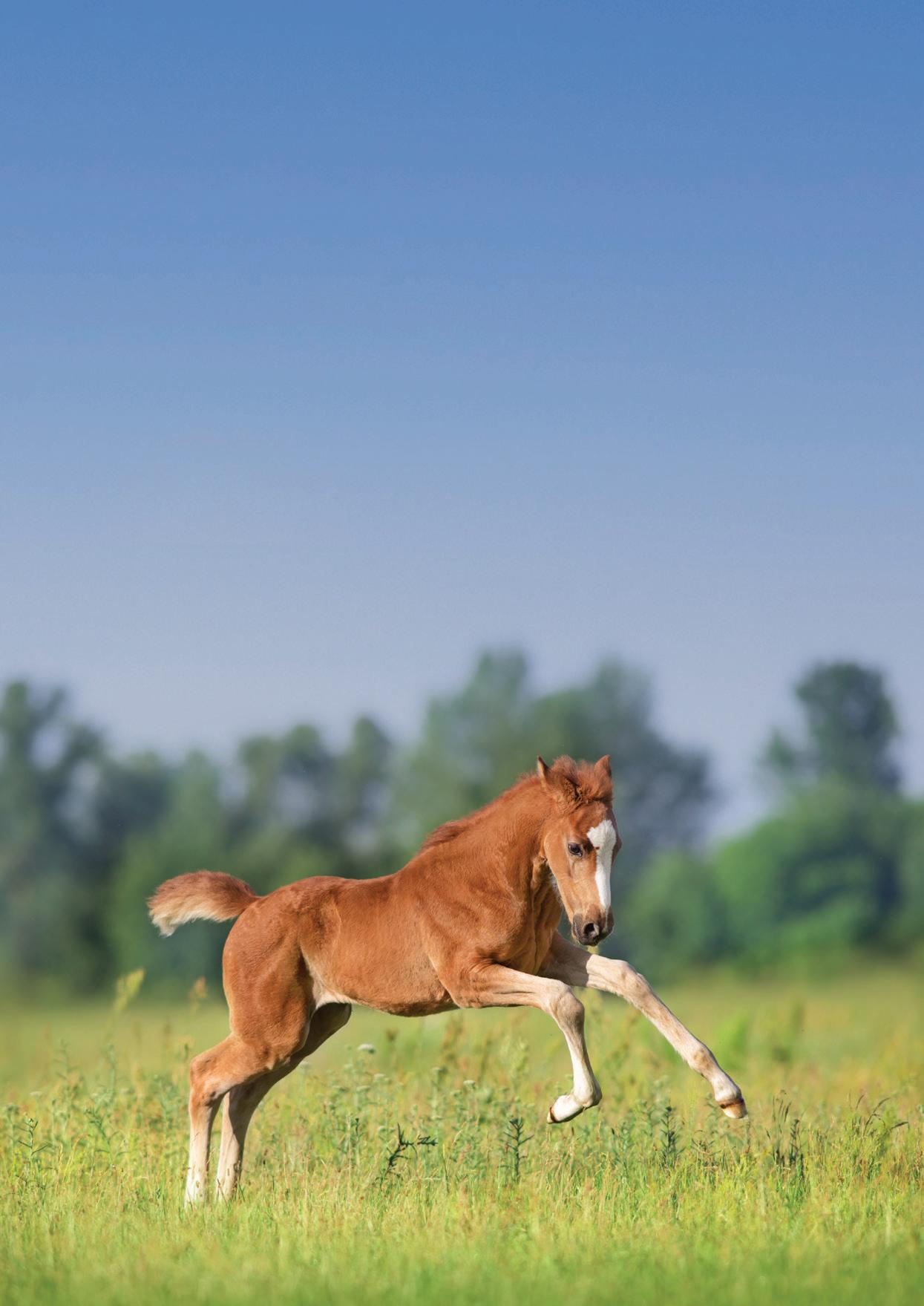
Beaufort Cottage Educational Trust hosted the annual Gerald Leigh Memorial Lectures at the historic Tattersalls Sales in Newmarket, UK on June 11th, 2024.
These lectures are in association with the Gerald Leigh Charitable Trust as a way of recognizing Mr. Leigh’s achievements as a racehorse owner and breeder as well as continuing his passion for scientific knowledge and welfare of horses in the race industry and the equine industry as a whole.

Dr. Chavatte-Palmer provided a very insightful and interesting talk on the influence of maternal and environmental factors during the prenatal period on athletic performance. The lecture discussed the phenomenon of Developmental Origins of Health and Disease (DOHAD) which is demonstrated with the increasing evidence of the role in parental nutrition and environmental conditions, from periods preceding conception and throughout gestation, on phenotypic development in horses. She described how the nutritional environment before birth can affect the postnatal performance of the offspring as it is believed that nutrients can alter the way genes are expressed resulting in developmental trajectories that have repercussions on postnatal development. With a strong understanding and knowledge in DOHAD, nutritional strategies can be considered and developed to optimize youngstock growth and development. This is an exciting field as further research will potentially allow veterinarians and breeders to work cooperatively to optimize athleticism as well as the wellbeing and health of foals and mares.

SCAN THE QR CODE TO WATCH THE LECTURE ‘INFLUENCE OF MATERNAL & ENVIRONMENTAL FACTORS DURING THE PRENATAL PERIOD ON THE ATHLETIC POTENTIAL OF THE FOAL’ - BY DR. PASCALE CHAVATTE-PALMER.


Dr. Joe Pagan of the Kentucky Equine Research discussed equine feeding management practices and equine nutrition in sports medicine. His first lecture discussed the effects of season on mare and foal nutrition. Through various studies some conclusions could be made and these conclusions do appear to be a global trend. It was found that colts are heavier and taller than fillies.
After 1 month of age, fillies were fatter than colts. Foals born in January and February were smaller at birth and grew more slowly in early life but by 150 days of age this lag disappeared. In addition, mare weight changes and body condition scores were related to season and management factors, as winter-foaling mares lost weight and had lower body condition post foaling than spring-foaling mares.
Dr. Pagan continued with a lecture on the right balance for optimal growth and development of youngstock. Recent research has shown that the health of the offspring of overweight mares may also be compromised. In addition, studies have shown that excess maternal nutrition during pregnancy can alter glucose and lipid (fat) metabolism in foals until 160 days of age. Another study reported a higher incidence of osteochondrosis (OC) in foals born to dams that were fed concentrates during gestation rather than forage.
A more recent study on the nutrition of the mare during the last trimester and subsequent foal health revealed some interesting observations. It was found that the growth of foals from 6-24 months of age was not affected by maternal diet and maternal undernutrition appeared to affect bone growth as foals from dams fed forage only had narrower cannon bones than foals
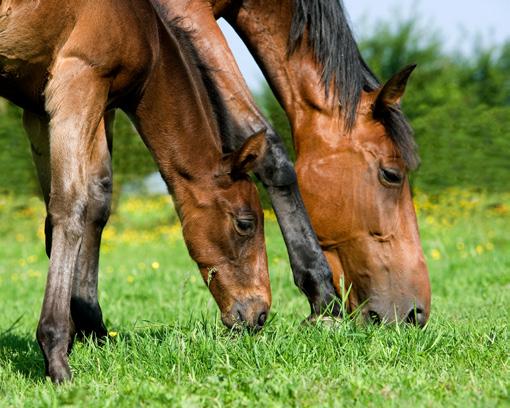
from dams fed forage and barley. In addition, it was found that overfeeding negatively affected yearlings from mares fed barley and forage more than yearlings from broodmares fed only forage.
Finally, there was a decrease in insulin sensitivity and enhanced insulin levels suggesting insulin dysregulation in yearlings from mares fed both barley and forage and not yearlings from forageonly mares. Another exciting field of research that will also lead to greater cooperation of breeders and veterinarians in providing good health and wellbeing to foals and mares.

SCAN THE QR CODE TO WATCH THE LECTURE ‘THE EFFECT OF SEASON ON MARE AND FOAL NUTRITION’ - BY DR. JOE PAGAN, KENTUCKY EQUINE RESEARCH, USA.
These lectures had the pleasure of hosting Paul Overton, who is an equine agronomist with a strong understanding of pasture management. His passion for his area of expertise and in helping with improving management of studs was abundant as he outlined the aims of pasture management that included the need to provide safe grazing pastures from parasites, colic and grass sickness, atypical myopathy and other ailments as well as to provide a safe area to exercise horses of all ages. In addition, he made clear that fresh leafy bite grass in the paddocks all year round is key.
We were reminded of the fundamentals of good basic pasture management that included a removal programme for muck, providing a dense leafy grass sward, sharing and mixing the paddock use with other livestock (sheep and cattle) and moving horses to various paddocks around the stud to maximize rest of all paddocks. To optimize paddock health, it should be remembered that all paddock management follows the horses around the seed, be guided by the weather rather than the calendar and work quickly to maximize rest periods. Finally, good simple paddock and grassland management can help a multitude of issues and every marginal gain is helpful.

Julian Dollar gave us an insight into a stud manager’s approach to soundness. It was an integral part of the lecture programme as it provided the audience with another perspective of stud management. He made it clear that a variety of factors must be considered when breeding and raising sound horses but two main criteria is a strong team and an attention to detail.
The team needed is one that is completely dedicated and passionate about their horses and should consist of a veterinary service, farriers, nutrition/feed and land management support. There must be a cooperative work ethic in order to provide the best all round management as possible. This team must strive for excellence and work on marginal gains.
A sound breeding and rearing programme starts with mating focusing on sound parents, especially the mare, to produce sound offspring. It is important to work with mother nature rather than interfering with it, thus focusing on a healthy environment. This strategy must be flexible that will allow one to provide the horses with a quality paddock.
The offspring should be between 121-132 lbs (55-60 kg) and they should have a seamless transition from birth to exercise and living out. In addition, the foals should be monitored and assessed closely in order to achieve timely and maximum beneficial interventions that may include selective surgeries. Finally, it is believed that the perfect preparation for a yearling to go into training would be some controlled exercise combined with turnout the rest of the time.

SCAN THE QR CODE TO WATCH THE LECTURE ‘A STUD MANAGER’S APPROACH TO SOUNDNESS’ - BY JULIAN DOLLAR, NEWSELLS PARK STUD LTD.
Professor Jacqui Matthews, the director of Austin Davis Biologics, provided some sobering information on parasites and their resistance. She explained that intestinal worms are found in most grazing animals and most breeding premises are at high infection risk due to the presence of young animals grazing permanent pastures as well as having a history of interval deworming treatments.
In addition, wormer resistance is being reported in all major parasitic worms of horses. Therefore, it is vital to have control plans that include a risk-assessment approach.
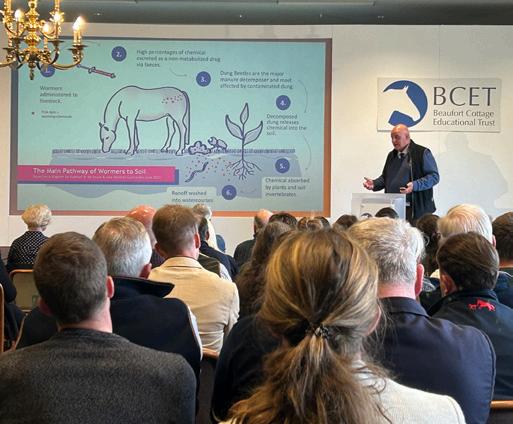

Professor Matthews made it very clear that we need to be concerned regarding parasites and their resistance to wormers and we need to act now. She explained the action that is needed which includes evidence-based worm control. This approach requires risk assessment that allows one to identify potential issues in the management, the avoidance of all horses regularly being treated, the assessment of wormer effectiveness as well as the effectiveness of interventions.
With respect to the management, there are some principles behind reducing anthelmintic use. Good pasture hygiene can substantially reduce infective egg and larval stages in the environment and the lowering of this pasture contamination decreases parasites acquired when grazing. Pasture management must include:
• Dung removal works! Full removal of dung at least once per week and place it away from pastures and water courses.
• Maintain low stocking density.
• Rest pastures – ideally 12 months and avoid grazing foals on same paddocks every year.
• Consider grazing with ruminants between equine groups.

With respect to treatment, make informed choices by using various tests such as fecal worm egg counts, fecal egg count reduction test, antibody-based tests to identify worms, and other tests. Ultimately, do not blindly treat horses without considering the reason for worming and assessing wormer effectiveness.

SCAN THE QR CODE TO WATCH THE LECTURE ‘PARASITES AND RESISTANCE ON UK STUD FARMS HOW WORRIED DO WE NEED TO BE?’
- BY PROFESSOR JACQUI MATTHEWS, AUSTIN DAVIS BIOLOGICS LTD.
Professor Matthews followed up with a second lecture on integrating diagnostics into sustainable equine helminth control programmes. An integrated diagnostic-led control programme should consider:
• Fecal egg worm count in late winter if grazing year-round. Recommend treatment if 200 or more eggs per gram and select your anthelmintic according to its sensitivity.
• Tapeworm test in spring to identify individuals with tapeworm burdens and treat infected individuals as these horses will contaminate the paddocks with cestode eggs.

Late spring/early summer perform fecal egg worm count reduction test in order to assess anthelmintic effectiveness annually. Worm all horses that have FEC of >200 eggs per gram. Perform FEC test at day 0 and 14 days after treatment. Calculate the mean percentage.
• Reduction in FEC between 0 and day 14 post treatment.
• In late summer/early autumn perform tapeworm test to identify individuals that have, over the summer grazing period, accumulated high tapeworm burdens which may put them at risk of colic.
In late fall, perform a small redworm test. In low infection-risk situations, test in late autumn/winter to identify individuals that do not require treatment for small redworm. Use in low-risk groups where owners usually apply all-group larvicidal treatments. With good pasture management one can lower the selection for resistance, leading to a lowering the need for wormer treatments, a lowering in the proportion of horses that test positive and a lowering of paddock contamination; therefore, less horses are likely to be infected and more likely to have lower burdens.

SCAN THE QR CODE TO WATCH THE LECTURE ‘INTEGRATING DIAGNOSTICS INTO SUSTAINABLE EQUINE HELMINTH CONTROL PROGRAMMES’ - BY PROFESSOR JACQUI MATTHEWS, AUSTIN DAVIS BIOLOGICS LTD.
With his 20 years of buying and selling Thoroughbred bloodstock, Jamie Railton gave us insights into the business of foal purchasing. He discussed all of the variables that must be taken into account when selecting foals for purchase. Skill and experience are needed in spotting the foal with the potential to increase in value because of its physical improvement and its pedigree. He explained that a team of people are required as well as having a system to select foals; however, the system must be flexible and one must still want to continue to learn from the process and adapt and later the selection criteria. In addition, he discussed the need to reinvent oneself with the continuous change in the trends seen in the market.
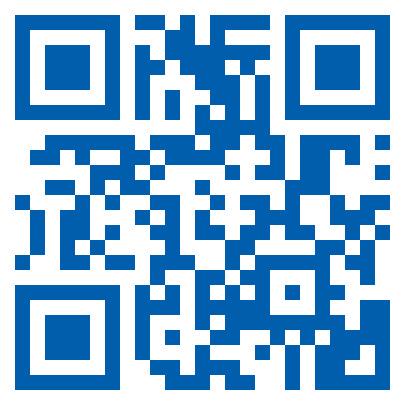
RAILTON, JAMIE RAILTON SALES AGENCY.
Dr. Rebecca Mouncey is a veterinary surgeon and post-doctoral research fellow, currently investigating early-life determinants of performance and economics of Thoroughbred breeding.
Dr. Mouncey discussed how musculoskeletal disease and injury remains the greatest barrier to Thoroughbreds being retained within the industry and realizing their maximum athletic potential, and is likely to have important economic consequences. She explained that lameness/musculoskeletal injury and disease are the most common barriers to performance. The causes of these conditions of developmental orthopedic diseases are fractures and tendon/ligament injuries.
By improving the foals/yearlings strength to withstand training and resist injury, while avoiding trauma, one can help with the prevention of these diseases. Unfortunately, there are still important knowledge gaps. It is possible to optimize musculoskeletal health during early-life with exposure during critical stages of growth and development that changes the distribution of cell types, alters metabolic function and ultimately altering the susceptibility and injury in adulthood.
Postnatally the period of greatest plasticity, response to external stimuli/exposures is during periods of most rapid growth and development. By 24 months of age, the horse is 96% mature bodyweight and 98% mature height and reached peak bone mass. There must be a balance in early-life exercise and activity as

too little will delay musculoskeletal development and too much will cause tissue damage and trauma. We must always consider the animal’s growth, nutrition and exercise as a whole and not mutually exclusive.

SCAN THE QR CODE TO WATCH THE LECTURE ‘RAISING THE FOAL FOR OPTIMAL FUTURE PERFORMANCE’ - BY DR REBECCA MOUNCEY, THE ROYAL VETERINARY COLLEGE.
Abigail Kent MRCVS from Rossdales Veterinary Surgeons, presented an interesting lecture on the diagnosis and treatment of limb deformities in foals. Dr. Kent is very knowledgeable in all aspects of equine elective and emergency surgery and has a particular interest in orthopedics, specifically arthroscopy, angular limb correction and fracture repair.
Limb deformities in foals are developmental orthopedic conditions, that can be subdivided into 2 major groups: 1) angular limb deformities, in which there is deviation, primarily

in the frontal plane, originating at a joint and/or growth plate and 2) flexural limb deformities, in which there is persistent hyperflexion or hyperextension of the limb.
These conditions may be acquired or congenital and the etiology is multifactorial. Early appropriate intervention is the key to the best outcome. Angular limb deformities are relatively common in foals and strategies for management, including surgical techniques, are well established. Early recognition, diagnosis and monitoring are essential in order to ensure optimal outcomes.
In cases of severe deformities that fail to respond adequately to conservative approaches (restricted exercise, splints, corrective hoof trimming and shoeing) other treatments such as timely surgery may be used. Transphyseal screws are effective for the corrections of both forelimb and hindlimb limb deformities. Flexural limb deformities can be treated conservatively with the mainstays of limited controlled exercise, nursing care, manipulation of the foot with trimming/shoes, splinting/casting and pain management.
Surgical intervention is typically recommended when conservative treatment is not effective or for severe or rapidly worsening deformities. The goal of surgery is to release tension in the restrictive musculotendinous unit, allowing for greater stretch and more normal range of motion of the affected joint.

SCAN THE QR CODE TO WATCH THE LECTURE ‘SURGICAL SOLUTIONS FOR LIMB DEFORMITIES & LONG TERM FOLLOW UP’ - BY ABIGAIL KENT OF ROSSDALES VETERINARY SURGEONS.

In conclusion, all the contributors provided the participants a very interesting and illuminating day. This event highlighted the lengths that all stakeholders and the veterinary profession are taking to constantly improve the health and wellbeing of the horses and the health of the race industry.

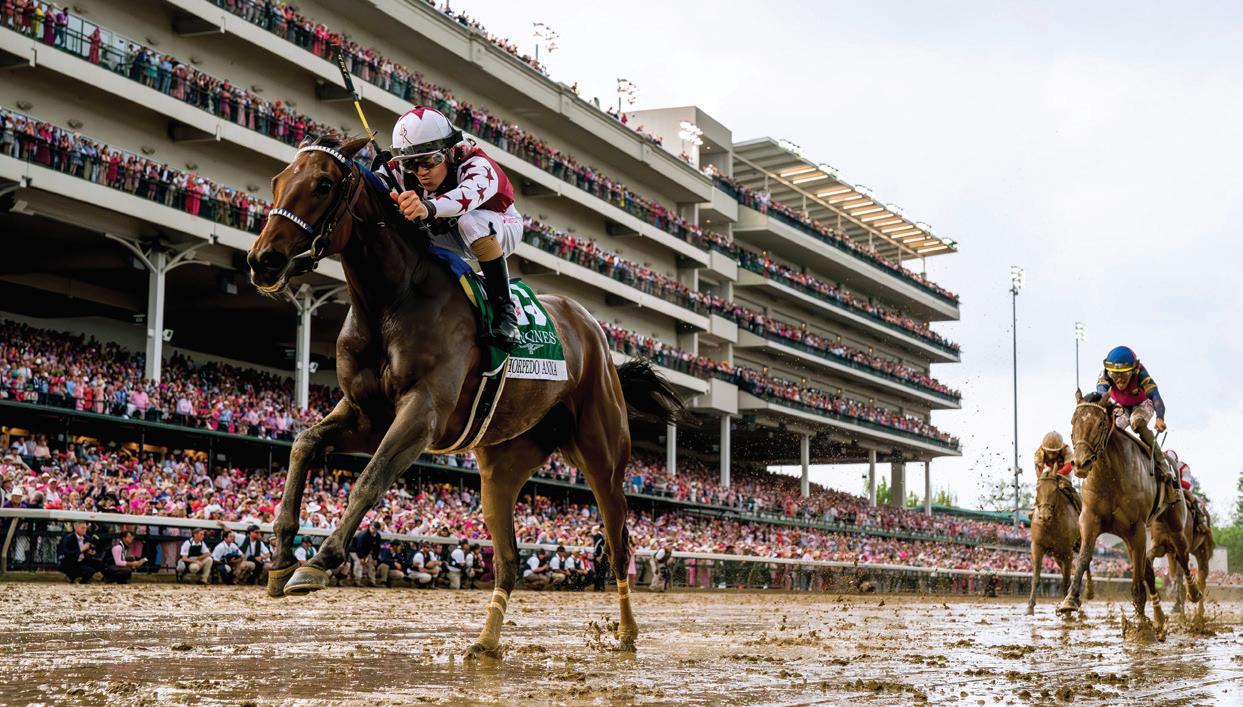
Judy Hicks, who is forever linked to her incredible home-bred three-year-old filly Thorpedo Anna, overpaid for another filly 35 years ago: $10. That filly, Phoenix Sunshine, posted nine wins, nine seconds and three thirds in 47 starts, earning more than a quarter of a million. She was even better off the track, foaling six winners including half-a-million dollar-earner Boss Ego. Hicks calls Phoenix Sunshine “the anchor of my broodmare band.”
Learning from her Phoenix Sunshine purchase, Hicks only paid $6 for the foal of a mare whom the original owner kept eight years later. The foal was Miss Pink Diva, who was one-for-14 and made $111,780. She was second by a head in the 2016 Gr.3 Locust Grove Stakes, but in her next start, the Gr.1 Spinster Stakes, she broke down and had to be euthanized.
Both purchases came from an unpaying owner for boarding his horses at Hicks’ farm. “I’m stubborn,” Hicks said. “I’m a California girl. I didn’t know male chauvinism existed until I moved to Kentucky and that women weren’t allowed to speak. When I had somebody not pay their bill, I said, ‘This isn’t going to happen, so what do I have to do?’”
Hicks began researching state law and found out that if you give a client a month to pay and if you don’t hear from them, you have a legal right to have a sheriff’s sale, which is then advertised. “Nobody goes to them,” Hicks said. “There were two horses. The colt, I just let him go. But the filly I really liked.”
She liked her even more as the years went by.
Now Hicks owns Thorpedo Anna, five-for-six with one second and earnings of more than $1.7 million in her career. If there was an eclipse vote in mid-2024, she’d be a walk-over three-year-old filly champion and a contender for the Horse of the Year.
But Thorpedo Anna would never have been born if Hicks didn’t save her dam, Sataves, when common sense and logic suggested to give up on her.
Hicks has never believed in giving up.
Born in Chicago, Hicks’ family moved to California when she was six. “We had a little farm,” Hicks said. “We started having horses and go-karts.”
She chose horse racing over a career in NASCAR.
She spent five years finishing a double major of biological and animal sciences at California Poly. She wanted to go to vet school at UC-Davis, but didn’t get in.

Through her grandfather’s connections – he knew the president of Texas A & M - she got into vet school there. She didn’t stick. “I was in vet school for six months, cleaning lab cages,” she said. “They had this Great Dane puppy in one of the experimental cages.” When she didn’t see him in his cage one morning, she asked, “Where’s Duke?’” She was told Duke’s remains were in several jars. “They had killed him,” she said.
That killed her desire to be a veterinarian.
Through another of her grandfather’s connections Hicks journeyed to Kentucky and was an intern at Forest Retreat Farm. While she was there, she met Dr. Donald Applegate and Cecil Horne. They were looking for a farm manager at their Mint Springs Farm. That’s where she met her husband, R.W.
In 1983, they purchased 600-acre Brookstown Farm in Versailles. It needed a lot of work, which has never stopped
Hicks from doing anything she wanted. They began boarding Thoroughbreds, then began breeding and racing them.
Sataves, a daughter of Uncle Mo out of the unraced Stormy Atlantic mare Pacific Sky, was born extremely premature.
“She was born six weeks premature,” Hicks said. “She was 40 inches tall. I didn’t weigh her, but she was maybe 60 pounds. A few weeks later, her owner came and saw her. Her hocks were crushed. The owner gave her to me. I said, ‘Let me see if I can keep her alive.’ I named her for Sataves, a Buddhist god.”
Hicks waited three years until conceding to the reality that Sataves was never going to race. “Because of her hocks,” Hicks said. “I bred her to Tourist.”
That foal, Charlee O, won two of 18 starts and earned more than $100,000 for Hicks and R.W.

They bred her back to Fast Anna, a Gr.1-placed sprinting son of Medaglia d’ Oro. Fast Anna’s crop that year was his last. He died of laminitis at the age of 10.
Thorpedo Anna was born on January 27th, 2021. “She was tough,” Hicks said. “She had a mind of her own. She was not an easy foal to raise.”
Trainer Kenny McPeek bought her for $40,000 at the 2022 Fasig-Tipton Kentucky Fall Yearling Sale.
“I didn’t know Kenny,” Hicks said. “I went over and introduced myself. I asked him for 45 percent. All he did was laugh.”
Regardless, she maintained an undisclosed percentage of Thorpedo Anna, joining partners Brookdale Racing, Mark Edwards and Magdalena Racing’s Sheri McPeek, Kenny’s wife.
“I wasn’t familiar with Judy,” McPeek said. “She approached me after I signed the ticket. It worked out.”
Thorpedo Anna’s first race was at Keeneland. “Kenny couldn’t be there,” Hicks said. “He said, ‘you better go because she’s going to win by a lot.’”
She did, by 8 1/2 lengths. She then won an allowance race by nine lengths and finished second by 5 1/4 lengths in the Gr.2 Golden Rod in her final start at two at Churchill Downs.
This year, no filly has been close to her. She won the Gr.2 Fantasy Stakes at Oaklawn Park by four lengths. She captured the Gr.1 Kentucky Oaks by 4 ¾ lengths, the first half of McPeek’s incredible weekend. The next day, McPeek’s Mystik Dan won the Gr.1 Kentucky Derby by a nose.

Asked about the Oaks, Hicks said, “I don’t think I expected her to win, but when she started drawing away, I went crazy. I was hugging Kenny. It was amazing. People said, ‘You don’t realize what you’ve done. The ultimate dream if you own a mare is winning the Oaks.’”
How about winning the Gr.1 Acorn Stakes at Saratoga, too? Despite losing a shoe during the race, she triumphed by 5 1/2 lengths. Her next planned start is the Gr.1 Coaching Club American Oaks at Saratoga July 20th.
“We have yet to ask her to run,” Hicks said. “I think she’s going to go down as one of the greatest fillies in history.”



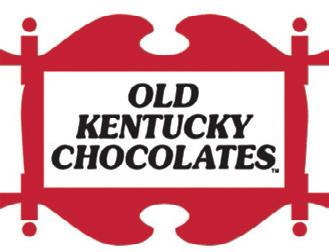

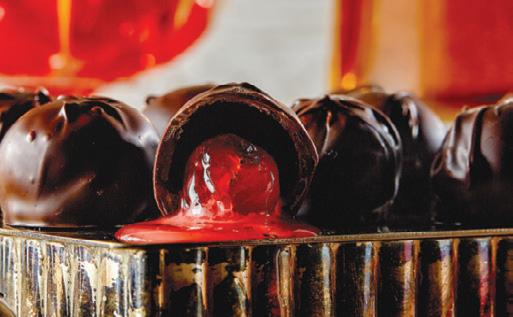


hether you’ve been passionately involved in racing for decades, or was recently lured into the game by your brother, winning a Gr.1 stakes at Saratoga is as good as it gets. Book’em Danno gave six guys from Jersey, who race as Atlantic Six Racing, LLC, that thrill, taking the Woody Stephens Stakes on June 8th. “It was incredible; you had to pinch yourself,” Jay Briscione, the group’s managing partner, said.
WBriscione, a 70-year-old real estate appraiser, began hotwalking at Monmouth Park in high school, then left college (Fairfield University) for one semester to be a groom at Hialeah. “I was in the same barn as Seattle Slew in his three-year-old season,” Briscione said proudly. “I watched him get ready for the Triple Crown. I had never been around horses at all. Being young, it was a pretty cool thing. Once it’s in your blood, it’s in your blood.”
His partner Mark Rubenstein, whose family business was doing municipal revaluations in Jersey, knows that feeling: “I dropped out of law school (Antioch Law School in Washington, D.C.) to work at the racetrack. It was the best time of my life: seven days a week at Hialeah. I was rubbing and grooming three horses. I just loved being around the Thoroughbreds.”
Both Briscione and Rubenstein worked their way up at the racetrack before resuming a more stable livelihood. “As I got older, there were no vacations,” Briscione said. “If I had gotten tied up with somebody at the high-end of racing, I might have stayed. I went back to school and got into real estate soon after college.”
But his feelings for racing never left him completely. “Always, I stayed interested,” Briscione said. “We tried to buy a horse with two friends. It didn’t work out. I owned a couple bad horses. But I always went to the races in the summer and to the big races, the Preakness, the Belmont and the Breeders’ Cup.”
Rubenstein put together small partnerships with relatives, racing as Red Flag Stable in the ‘80s: “We claimed a mare, Cuca’s Lady, for $25,000, at Monmouth in the late ‘80s. She went on to win seven stakes for us.”
Cuca’s Lady became a turf sprinter. She broke the track record at Monmouth Park for five furlongs, and in her next start she set the track record at The Meadowlands for the same distance. Later, she won eight straight races. She finished her career with 24 victories from 70 starts with 10 seconds, 11 thirds and earnings topping $350,000. “She was our big horse back then,” Rubenstein said.
By then, Briscione had put together Atlantic Eight Stable “Jim Ryerson was our trainer and a friend,” Briscione said. “The third horse we owned, Relaunch Lass, won her debut by 6 1/2 lengths on a sloppy track at Monmouth.”
She won an allowance race in her next start at Philadelphia Park and retired with 11 victories, eight seconds and 16 thirds in 80 starts, making $179,673.
“Then we bred her,” Rubenstein said. “She died in foal to Mining. The foal died, too. That was our only attempt at breeding.”
Atlantic Eight lasted until the mid-‘2000s, In 2019, Briscione started Atlantic Six LLC, which included two partners from Atlantic Eight, Jim Scappi, who does equipment leasing, and real estate broker Frank Camassa. Camassa brought along his close friend Jeff Reshnikoff, an attorney. “Jim and I have been friends for 30 years,” Briscione said. “Frank was a hotwalker in Jersey before becoming a real estate agent. Jeff had owned horses before.”
Briscione called up Rubenstein. “I asked him, how about doing it again?” Briscione said.
Rubenstein said, “Jay and I, we’ve known each other for years. He contacted me five years ago when he was reestablishing a racing partnership. He asked me if I was interested. I was out of the business. I said, ‘Sure.’”
Then Rubenstein called his younger brother, Jim, a semiretired radiation oncologist in Fort Myers, Florida, who had never been in the business. “He didn’t know a hock from a toothpick,” Rubenstein said.
He didn’t mention that when he dialed his brother. “He was up front,” Jim said. “He’s done it before. He said, ‘You’re not going to make a fortune.’ Then he pulled out the grandchildren card. They can visit the horses in Monmouth, and in Tampa, where we’re near. I have 12 grandchildren. So I’m in.”
Good decision.
Atlantic Six’s first good horse was Counterfeitcurency (sic), a hard-hitting Jersey-bred who earned $199,152. “He was just retired,” Briscione said, “He’s going to be a show horse in Florida. He gave us the money to parlay into Book’em Danno. When we buy these, we’re basically looking for a Counterfeitcurency and maybe run in Jersey stakes. That’s a
home run for us. When we got Book’em Danno, we knew we might have something.”
They bought the son of Bucherro out of the Ghostzapper mare Adorabelle privately from his breeders, Greg Kilka and Christine Connelly of Bright View Farm and gelded him before he started training.
Mark Rubenstein named the yearling: “I’m a child of the ‘60s, and Hawaii Five-O was one of my favorite TV shows. In quite a few episodes, they got the bad guy and they said, ‘Book’em Danno.’ I have no idea how that popped into my mind.”
Book’em Danno’s trainer, Derek Ryan isn’t known for cranking up his first-time starters. That made Book’em Danno’s debut even more impressive: a 9 1/2 length victory in a Jersey-bred maiden race at Monmouth. He followed that with a two-length victory in the Smoke Glacken Stakes and a 6 1/2 length romp in the Futurity at Aqueduct. He finished his juvenile season by finishing second by three-quarters of a length in the one-mile Nashua Stakes there.
Displaying no intention of sending his three-year-old on the road to the Triple Crown, Ryan picked the seven-furlong Pasco Stakes for his first start this year at Tampa Bay, and he won by 12 1/2 lengths as the 1-5 favorite.
His next start would be in the one-mile $1.5 million Gr.3 Saudi Derby. “It’s shocking to believe that this horse took us to Saudi Arabia,” Briscione said. “Derek had brought this up in September. He had been approached by them.”
All Book’em Danno did was finish second by a head to unbeaten Forever Young. When Forever Young then finished third by a head in the Gr.1 Kentucky Derby, Book’em Danno was flattered. Then Book’em Danno won the seven-furlong $500,000 Woody Stephens Stakes by a half-length at Saratoga June 8th. “Amazing,” Jim Rubenstein said. “I was there.”
That made Book’em Danno five-for-seven with a pair of close seconds. He’s earned $835,625.
“To be in the business for such a short time, I know people put a lot of money into this, put a lot of time into this,” Jim Rubenstein said. “You almost feel unworthy.”

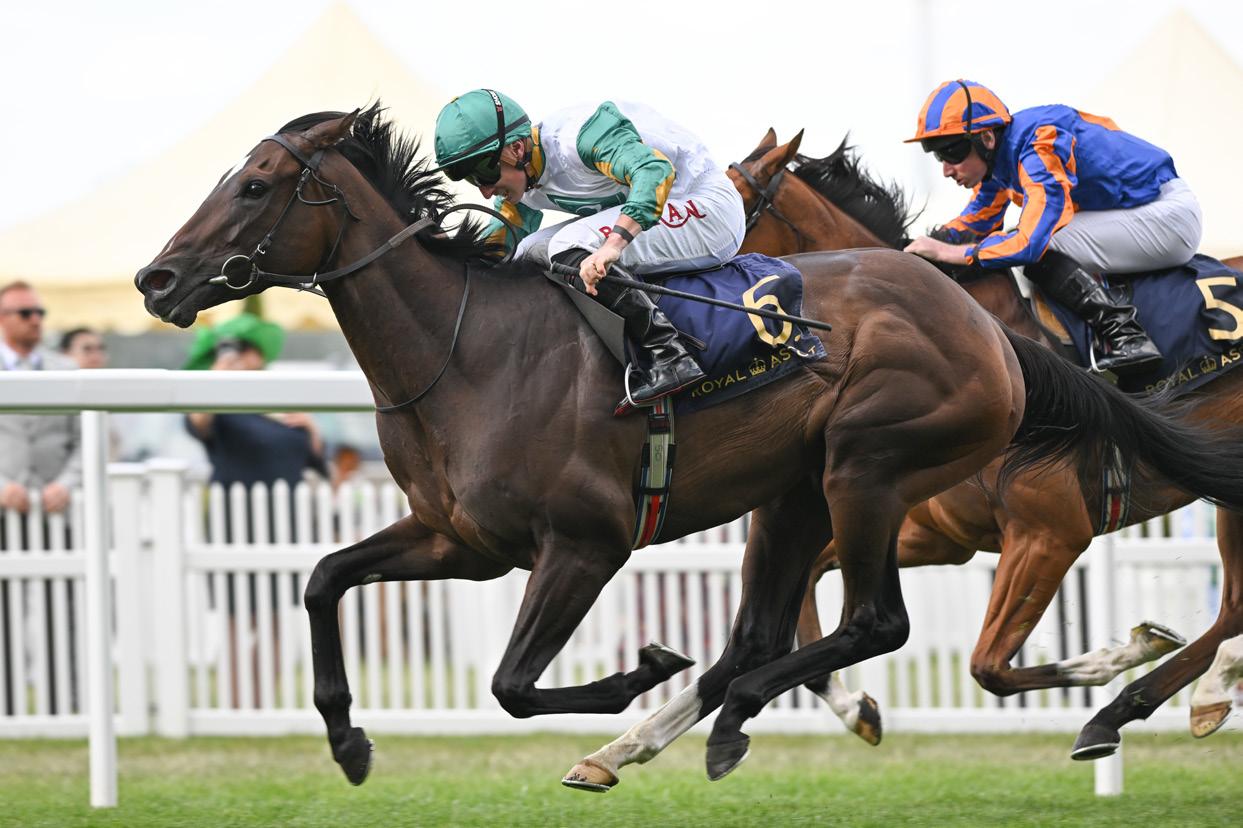
teve and Debbie Weston will never forget the phone call from their daughter, February 14th, 2018, telling them the horrible news of the mass shooting at Marjory Stoneman Douglas High School in Parkland, Florida. Seventeen people, including 14 students, had been killed. Fourteen more had been injured.
SThe Westons, who were at their second home in Saratoga Springs, live in Parkland. They met on blind date at a pizzeria in Parkland. They had named their stable Parkland Thoroughbreds three years earlier.
“You always think it happens somewhere else,” Debbie said.
Steve said, “We were on Route 9 going down to a car dealer. We couldn’t believe it. By the time we got to the car dealer. It was all over the TV.”
Six years later, they still struggle to understand. “Parkland is a great place,” Steve said. “We have very little commercial development, only a handful of stores. It was rated as one of the safest cities of America.”
Are there any safe cities in America now? “It’s happening all over America,” Steve said.
Debbie said, “I don’t think anyone in America hasn’t been touched by gun violence. I think the most important thing is to have people remember Parkland for something other than the shooting.”
The success of their modest-sized stable has people talking about Parkland Thoroughbreds.
Last year, their two-year-old filly Jody’s Pride, who is co-owned by Sportsmen Stable, won the Matron Stakes and finished second by a neck to unbeaten Just FYI in the Gr.1 Breeders’ Cup Juvenile Filly at Santa Anita. At three, she won the $200,000 Busher Stakes before finishing off the board in the Gr.1 Ashland at Keeneland. She was freshened and is back at Saratoga training for her return.
Less than an hour after Jody’s Pride finished second in last year’s Breeders’ Cup Juvenile Filly, Parkland Thoroughbreds and Medallion Racing’s turf star Porta Fortuna finished second by a half-length to Hard to Justify in the Breeders’ Cup Juvenile Filly Turf. Earlier last year, she captured the Gp.3 Albany Stakes by one length in a field of 17 at Royal Ascot, then won the Gp.1 Cheveley Park Stakes at Newmarket. Donnacha O’Brien, the son of Aidan O’Brien, trains Porta Fortuna.
In her 2024 debut, Porta Fortuna finished second in the Gp.1 1000 Guineas at Newmarket.
Her second race this year was at Royal Ascot, where she benefitted from a fine ride by Tom Marquand and won the Gp.1 Commonwealth Cup by one length, becoming a rare repeat winner at the world-famous meet. “It was incredible,” Weston said.
His day got even better moments after the race: “We were on stage and told the King was coming. He came up and shook our hands. And then I was talking with the King for three to five minutes. He was very cordial, really nice. It was amazing, just amazing. There must have been a hundred cameras. It was a dream. So much more than winning a horse race.”
Steve Weston, now 78, could never have dreamed of such success when he got hooked by harness racing decades earlier. “I’ve been going to the track in Detroit since 15,” he said. “Also Hazel Park and Northville Downs. All three are gone. I loved the racetrack. I wasn’t old enough to get in. I had to wait for the last four races when they opened the door.”

After graduating from high school, he and three friends teamed up to buy a $10,000 claimer, Our Stewart. “We won our first race with Our Stewart at Wolverine. It’s always exciting. It doesn’t matter if you have a put of $1,700. It never matters. Even today, if you have a claimer or you’re in a stakes race, when they’re coming down the stretch, it’s the thrill of victory. It doesn’t matter what the purse is.”
Yet he did say this: “One day I want to buy a Thoroughbred.”
Born in Brooklyn, Weston moved to Detroit, then to Parkland in 1989. He partnered with Bob Edwards and Joe Anzalone. After Weston bought Thoroughbreds, Edwards and Anzalone did too. Bob Edwards races as e5 Racing Thoroughbreds and Joe Anzalone as Magic Cap Stables. e5 Racing Thoroughbreds campaigned two-year-old champion Good Magic, the sire of this year’s Derby top contender Dornoch.
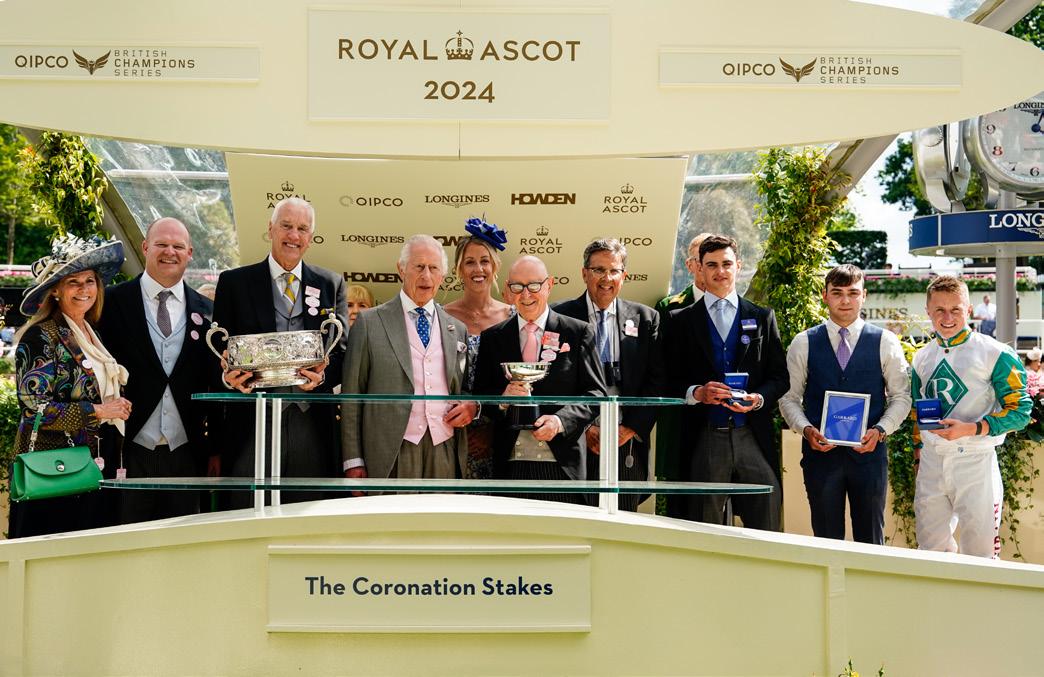
Debbie Weston also has roots in New York. She was born in Syracuse, then lived in Albany. “My grandfather, every summer, went to Saratoga,” she said. “I never knew what it was.”
Now she can’t get enough of horses. Their home in Saratoga Springs abuts the Oklahoma Training Track. “The horses are practically in our backyard,” she said. “It’s a blessing to be there. I fell in love with the horses once I petted one of their faces. Racing is such a small part. The joy is to watch them train, feed them and hang out with them.”
She didn’t begin hanging out with Steve until they met on that blind date. “I was working as a hospital nurse, Steve was a sweetheart. He kept pursuing me. I gave him another chance and I’m glad I did. Steve was widowed several years earlier.”
The Westons began Thoroughbred racing in 2015 and have entered a myriad of partnerships. At last count, there were 50 of them in just 10 years.
They chose Parkland Thoroughbreds as their stable name because of the many horse farms in the area.
Then tragedy forever changed Parkland.
“Fortunately, we didn’t have any children attending, but we knew other people who did,” Steve said. My niece was an instructor and one of her kids was involved. I can’t begin to describe it. It’s a very small community.”
The Westons wanted to do anything they could to ease people’s pain, so they named their gelding - Parkland Strong, a son of Goldencents out of Inceptive by Empire Maker.
In a better world, Parkland Strong would have won the Triple Crown, or the Kentucky Derby or at least one of his nine starts. Trained by Abreu’s brother Fernando, Parkland Strong did post one second and four thirds, earning $28,850.
“He lives with a person who breaks a lot of our yearlings in Ocala,” Steve said. “He has a good life.”
Better horses have followed, but none as good as Porta Fortuna and Jody’s Pride. Steve still doesn’t believe he actually won a stakes race at Ascot two years in a row. “Oh, it was incredible,” he said. “The way British people treated us; we were treated like royalty. Just being there was fantastic.”
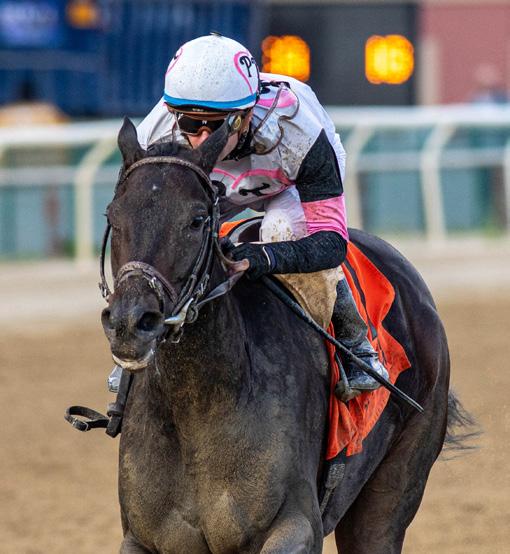
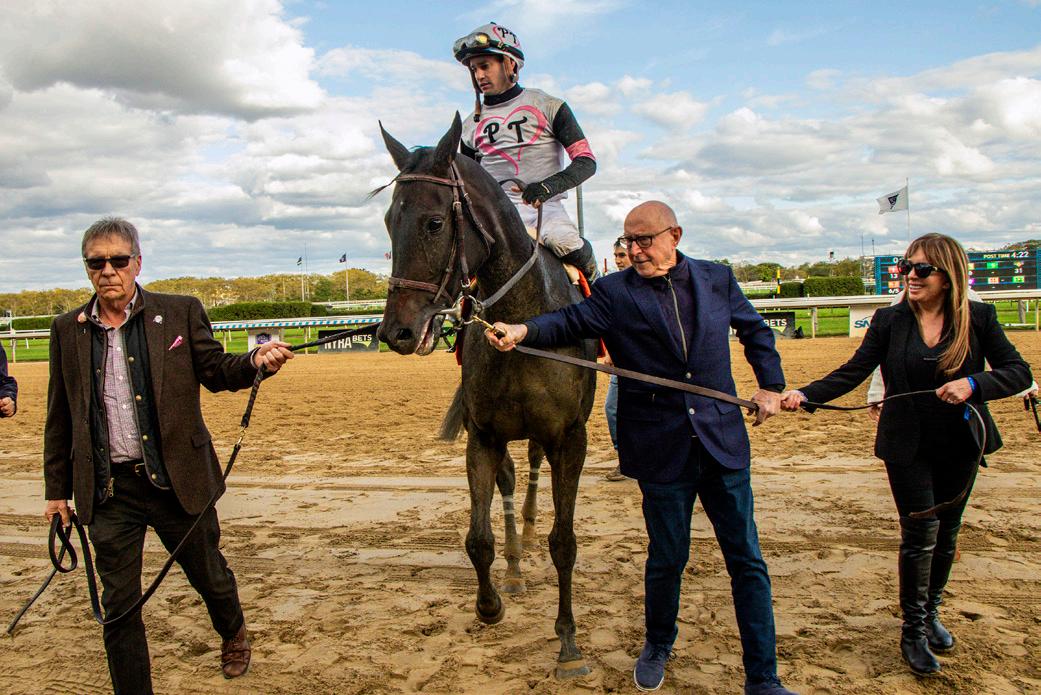





We canvass a cross section of opinions from those involved in racing and breeding in the Golden State.

There is no doubt that horse racing in California is at a crossroads. The closure of Golden Gate Fields in June signaled the possible end of full-time racing in the Northern part of the state. There is a long-shot plan to keep it alive at Pleasanton, but not everyone in the business is routing for success.
In the south, Santa Anita is still only racing three days a week and field sizes are not always impressive. Purses are not competitive with the rest of the country. The track sits on a piece of land in Arcadia that is worth at least $1 billion, so does it really make sense to run a few days a week for half the year?
So, what are the views of those deeply involved in California racing on a day-to-day basis as a way forward?
What follows is a question and answer session with prominent executives, trainers, owners and breeders. There are disagreements and obvious animosity. Although everyone interviewed has the same goal, keep racing in California alive. The solution to problems facing the most populous state in the country, might just be in here. The answers to the questions we posed have been edited for clarity, brevity and to avoid too much repetition.

Aidan Butler, chief executive 1ST/ Racing and Gaming: Absolutely. California is a huge betting state and it’s not just the horse population or purse disparities that separate us from other states that get additional revenue. There is a huge cost of running an operation that is an obstacle. So, putting all of the resources and effort into one area is the only way to go.
Alan Balch, executive director California Thoroughbred Trainers: It’s highly doubtful, given that California is now more an “island” than at any time in at least 50 years. There’s very little chance of alternate circuits (Arizona, Washington) serving as viable or sustainable racing destinations for California breeders. Successful Northern California racing was an integral and vital, if unsung, component of world-class California racing from the 1960s onward.
Bing Bush, equine attorney & owner: That’s to be determined but it’s difficult to envision that. I happened to be at Golden Gate Fields on the last day, I saw a lot of horsemen walking around in a very full grandstand, all thinking the same thing: “I wish all of these people were here during our days and then we wouldn’t be closing down.” I don’t see how Santa Anita hopes to fill that gap. It’s going to be a real challenge I hope we can meet. I’m hopeful but very concerned.
Phil D’Amato, a leading trainer at Santa Anita: I definitely think so. For me, we have the horses, we have the population. I just think we need to improve our purse infrastructure. When you get more money, people will come and owners will be more willing to put horses in the California racing system.
Greg Ferraro, chairman California Horse Racing Board: Yes, I think it can. The problem is we don’t have enough horses, plain and simple. We’ll see how they do in Northern California with the dates we awarded them. I’m hopeful for them but I’m not optimistic. I’m worried that we don’t have enough horses for two circuits. Consolidating everything in Southern California may be the only way we can survive.
Eoin Harty, trainer & president of California Thoroughbred Trainers: If certain powers have their way, we’re going to find out. Personally, I don’t think so. The whole business hinges on breeding. The largest part of the horse population in California is Cal-breds and they don’t all belong in Southern California. If they don’t have a venue to run at, what’s the point in breeding them? And if you don’t start breeding them, where does the horse population come from? The economic impact on the state is huge. If we lose that, the fall is catastrophic.
Justin Oldfield, owner/breeder & chairperson of the California Thoroughbred Breeders Assn.: I think there was a misinterpretation of what a one-circuit system means. A one-circuit system is not defined by fulltime racing in the South and summer fair racing in the North. That is not the definition of a one-circuit system. I think what people mean is a one-circuit system that includes Los Al, Santa Anita and Del Mar and does not include the fairs. The fairs garner a lot more representation from the Legislature and the fan base across the North. I don’t think there is anyone who is saying we should end racing at the Fairs. I think no one would be in favor of a one-circuit system if it means only racing at one track at any one time.
Bill Nader, president & chief executive of Thoroughbred Owners of California: A one circuit system in California would allow the resources that are generated across the whole state be targeted into one single circuit which would effectively make better use of that money and funding. The problem with a two-circuit state like we have now is that if one circuit isn’t carrying its weight, like it is now, it takes its toll on the other region.
Doug O’Neill, a mainstay trainer in California and two-time Kentucky Derby winning trainer: No. The track surface needs a breather throughout the year. I think with training and racing it needs some maintenance to bounce back. I think it’s really important to have some time between meets and that’s where it helps to be racing at a different circuit or track.
Josh Rubinstein, president & chief operating officer at Del Mar: Yes. Nationally the foal crop is about half of what it was 30 years ago so that has affected every state. California simply doesn’t have the horse population to operate two year-round circuits.
Butler: We believe contraction is the best way to stabilize the market. There is only a certain amount of purse money and a certain amount of population. Despite the hardship of the people at Golden Gate, concentrating all our efforts in the South is the only way to keep the state going.
Balch: The unplanned and devastating contraction announced by Santa Anita ownership, without consultation or notice to any of its interdependent partners in California racing, is the single most destabilizing event in California racing history since World War II. Given the contraction of the North American foal crop, particularly since 2008, all track owners and horsemen working together with the regulator and Legislature might have been able to develop a model where it could have been a stabilizing influence.
Bush: I think it will turn it into chaos unless we can turn it into something more attractive than it is today. If we can’t make California racing more attractive, I don’t see how contracting can help it.
D’Amato: As it stands now, it’s looking to be inevitable unless we find another revenue source. You would like to have two circuits. It definitely gives owners more options for varying caliber of horses. But if it has to be, it has to be. We need just one additional revenue source to help get these purses up and allow California to sustain. If we don’t get that, consolidating into one racing circuit is probably the only option that we would still have.
Ferraro: The best way to stabilize the market here is to increase the purses. That’s our problem and the reason we are short of horses is because we can’t compete purse-wise. We don’t have any way of supplementing purses like Kentucky does with Historical Horse Racing. If we had purses that were more competitive with the rest of the country, most of our horse shortage problems would go away.
Harty: I don’t believe so. I believe expansion is the way to save the market. You’ve seen what happened through contraction, small field sizes, people aren’t betting on us, which hurts our handle which just compounds the problem. We need to expand and plan to expand. Hopefully it’s not too late, but without some sort of addition to our purse fund where we can make it more lucrative for people to come to California, we’ve got nothing.
Oldfield: No. Contraction assumes there is a consolidation of not only the tracks but a consolidation of the horsemen and trainers and the employees. The assumption that trainers and owners would go South was probably false and unwisely made. Look at the trainers who have moved South, it hasn’t been a resounding success. To assume that if you close the North that it means a shift to the South is a pretty naive thing to consider.
Nader: It might be the only way to stabilize the market. Now if the North is able to hit its targets and meet the criteria we’ve agreed to then there is no need for contraction. If the North can’t hit their targets, I don’t think we’ll have any recourse but to contract to stabilize the market and secure Southern California and make sure the state of California is still relevant, healthy and has a future.
O’Neill: For us to grow, we need to build on what we have and not shrink what we had. I think the whole industry has done a really good job of being a safer, more transparent sport. And to see tracks closing is not what the whole plan was, or at least I hope it wasn’t. I think the way the sport is going, we should be growing and building and not closing and shrinking.
Butler: You just have to try and be innovative, offer a product that people still want to bet, and continue to try and concentrate on a single circuit and there should be enough wagering dollars in state to keep the product moving forward.
Balch: Clearly, you don’t, unless you develop alternate sources of supplementing purses, for example major corporate sponsorship, or otherwise. You need sources that could only be developed by all track owners and horsemen working together with regulators and legislators in serious strategic planning. Fifty percent of track revenues formerly came from non-wagering sources at the track. The nearly complete abandonment of marketing efforts for on-track business has cost all tracks in terms of profit and compromised California racing’s future.
Harty: We can’t. I don’t see how it’s sustainable. It’s hard enough to attract horses to California in the first place. The level of racing is very competitive. There is a lot more bang for your buck somewhere else.
Nader: We need to find ancillary revenue so we are more competitive with other states that enjoy that advantage. That’s where California needs to be applauded for what it has achieved over the past 10 years without the benefit of a secondary income stream and still remains relevant on a national stage.
Oldfield: I couldn’t agree more that we need other revenue streams for the funding of purses. For horse racing to survive long term, both in the North and the South, we need outside sources of income, whether that’s Historical Horse Racing machines or some other mechanism. If the North were to go, it slows the bleeding but doesn’t stop it. I think the North is in a better position to survive without outside sources of income because of what it costs to raise a horse and race a horse in the North because we’re really not that far off the purse structure we have for the fair meets. Those machines are the lifeblood, not just to purses, but to keep racing in California alive.
O’Neill: It’s a little tricky with the Stronach business model because they own the ADW and the race track. In an ideal world there would be separation there and you would have the people or company that owns the race track try and do everything they can to get people to come out and have a great time, Concessions would be booming and ideally you would build on getting some on-track betting.
Rubinstein: We have to close the purse gap that is widening from states that have subsidies that are supporting the purses. That is the one thing we can do here, increase purses, that would give California a shot in the arm.

Butler: Obviously, getting another source of gaming revenue would make a huge difference in the state. For quite a while we were competitive from a purse perspective, but it’s become more and more difficult to find another source of gaming revenue.
Balch: Immediately convene the leadership of all tracks, labor, agriculture, owners, and trainers’ groups, for no-holds-barred strategic planning, to include ways and means of communicating with California’s legislative leadership, to understand and save the massive economic impact on this industry in California. It almost certainly cannot be saved without government assistance and stimulus.
D’Amato: We’ve got the weather and great training facilities. Santa Anita just added a synthetic training track to handle all weather situations. Del Mar is perennially a great racing circuit. So, to me, we just need bigger purses. We’re pretty much the model for what HISA based its safety structure on. California to me is on the forefront of all those things with the exception of bigger purses. If we get money, people will come.
Ferraro: If we can come up with something like Historical Horse Racing our worries would not be over but would be decreased.
Oldfield: I don’t think there is a single person I’ve talked to, North or South, who doesn’t agree those machines are absolutely necessary. I think that should be a rallying cry from every stakeholder in the North to every stakeholder in the South, from the horsemen to the trainers, we need to get behind. Why aren’t we rallying around this instead of sitting in CHRB (California Horse Racing Board) meetings arguing about dates? Why are we not working collectively on a strategy to get these machines? If there is one thing this industry needs right now is unity and the industry needs to unify behind that.
O’Neill: We need to rebrand to really celebrate the men and women who work alongside horses for a living. It’s just so important to get that mindset back that people are actually working and it’s not computers and gadgets that are doing all the work and that humans are actually getting their hands dirty. These are really a bunch of amazing men and women who have chosen to work alongside horses for a living and hopefully we never lose the hands-on approach that is so important. Our sport provides a lot of jobs and housing for thousands of people and that’s really important.
Butler: If you look at the safety record for one and the operational performance without supplemental revenue we can be pretty proud of ourselves to where we are now. California has shown it can operate on a globally high level of safety and quality without having lots of cash coming in to help things. We should be pretty proud of that.
Balch: Very little if anything beyond what it’s not responsible for: enormous potential markets, great weather year-around, and unrivaled facilities, mainly Del Mar, given the deterioration of Santa Anita and the demise of Golden Gate.
D’Amato: I think in terms of how Santa Anita and Del Mar take care of their owners, I think they go above and beyond in our racing jurisdiction. I think it’s a little bit tougher in other states. For what we have to offer, we try to roll out the red carpet for our owners and offer a really nice place to run your horses.
Ferraro: The quality of the racing surface and our effort for safety and soundness. HISA basically copied our rules. So our health and safety rules are better than anyone.
Harty: I think we have better venues than anyone else. There is not a prettier race track than Santa Anita. Del Mar offers the summer vacation package.
Oldfield: The one thing I can say about California racing is we’ve got a great fan base. California as a whole is an agricultural state, the largest in the country. The economic driver of the equine industry in California is largely horse racing. People tend to forget about the agricultural component to that, it’s huge. We would be dead without our Cal-breds, which also produces jobs and livelihoods for many people and in many cases provides an economy for smaller communities in California.
O’Neill: We are so blessed we can train day in and day out throughout the year and I think you have far fitter horses that come from California than a lot of the country. That’s the one thing that no company or no family can screw up. We have the best weather in the world.
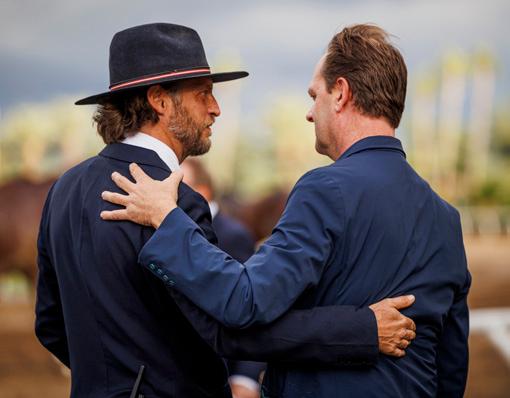
Josh Rubinstein
Butler: We don’t think so. If we can find additional sources of revenue that’s going to really, really help. You get the purses, you have a far better chance of getting the horses. There is much more to the ecosystem when you’ve got the purses. We, as a company, want to make it as good as we can for trainers. We think of them as our customers and we want them to be successful. We’ve just got to try.
Balch: If you say you can’t, you’re already done. If you say you’ll try, you’ve at least begun. No one person or one entity can do anything of true impact alone. It takes the entire interdependent industry together.
Ferraro: I hope not. I think the next year will tell. We’ll see how Northern California does. If they succeed that will be a positive thing. If not, then we will have some worries. If Santa Anita and Del Mar can keep a decent racing program going that would help. If we end up with six-horse fields and two days or racing instead of three, that’s going to be a terrible turn.
Oldfield: Absolutely not. You go to the fairs and they are packed. There is an appetite for horse racing in California. We’ve just got to do a better job of figuring out how to market that. You can’t determine whether what happened at Golden Gate over the last couple of years or 10 years is indicative because they did not market the place. They had a tree that covered up their sign and it wasn’t until it was in the press that the racetrack was closing down that people started to show up. You can’t use that standard to see if there can be success because what was done wasn’t that good. There is an absolute appetite in California for horse racing and we need to tap into that. If the machines were to come in tomorrow, we wouldn’t be talking about if the sport will survive but what are we going to do with all this money we are bringing in.
Nader: The jury is still out. We’ve established the metrics that CARF (California Authority of Racing Fairs) and the CHRB have agreed to and it’s too early to tell because we don’t have any data to pass judgment. It’s on the brink. As the North has stated on many occasions, “Give us a chance.” But I do think the chance comes with the obligation that the industry has to come together and make the call. It can’t be something like the North would be able to go forward with proving its worth in the final quarter of 2024 because the balance is too delicate with no secondary income in the state and the fact that both circuits are linked to each other to create a sustainable future.
O’Neill: Absolutely, not. I think it can be reversed in a positive way very quickly. I would love to see us turn someplace like Santa Anita into an equestrian center. If you could bring in that equestrian label, I think it has a better brand and reputation. And you would have a bigger pool of horse lovers and I think we have plenty of room here to do just that. If I hit the lottery and was president of Santa Anita for a couple years, my approach would be to focus on jobs and housing. I’d put new dormitories here, which gives you a bigger pool of horse lovers here who would work alongside horses for a living. I’d turn the back parking lot into an equestrian center or at least a mini-version of one.
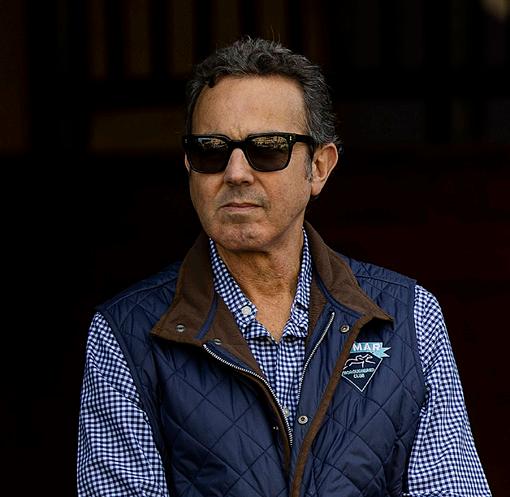
Rubinstein: Absolutely not. California is a state with over 40 million people. We have loyal fans and a rich history of Thoroughbred racing at the highest level. We have California people betting on the races, we have California owners at the sales. I talk to many high-level people and they all agree that California is essential to the long-term success of the industry.
Butler: We’re not really looking at it in that way. We’re just looking to see what we can do at the moment to improve racing and the ecosystem around the track that involves the trainers and owners. We need to find that fine line where we can get everything we need to be done here.
Balch: Absent serious strategic brainstorming, less every day.
Bush: The question hinges on the success of Santa Anita. I think that question could best be answered by Belinda Stronach.
Ferraro: Sometimes it feels like we have a couple of days. I think we’ll know by the end of this year how bad a shape we’re in.
Oldfield: I think we still have time because we have the ability to do something we haven’t had in years and that’s chart a new course in the North. The North is not going to be the savior of the South but we have the ability to demonstrate that things can work and we can do things better and we can set those examples for other parts of the state. The future of racing is publicly held companies. What does that mean for Santa Anita? I don’t know.
As a horseman in California, I absolutely want to see Santa Anita flourish, but I don’t know how that intersection of public and private could work to keep Santa Anita alive.
Nader: It would be advantageous if you could start with a clean slate and start over, but that’s not going to happen because of the complexities in the state and the way things are done. The key would be to get the secondary income stream and then chip away at the building blocks underneath to create a better structure. But you need that big change at the top.
Rubinstein: We have time and we’re focused on what we need to stay competitive with purses. I do think it’s important for us to stop and take a breath and look at the new dynamic without Golden Gate Fields. Losing Golden Gate changed the dynamic significantly.
Butler: We’ve had numerous conversations with the TOC (Thoroughbred Owners of California) and they seem extremely supportive and seem to understand exactly what needs to be done in California. We are a little bit disappointed in the organizations that really don’t seem to grasp the amount of investment we continue to make to operate racing in California.
Balch: There simply aren’t any. Even Santa Anita’s decision to make a multi-million dollar “investment” in a synthetic training track was made in a vacuum, without considering other potentially more important and lasting changes. Other commitments made at the time for California breeding stimulus and major backstretch improvements, have been ignored.
D’Amato: I see my owners continue to buy horses from all over, not only inside the country but outside of the country, and continue to funnel them into California. We still have that going for us despite the disparity of purse money with Kentucky, Arkansas and New York. But as things start to go in opposite directions that window could change.
Ferraro: The loyalty of the horsemen here, and that Kentucky and the others are beginning to realize that they need California for them to be successful as well. Enthusiasm from trainers who want to make it work, that’s the best thing we have going for us.
Harty: The only optimistic signs are rumblings and rumors that the attorney general is looking into and searching for ways we can shore up our purse accounts. I was optimistic seeing the CHRB offering Northern California a lifeline. They are very, very small victories. We’re in a huge urban market. If Southern California can’t make a go of it, who can?
Oldfield: The one thing that is very optimistic is when Golden Gate announced it was going to close, there was this idea that everyone would scatter to the wind. But ultimately the horsemen in Northern California united more and better than I’ve ever seen. That alone was very optimistic and heartwarming. That gave me a level of hope about this industry.
Nader: It’s a huge state with so much importance nationally. We’ve got tremendous bandwidth as far as our buying power and our betting power not just in California but across the country. We’re over 20% of the national handle. The race tracks are so beautiful, the climate is great. The number of races that are carded on the turf that can actually run on the turf is high. It’s very conducive to horse players because of its reliability.
O’Neill: Closing day at Santa Anita you had 11 races on Saturday and 12 on Sunday. That’s optimistic. There was a record handle this year at the Kentucky Derby. That’s an optimistic sign.
Rubinstein: The progress of safety and that the Breeders’ Cup will be in California three straight years. The community, here at Del Mar, supports racing and the business leaders know how important racing is to the local community. On the racing side, Del Mar’s product has been as good as anyone’s over the last two years.

Q.Can breeding in the state be sustainable with fewer Cal-bred races?
Butler: The breeders have been absolutely brilliant considering the circumstances. We’ve got to continue to offer a wide variety of Cal-bred races so we can give them a reason to continue their operations. The breeders have been working with us and understand what needs to be done and to try and get this fixed.
Balch: The issue is incentivizing breeding in California, wherever the Cal-breds run, whether in restricted or open company. California-bred Thoroughbreds comprise the critical population of horses running at all California tracks, in all races except unrestricted graded stakes. California racing simply cannot be sustained without those horses filling races, especially overnights, since handle on overnights is what funds stakes purses.
D’Amato: Near the end of the Santa Anita meeting, there were 20 horses entered in both the 2-year-old Cal-bred girl and boy races. That’s a really good sign the California breeding industry is still going in the right direction. I don’t think we can survive as a circuit in California without a very strong Cal-bred program.
Ferraro: No, it can’t be. They have to be able to produce a certain number of horses to be viable. If there is not enough racing, there is not enough calling for those horses. Otherwise, you can’t sustain the breeding industry.
Oldfield: The awarding of dates by the CHRB, stabilized the breeding industry. A lot of people didn’t know if they were going to breed at all in California. When those dates were awarded it gave people hope to continue and breed. I don’t think racing in the state can be sustainable without Cal-breds. Most of the horses that run in the North are Cal-breds. If you look at the races that card the most horses, those are Cal-bred races. If Cal-bred races were to go away, it would have a devastating impact on racing and the horse population.
Nader: Yeah, I think it just has to be managed well. You just have to be smart and understand. The number of foals in California was 3,800 in 2003 as there are 1,300 today. There has been plenty of contraction and if there would be more it would be unfortunate. But in the end, if it’s managed correctly while still maintaining the quality of Cal-breds, I think we would be OK.
O’Neill: No. That part of California racing needs to be tweaked and fixed. I don’t know where they come up with the money to invest in the programs. It’s working on the negative as it is. If I had a genie and one wish it would be to have a guy like Paul Reddam to run the track. You would see an instant turnaround. He has that kind of business mindset that people would be tripping over each other to get into the track. There are people like that who just don’t fail. The Rick Carusos of the world, and if they do, they don’t fail long. I would love for a guy like Paul Reddam to own a track like this for a year or two and see what would happen.
Butler: It’s really improving the purses which will allow us to improve the inventory, which improves the betting.
Balch: Saving, incentivizing, and stimulating California breeding. All you have to do is compare the behavior and commitment from New York, New Jersey, and Kentucky to racing. It demonstrates the critical importance of governmental action in a state-regulated industry like ours. Sadly, that regulatory/legislative constituency in California, which was once the hallmark of attention and education by California tracks, owners/trainers, labor, farms, agriculture, etc., was largely and effectively abandoned once California track ownership began evolving in the late 1990s.
Bush: Purses, perspective and the image of horse racing with our younger generation. We need to figure out how to get influencers involved. And get them to understand how much love goes into the care of these horses by people who have a passion and a bond with those animals.
Ferraro: The size of our purses. All of our problems stem from that one thing. The purses aren’t high enough so we don’t have enough horses, so we can’t run enough races. The public recognizes when you have a good race card, they come out. But when you have a lot of ordinary race cards, like we’ve suffered this year, they just won’t show.
Harty: The purses and the breeding. If better minds than I, like the California breeding industry, can get together with other

Western states, so instead of it just being Cal-breds, New Mexicobreds, Arizona-breds, Washington-breds, Oregon-breds. They do that in other states, so it’s not a new idea, but it would help incentivize racing in California.
Oldfield: Most important issue is an outside source of income to address the purses. It’s something that everyone can unite behind. Not a single stakeholder would disagree with that. It would put California on a level playing field with other states.
Nader: I’ll speak on behalf of the horse player who looks to California racing and recognizes what it brings to the betting population. We have to make sure the product hits the brand and reputation from the expectation of horse players, the competitiveness, the field sizes and meet the expectations of horse players. We have to maintain our standards and make sure our purses and field sizes respect the great reputation of California.
O’Neill: The horseman moral is just about as low as I’ve seen it. I think we need to boost that up and what would boost it up is knowing that something is in the works that indicates we’re trying to build on-track business and on-track handle.
Rubinstein: We’ve obviously been on a very good run with safety and we can never be complacent with that. Business side we need to secure supplemental revenue sources.


You’ve got to be kidding. The list would be too long and you will not have enough room to cover it in one page. You’ve got to find the talent; you’ve got to find the help; you have to keep your owners happy; you have to find the right races. The list is endless. It’s not getting any easier. That’s all I can tell you. In 2024, compared to twenty years ago, it’s not a one-man job anymore. It’s a team job now. It cannot be one individual. It’s got to be a team, I’m very lucky. I’ve got a great team.

The most difficult thing about training is keeping horses racing sound. They’re athletes, of course, and they get injured. We have to put them in the best situation we can. Keeping them from getting injured is a difficult task.
The most difficult aspect of training would probably be the human resources, managing people’s expectations and things like that. I would say that the animals are the easy part of the business.

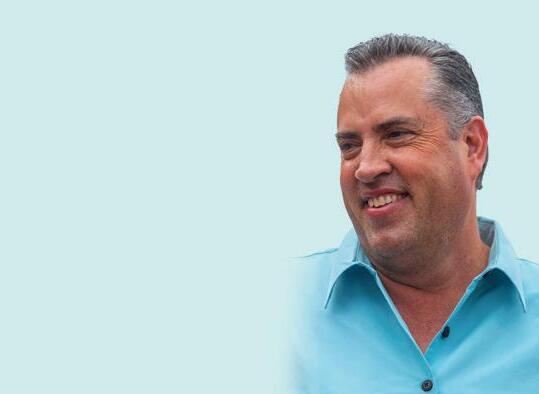
The horses don’t talk back. They can’t speak for themselves. You have to be a good horseman, always do the right thing by the animal. Dealing with the animals who don’t speak back to you is the tough part of training. You’ve got to be inquisitive about things and always put the horse first. It can be a difficult task at times. You have to be in tune with the horses.



800-821-4557 abacusanimalflooring.com
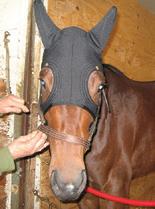

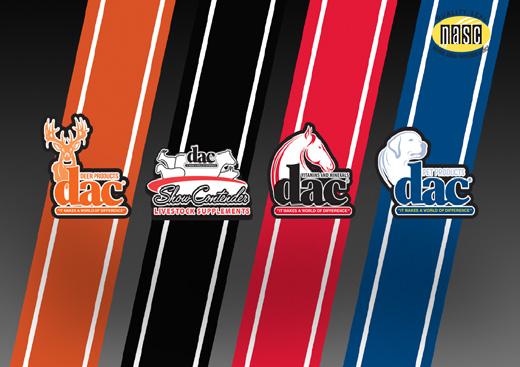




FPD is considered a leader in bringing groundbreaking products and service to the farrier industry as a wholesale distributor of farrier and equine products. FIND AN FPD DEALER NEAR YOU farrierproducts.com/locations • (800) 468-2879
farrierproducts.com/fieldguide facebook.com/FarrierProductDistribution youtube.com/farrierproducts • instagram.com/fpdinc

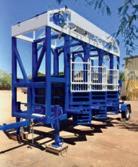

Contact: T: DianeFleming(602) 524-8437 Dave Russ (602) 418-1735 www.truecentergate.com

“EquineMortality, ProspectiveFoal,StallionInfertility” “Fall of Hammer,Claiming, Liability, Farm Packages”
Contact: Anya Sheckley 189 JohnnyCakeHollowRd. Pine Plains,New York 12567 Tel: 646-872-6843 Fax: 518-398-5143 Email: info@hammertowninsurance.com Full Mortality, Infertility, ProspectiveFoal Claiming, Surgical/Medical,Liability,Farm

Website: www.niallbrennan.com Telephone: Office 352 732-7459 or Training Centre 352 629 3994 Email: nbstables@aol.com















I think the most difficult aspect of training for almost all trainers is the quality of the horse, trying to get their hands on a good horse. Now, once I have that good horse, I don’t think there’s anything difficult about training a good horse. A good trainer, and there are a lot of them, knows how to train. I can only hope that I’m on the same page as my client. That’s where I want to be. The client and the trainer can’t be feuding and fighting about where he is going to run and the details of all that. The horse will feel that.
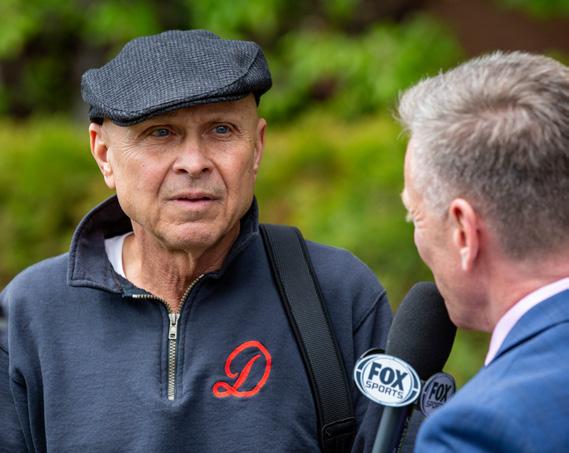

Where do I begin? I would say the most difficult aspect of training is obtaining new owners and keeping the owners you have happy. It’s a very competitive industry, and there’ll always be somebody that seems a little bit more attractive than you do. So you have to constantly deal with that, you can never rest; you can never turn your phone off. You need to appease a disgruntled client or attract a new one.
(Laughs). Honestly, it’s probably dealing with all the different personalities in the industry. Each owner handles good news and bad news differently. Your help might not like the way you say something. One guy’s fine with you yelling at him; the other guy’s not. In every aspect of the business, there are different personalities.


Overall, probably the administration work. Managing the regulatory and administration of the business. With horses, I don’t think there is one. Just be patient and do the right thing every day.
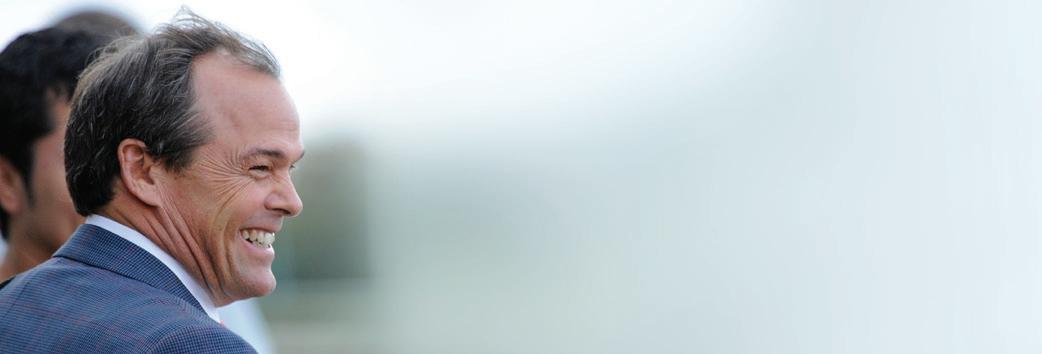
That’s an interesting question. I think the most difficult thing is to run it as a business model that actually doesn’t cost you money. It’s a poor business model to begin with. For all the time and effort, if you just look at what it takes to train horses, the increasing labor costs, the increase of feed price, it makes it very difficult to train a horse and break even. It’s basically a negative cash flow pattern. That to me is the most difficult part of the business. I think the biggest problem that we face as trainers is trying to be somewhat cost effective. I think that’s why a lot of people are dropping out. It’s very tough to run things the proper way.

breeders! Are you paying attention? Virginia-breds earn bonuses for first, second and third
in North America! In 2023, payouts were 34% of the purse earned! And our Breeders Fund is growing. Get your mares to Virginia by September 1st and stay through foaling for your 2025 foal to qualify. (Exceptions made for mares

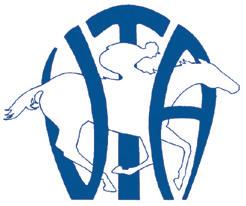
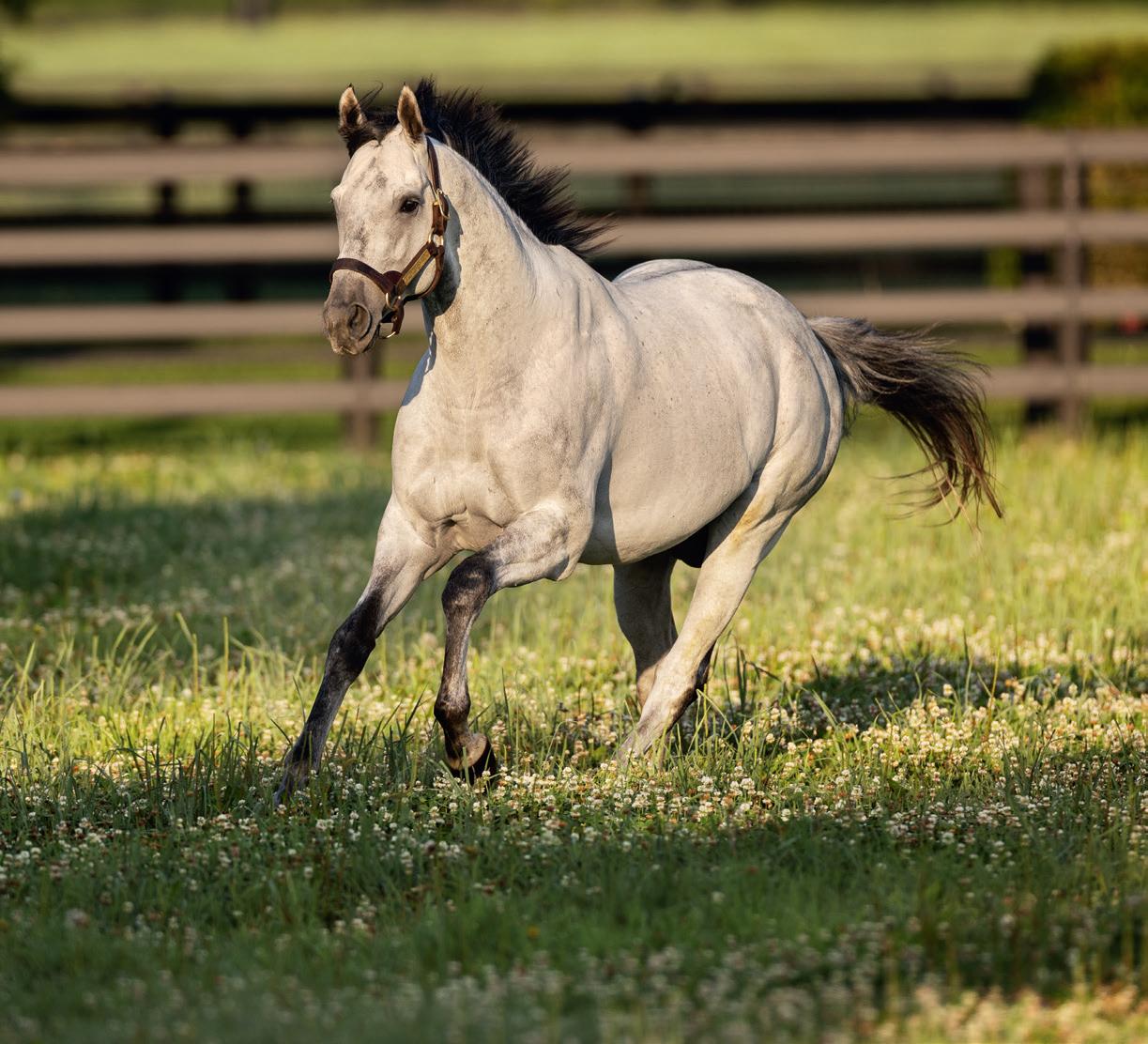
The two-time Eclipse Champion and four-time G1 winner, Essential Quality. He’s already the leading freshman at the sales: just imagine! More yearlings sell at Saratoga – early offerings made $572k in Japan and $225k at F-T July.
